Battle of the Somme

"German defences penetrated for 16 miles" and "The great advance - official". These were two of the optimistic headlines with which the Saturday Telegraph of July 1st, 1916, broke the news to Luton readers that what would become known as the Battle of the Somme had begun - 141 days of unprecedented bloodshed that would cost many Lutonians their lives.
Pictured above are five Lutonians who gave their lives on the first day of the Battle of the Somme on July 1st, 1916. Left to right: Pte Frederick Armstrong, Pte Frederick Clarke, Pte Stanley Fensome, Sgt Percy Rickard, Pte Lionel Worsley.
The stories of these and other Lutonians who gave their lives in the Battle of the Somme between July and November 1916 will be added below. Simply click on a name to open a link. This is an ongoing project and further stories will appear as they become available.
JULY 1st, 1916
Pte William Frederick Armstrong
Rifleman Henry Oliver Philip Foster
JULY 2nd, 1916
JULY 3rd, 1916
JULY 5th, 1916
JULY 6th, 1916
JULY 7th, 1916
JULY 10th, 1916
Pte Charles Webb (Possibly July 9th)
JULY 11th, 1916
Pte Ernest William Thomas Groom
JULY 12th, 1916
JULY 15th, 1916
JULY 16th, 1916
JULY 17th, 1916
JULY 18th, 1916
JULY 19th, 1916
JULY 22nd, 1916
JULY 23rd, 1916
JULY 24th, 1916
JULY 27th, 1916
JULY 30th, 1916
JULY 31st, 1916
AUGUST 1st, 1916
AUGUST 3rd, 1916
AUGUST 5th, 1916
Sec-Lieut Richard Norman Butcher
AUGUST 8th, 1916
AUGUST 9th, 1916
AUGUST 13th, 1916
AUGUST 18th, 1916
Rifleman William Ernest Ratcliffe
AUGUST 19th, 1916
AUGUST 24th, 1916
Gunner Montague George Fountain
AUGUST 30th, 1916
SEPTEMBER 1st, 1916
SEPTEMBER 3rd, 1916
SEPTEMBER 4th, 1916
2nd Lieut Richard Reeve Emmens
SEPTEMBER 5th, 1916
SEPTEMBER 9th, 1916
SEPTEMBER 10th, 1916
2nd Lieut Alexander Pigott Wernher
SEPTEMBER 11th, 1916
SEPTEMBER 12th, 1916
SEPTEMBER 15th, 1916
SEPTEMBER 16th, 1916
SEPTEMBER 18th, 1916
SEPTEMBER 22nd, 1916
SEPTEMBER 23rd, 1916
SEPTEMBER 24th, 1916
SEPTEMBER 25th,1916
SEPTEMBER 26th, 1916
2nd Lieut William Samuel Scruby
SEPTEMBER 27th, 1916
SEPTEMBER 28th, 1916
Sec Lieut Herbert George Merchant
SEPTEMBER 29th, 1916
OCTOBER 1st, 1916
Rifleman Frederick Horace Rookwood
OCTOBER 4th, 1916
Pte Archibald Odell (or O'Dell)
OCTOBER 12th, 1916
OCTOBER 18th, 1916
OCTOBER 21st, 1916
Rifleman Alfred John Stanley Bruton
OCTOBER 23rd, 1916
OCTOBER 24th, 1916
OCTOBER 25th, 1916
OCTOBER 26th, 1916
OCTOBER 27th, 1916
OCTOBER 28th, 1916
NOVEMBER 4th, 1916
NOVEMBER 13th, 1916
Sub-Lieut Eric William Squires
NOVEMBER 14th, 1916
NOVEMBER 18th, 1916
2nd Lieut Charles Frederick Burley
Sapper Clarence Sidney Ellerd How
NOVEMBER 21st, 1916
NOVEMBER 24th, 1916
NOVEMBER 25th, 1916
DECEMBER 6th, 1916
12 hours trapped bleeding in a cellar
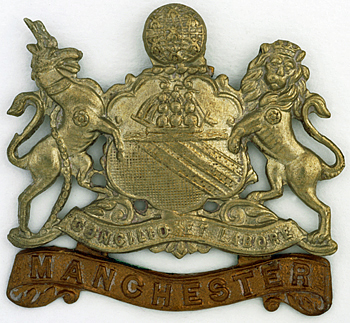
Among the Luton lads wounded in the "Push" in France and Flanders is Pte Arthur R. Edwards, 8133, 17th Manchester Regiment. He had been in Manchester for some years when he enlisted, but prior to going to Cottonopolis he was at Vyse, Sons and Co Ltd, Luton. He was employed in straw trade by Messrs Wilson, Bothamley and Co, of Manchester, and was therefore constantly in touch with Luton.
He is 23 and single and is a brother of Mr Will Edwards, newsagent and vendor of The Luton News and Saturday Telegraph and "programme boy" at the Town football ground. Writing to his brother from St Mark's Ward, St Bartholomew's Hospital, Chatham, Pte Edwards says:
"Just a few lines to put that dear old head and heart of yours at ease, for I know that you will be worrying as to how I am. I am thankful to be able to say that I am fairly well - not a great deal of pain.
"I have a bullet wound right through my right leg, about eight inches above the knee. It has made rather a nasty wound to look at, for it seems to have been an explosive bullet. I have a rubber tube right through my leg. Thank God it did not catch the bone. All my bones are as before - that's what I think, anyway.
"I suppose you got my field card all right to say that I was wounded. As you see, I have managed to get to dear old England with it. I landed this morning. I would have liked to have been a bit nearer, but hadn't a chance. Anyhow, I am sure we ought to be thankful to be alive.
"It's marvellous how I kept my reason. Awful! Awful! All the boys dead all around me...but how they did it! Grand! We had to go and take a village nearly a mile and a half away. I was among the first 50 in. The village was Montauban.
"Well, the 17th Manchesters did it. I was shot when right through at the other side of the village, about 2.30 on Saturday afternoon. For the next 12 hours I lay in a bit of a cellar, shells dropping all around. I was nearly buried alive and my right leg was bleeding fearfully, and no one to take me away.
"At about 2 o'clock on Sunday morning, I decided to try and get back to our lines. Anyhow, I won't trouble you with how I did it. God! One and a half miles with a hole through the leg. Anyway, here we are, as merry as a cricket and very little pain, really, so don't worry."
Pte Edwards' brother, Horace, was serving with the 1/5th Beds Regiment in Egypt.
[The Saturday Telegraph: July 8th, 1916. Illustration: Wikipedia]
- Deejaya's blog
- Log in or register to post comments
2nd Lieutenant Alexander Pigott Wernher
Title (Mr/ Mrs/ Capt/ Rev etc):
First name(s):
Surname only:
It was reported in the Luton News on 21st September 1916 of the death of 2/Lieutenant Alexander Pigott Wernher, youngest son of Sir Julius & Lady Wernher.
Alexander was born in Hambledon, Surrey in 1897. At aged 4 in 1901 he was living at Luton Hoo Mansion with his brother Harold under the care of their German governess & 27 servants.
By 1911 he was boarding at Eton College in Windsor, Berkshire. It was whilst he was studying at Eton when war broke out & in March 1915 aged 18 he enlisted in the Royal Bucks Hussars. When returning from East Africa in April 1916, he transferred to The Welsh Guards & was sent to the front. He saw action at the Battle of Loos & the Battle of Delville Wood & it was during this battle, east of Longueval on the Somme that he was shot & killed.
He is buried in the Citadel New Military Cemetery, Fricourt, Somme, France in plot 2, row A, grave 5. At the request of his mother, Lady Ludlow, the words 'His sacrifice was the nature of his love for England' are inscribed on his cross.
There is a plaque to his memory on the family mausoleum which is in the Holy Trinity churchyard, East Hyde, Bedfordshire.
Service or Civilian?:
Regiment:
Medals Awarded:
War time / or Pre War occupation:
Place of Birth:
Place of Death:
Grave Location:
World War I Address:
Files:
Individual Location:
Classifications:
Images:
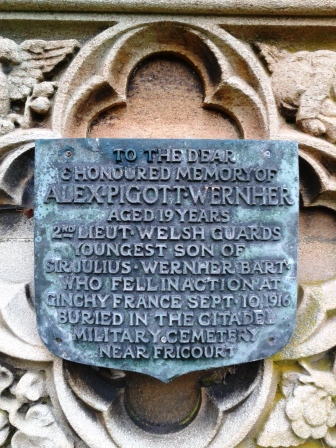
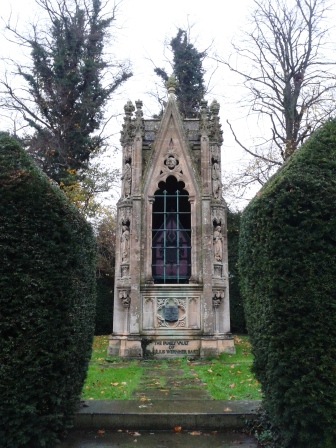
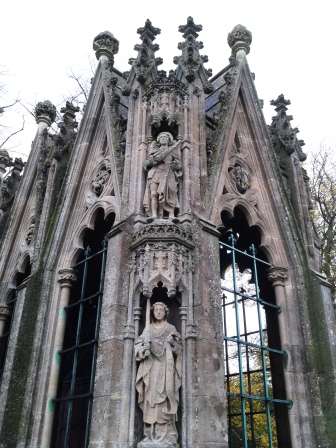
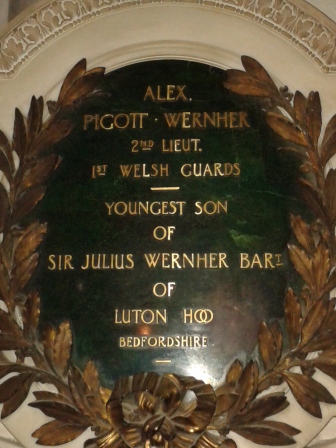

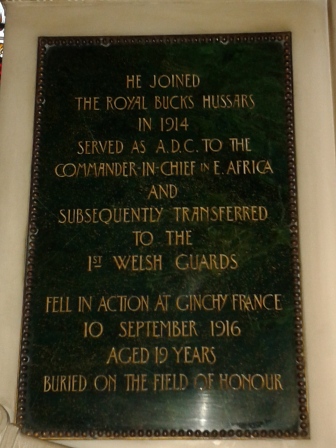
Connects to:
Year of Birth:
Month of Birth:
Day of Birth:
Year of Death:
Month of Death:
Day of Death:
Most Relevant Date:
2nd Lieutenant Arthur Haworth
Title (Mr/ Mrs/ Capt/ Rev etc):
First name(s):
Surname only:
Second-Lieut Arthur Haworth, King's Liverpool Regiment, attached to the Machine Gun Corps, was killed in action rallying his men against a German counter-attack on the Somme on July 19th, 1916. He was aged 20.
Born in Sowerby Bridge, Yorks, in 1896, he spent his childhood in Luton and attended Luton Modern School, becoming a member of the Old Lutonians Club. His father, Albert, was a machine tool manufacturer who brought his family from Yorkshire to Luton soon after Arthur, their second son, was born. They first lived in Cardiff Grove and later at 39 Brook Street until shortly before 2nd-Lieut Haworth's death.
Arthur Haworth had enlisted as a private in the King's Liverpool Regiment early in September 1914 and left for France on July 24th the following year. He saw hard service in the trenches and was quickly promoted to sergeant. On being gazetted as a second-lieut at the end of 1915 he returned to Britain and was training for some months at the Machine Gun School in North Wales.
Rejoining his regiment, he participated in the advance at the start of the Battle of the Somme and was killed after rallying his men to beat off a German counter-attack.
Along with a telegram of sympathy from the King and Queen, his parents received a letter from Lieut Oswald Coope, O.C. 92nd Machine Gun Corps. In the letter he said Arthur Haworth was in charge of two guns in the front line. By his example and courage he kept up the spirit of the men all through the bombardment prior to the assault.
Shortly after the assault was launched the enemy counter-attacked, but by his personal conduct and encouragement the enemy were beaten off. Unfortunately a bullet hit him in the neck and he died practically at once. He was buried in a tiny village called Bacquerot, south of Laventie.
Service or Civilian?:
Regiment:
Medals Awarded:
Place of Birth:
Place of Death:
War Memorial Location:
Grave Location:
World War I Address:
Individual Location:
Classifications:
Images:
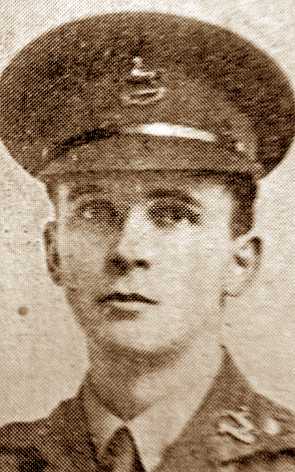
Connects to:
Year of Birth:
Year of Death:
Month of Death:
Day of Death:
Most Relevant Date:
Source:
Source Date:
2nd Lieutenant Charles Frederick Burley
Title (Mr/ Mrs/ Capt/ Rev etc):
First name(s):
Surname only:
Second Lieut Charles Frederick Burley, 4th Battalion (attached 10th) Royal Warwickshire Regiment, was killed in action on the Somme on November 18th, 1916. The younger son of leading Luton hat manufacturer Richard Burley, he would not have been 19 years old until December 1st - and still under military age for service abroad.
Richard and his wife Clara Ann, of 18 Leagrave Road, Luton, received the news that their son was missing, believed killed, six days later. A visit to the British Red Cross in London produced nothing further about his disappearance, although the authorities said it was possible for an injured man to remain in what shelter could be obtained for two or three days before being brought in.
Second Lieut Burley enlisted in October 1914 in the 2nd Battalion Public Schoolboys Corps, and went out to the front in November 1915. Returning to England the following April, he undertook a course of training at Lichfield and then received his commission, Gazetted second lieutenant in the Royal Warwickshire Regiment. He returned to the Front and had been there only around seven weeks.
Prior to enlistment, Charles Burley worked in the office at Brown & Green's iron foundry, Windsor Street. His father's main hat factory was in Old Bedford Road.
Service or Civilian?:
Regiment:
Medals Awarded:
Employer:
War time / or Pre War occupation:
Place of Birth:
Place of Death:
War Memorial Location:
Grave Location:
World War I Address:
Individual Location:
Classifications:
Images:
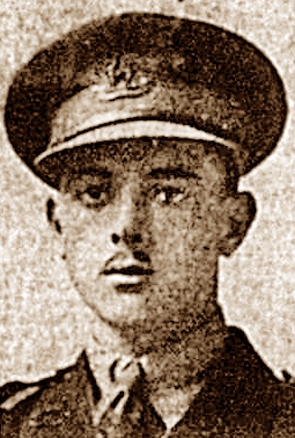
Connects to:
Year of Birth:
Month of Birth:
Day of Birth:
Year of Death:
Month of Death:
Day of Death:
Most Relevant Date:
Source:
Source Date:
2nd Lieutenant Harold George Fyson
Title (Mr/ Mrs/ Capt/ Rev etc):
First name(s):
Surname only:
Second Lieut Harold George Fyson, 2nd Battalion Bedfordshire Regiment, was killed in action on the Somme on October 12th, 1916. He was aged 26.
Born in Luton in April 1890, he was a son of straw hat dyer employer George Austin Fyson and his wife Kate(nee Cooke), of 36 Leagrave Road.
His parents received a telegram on October 15th to say he had been wounded on the 12th and then a second to say he was wounded and missing. Then two letters from fellow officers confirmed his death.
Information initially received was that Second Lieut Fyson had taken part in an attack, leading his platoon into action under heavy enemy fire. He had fallen mortally wounded into a deep trench within 30 yards of the German position. Cpl Selby made many attempts to bring Lieut Fyson back to the British lines, but on two occasions stretcher bearers who were with him were killed and another was wounded.
Subsequently it transpired that Second Lieut Fyson had been a victim of German treachery. On the day six officers of the Bedfords were killed and four wounded, he had gone out with his men to talk to a German officer and 50 men who it was claimed wanted to surrender. But the Germans had their machine guns trained and opened fire on the British party as they approached.
Second Lieut Fyson was sent to negotiate with the Germans as he had learned their language during four years at a German university, studying engineering. His earlier education was at Dunstable Grammar School and afterwards at Bedford School.
On his return to England he joined the staff of George Kent Ltd before enlisting with the Public School Corps on the day it was created. He received his commission in the Bedfords in May 1915 and went to France a year later.
One of Harold's brothers, Arthur, was also a Second Lieut in the Bedfords.
Service or Civilian?:
Regiment:
Medals Awarded:
Employer:
Place of Birth:
Place of Death:
War Memorial Location:
Grave Location:
World War I Address:
Images:
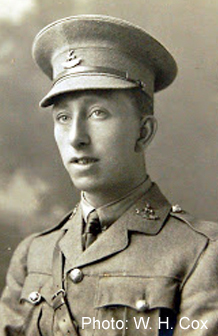
Connects to:
Year of Birth:
Year of Death:
Month of Death:
Day of Death:
Most Relevant Date:
Source:
Source Date:
2nd Lieutenant Herbert George Merchant
Title (Mr/ Mrs/ Capt/ Rev etc):
First name(s):
Surname only:
Temporary Sec-Lieut Herbert George Merchant, 9th Battalion Bedfordshire Regiment attached to the 7th Battalion, was killed in action on the Somme on September 28th, 1916. He was aged 22.
Born in Luton, he was the son of house furnisher and dealer James Herbert Merchant and his wife Ada Maud Ruth (nee Barford), of 134 Castle Street, Luton [now part of London Road]. A letter from a fellow officer informed his parents that Herbert was killed by a sniper within three seconds of the Battalion going into action on what may have been his first visit to the trenches as an officer.
Sec-Lieut Merchant, more familiarly known as George, was educated at Luton Modern School and then proceeded to Eastbourne for business training to enable him to carry on the family furnishing business of F. Merchant and Sons, Manchester Street, Luton. After five years in Eastbourne he entered the Public Schools Battalion of the Royal Fusiliers as a private in September 1914.
He went to France with that Battalion in November 1915 and spent the following Christmas in the fighting line. He remained at the Front until March 1916, when he was one of about 125 men sent backto England to join a Cadet School in the West Country. There he was given the rank of corporal and, after four months' training, passed examinations to gain his commission.
Lieut Merchant was gazetted on August 5th, 1916, to a Battalion of the Bedfordshire Regiment that was subsequently broken up and then attached to the 7th Battalion with some 30 colleagues from Cadet School. On arrival in France he was posted to a training school for officers, and he had been killed before his parents were aware he was in the fighting line.
However, two days before his death he wrote to say he and his men had been served out with shrapnel helmets and other trench accoutrements and he anticipated it would not be long before they were in the first line.
Service or Civilian?:
Regiment:
Place of Birth:
Place of Death:
War Memorial Location:
Grave Location:
World War I Address:
Individual Location:
Classifications:
Images:
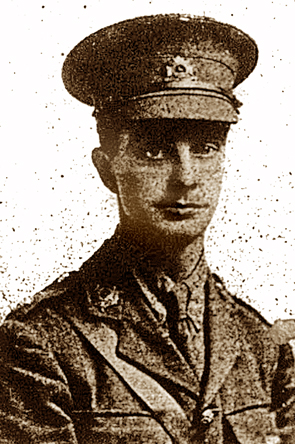
Connects to:
Year of Birth:
Year of Death:
Month of Death:
Day of Death:
Most Relevant Date:
Source:
Source Date:
2nd Lieutenant Richard Norman Butcher
Title (Mr/ Mrs/ Capt/ Rev etc):
First name(s):
Surname only:
Second-Lieut Richard Norman Butcher, 20th The King's (Liverpool) Regiment, died on August 5th, 1916, from wounds sustained on the Somme on July 30th. He was aged 26 and the son of Bute Street pawnbroker William Joseph Butcher and his wife Lily Rhoda, who lived at Bendrose, Braithwaite Road [later Malzeard Road], off Studley Road, Luton.
He had joined the 24th County of London ("Queen's") Regiment in the ranks on September 12th, 1914, and was promoted to lance-corporal while serving in France. He was wounded on May 26th, 1915, in the charge at Givenchy. After he recovered, he rejoined his regiment in September 1915 and took a commission he was offered and was gazetted to the 15th King's (Liverpool) Regiment.
Lieut Butcher rejoined the Expeditionary Force on June 19th, 1916, and was attached to the 20th King's (Liverpool) Regiment. He was slightly wounded for a second time on July 11th and rejoined his regiment after the wound was dressed. His third and fatal wound came on July 30th, as a result of which he died in hospital in France.
Richard Butcher was educated at St Gregory's School, Luton, and at Mill Hill School, where he distinguished himself in swimming and rugby. Prior to enlisting, he was employed in the straw trade with Messrs William Walsh and Sons, Chapel Street.
He had a brother, Ralph Wycombe Butcher, who had also risen from the ranks to earn a commission with the 4th Manchester Regiment. He was killed on March 14th, 1917, while attached to the 22nd Manchesters, aged 21.
Service or Civilian?:
Regiment:
Employer:
War time / or Pre War occupation:
Place of Birth:
Place of Death:
War Memorial Location:
Grave Location:
World War I Address:
Individual Location:
Classifications:
Images:

Connects to:
Year of Birth:
Year of Death:
Month of Death:
Day of Death:
Most Relevant Date:
Source:
Source Date:
2nd Lieutenant Richard Reeve Emmens
Title (Mr/ Mrs/ Capt/ Rev etc):
First name(s):
Surname only:
Second Lieut Richard Reeve Emmens, 7th Battalion Royal Sussex Regiment, was killed in action on the Somme on September 4th, 1916. He was aged 23.
Born in Birmingham, the public school boy was engaged for 12 months before the war as a chartered accountant with Mr Thomas Keens, Secretary of the Luton Chamber of Commerce. He is included on the Luton Roll of Honour with an address at Cardiff Road, Luton.
Richard Emmens joined the Motor Transport Section of the Army Service Corps, and since September 1914 had been on continuous active service in France. He received his commission in September 1915 and received his second start in August 1916.
At the time he was killed he was in charge of a trench mortar battery. Writing to his mother Jessie in Birmingham, his Commanding Officer wrote: "Your son volunteered to reconnoitre a dangerous trench with another officer, and so met his death. He was one of the bravest men I have met."
Service or Civilian?:
Regiment:
Employer:
War time / or Pre War occupation:
Place of Birth:
Place of Death:
War Memorial Location:
Grave Location:
World War I Address:
Classifications:
Connects to:
Year of Birth:
Year of Death:
Month of Death:
Day of Death:
Most Relevant Date:
Source:
Source Date:
2nd Lieutenant William Samuel Scruby
Title (Mr/ Mrs/ Capt/ Rev etc):
First name(s):
Surname only:
Second Lieut William Samuel Scruby, 12th Battalion Middlesex Regiment, was killed in action near Thiepval on the Somme on September 26th, 1916. He was aged 25 and had planned to marry during his next leave.
He had joined the Coldstream Guards in the ranks (Pte 11338) at the outbreak of war and only received his commission three months before his death in recognition of meritorious conduct in the field. He was gazetted to the Middlesex Regiment.
Second Lieut Scruby was born in Newbury, Berks, the eldest son of the Rev William J.T. Scruby, who was minister of High Town Methodist Church from 1899 to 1908. Rev Scruby died in Hinckley, Leics, in 1911, but at the time of his son's death his widow, Alice, was living at 37 Westbourne Road, Luton, her home given the name Hinckley House.
Details of his death published in both The Luton News (October 5th, 1916) and The Luton Reporter (October 9th) are confirmed on William's medal rolls index cards, but the date on the Commonwealth War Graves Commission website and in "UK Soldiers Died in The Great War" is given as June 29th,1916 (29-6-1916 instead of 26-9-1916).
Service or Civilian?:
Regiment:
Medals Awarded:
Place of Birth:
Place of Death:
War Memorial Location:
Grave Location:
World War I Address:
Individual Location:
Classifications:
Images:
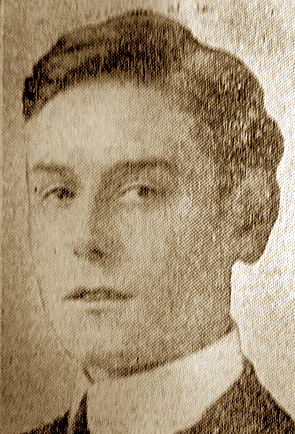
Connects to:
Year of Birth:
Year of Death:
Month of Death:
Day of Death:
Most Relevant Date:
Source:
Source Date:
Battle of the Somme 1916
Event Start and End Date:
Well over one million men on all sides perished or were wounded in the Battle of the Somme, one of the bloodiest battles in history that spanned five months from July to November 1916. Men from Luton and nearby villages naturally played their part, many making the ultimate sacrifice.
Initially using contemporary Luton newspaper reports, including published casualty lists and stories of local men who lost their lives - and backed up by recognised authoritative sources, this is an attempt to build up a comprehensive roll of honour devoted specifically to the Somme in 1916.
Click here to see the list as it develops day by day over the coming weeks. Then click on individual names to find out what was written about them at the time and see any picture that were published.
Information about soldiers with a Luton connection who may inadvertently be omitted, perhaps through no information being published about them at the time, would be welcome.
Images:
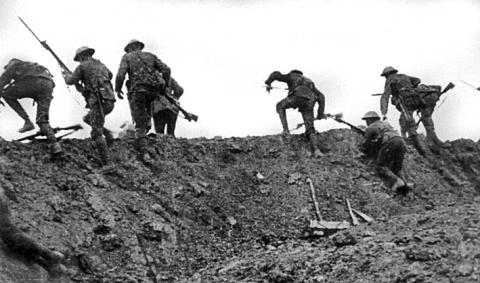
Event Place:
Classifications:
Bombardier Charles William Asbury
Title (Mr/ Mrs/ Capt/ Rev etc):
First name(s):
Surname only:
Bombardier Charles William Asbury, 33560, 39th Brigade, Royal Field Artillery, was killed in action on September 12th, 1916, on the Somme. He was aged 32.
Born in Harlington, he became an assistant porter with the Midland Railway at Flitwick in 1899 when aged 15. He attested as a 20-year-old with the R.F.A. in 1904 and served in India before joining the Reserve.
At the time of the 1911 Census, Charles was a visitor at 134 Ridgway Road, Luton, the home of the Carter family and their daughter Millie Cornell Carter, who Charles would marry at St Thomas's Church, Stopsley, on May 11th, 1912. The couple had a daughter, Frances May, born the following October.
Charles was a clerk in the Territorial Force Office at Bedford, but, as a reservist, was called up at the outbreak of war and at once sent to France. He received only one period of leave, about a year before his death.
The Carter family, including Millie and her child, had moved to live in Colin Road, Luton, when the news arrived from the War Office of Bombardier Asbury's death.
Service or Civilian?:
Service Number:
Regiment:
Employer:
War time / or Pre War occupation:
Place of Birth:
Place of Death:
War Memorial Location:
Grave Location:
World War I Address:
Individual Location:
Classifications:
Images:

Connects to:
Year of Birth:
Month of Birth:
Day of Birth:
Year of Death:
Month of Death:
Day of Death:
Most Relevant Date:
Company Sergeant Major Arthur Fountain
Title (Mr/ Mrs/ Capt/ Rev etc):
First name(s):
Surname only:
Company Sgt Major Arthur Fountain, 15400, 7th Battalion Bedfordshire Regiment, was killed in action on the Somme on September 27th, 1916.
Born in Markyate in 1881, he was a son of the late William Richard and Sarah Ann Fountain,of Luton Road, Markyate. He enlisted on September 7th, 1914, and had served at the Front without a scratch for about 18 months, with just one brief spell of home leave.
At the time of the 1911 Census Arthur was living with his married sister Annie and her husband William G. Champkin and their son at 184 Wellington Street, Luton. He was a labourer at the Henry Brown and Sons timber yard in Dunstable Road, and his interests included football.
He had three brothers serving with the Colours - Pte Harry Fountain on active service, Pte Thomas Fountain, also in France, and Pte William Fountain, in training at Felixstowe.
Service or Civilian?:
Service Number:
Regiment:
Medals Awarded:
War time / or Pre War occupation:
Place of Birth:
Place of Death:
War Memorial Location:
Grave Location:
World War I Address:
Individual Location:
Classifications:
Connects to:
Year of Birth:
Year of Death:
Month of Death:
Day of Death:
Most Relevant Date:
Corporal Alfred John Axtell
Title (Mr/ Mrs/ Capt/ Rev etc):
First name(s):
Surname only:
Cpl Alfred John Axtell, 19/312, 19th Northumberland Fusiliers (Tyneside Pioneers) was killed by an explosive shell on August 23rd, 1916, during the British advance on the Somme.
Born in Dunstable in 1888, he later lived with parents Alfred and Martha Hannah (nee Ramsden) at 19 Biscot Road, Luton, and attended Old Bedford Road Boys' School, where he was a pupil teacher. After attending Westminster Training College, he became an assitant master at an elementary school in County Durham and lodged with a family at Dunston-on-Tyne, near Gateshead.
He joined the Northumberland Fusiliers at Newcastle-on-Tyne in the early days of the war, and left for France in January 1916.
Writing to Cpl Axtell's parents in Luton, Cpl A. Ellingham said they were at work consolidating some recently taken positions on the evening of the 23rd while the enemy were shelling their approach. While moving towards his work, a high explosive shell exploded close to where Alfred was, wounding four men.
"Since then Alf has not been seen or heard of, and it is greatly feared that he was killed," said the letter writer. "Sgt Davidson and I have made inquiries at the Dressing Stations to find out if he had been brought in for treatment, and we would have gladly gone back to look for him but our officers considered it too dangerous and refused us permission. Thus, after these few days of inquiries and waiting, nothing has come to hand to give us any hope."
Service or Civilian?:
Service Number:
Regiment:
Medals Awarded:
Employer:
War time / or Pre War occupation:
Place of Birth:
Place of Death:
War Memorial Location:
Grave Location:
World War I Address:
Individual Location:
Classifications:
Images:
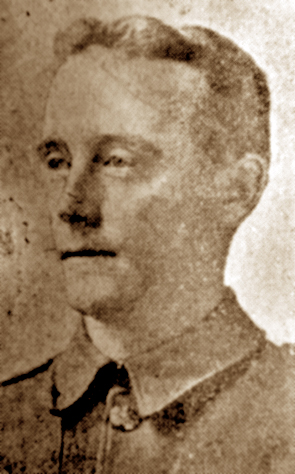
Connects to:
Year of Birth:
Year of Death:
Month of Death:
Day of Death:
Most Relevant Date:
Source:
Source Date:
Corporal Frederick Smith
Title (Mr/ Mrs/ Capt/ Rev etc):
First name(s):
Surname only:
Cpl Fred Smith, 6289, 2/4th Battalion Royal Berkshire Regiment, was killed in action on the Somme on July 19th, 1916. He was aged 24 and one of five sons of Thomas George and Sophia Smith, of 73 North Street, Luton, serving with the Colours.
The Rev A. R. Tucker, a Church of England Chaplain, wrote to Mrs Smith to inform her of the death of her son. He wrote: "I have buried him in a cemetery for British troops. A cross will be erected to his memory over the grave."
And, in another letter, Capt R. Whittaker, Royal Berks Regiment, wrote: "We were in the first line, and Cpl Smith was one of the first to advance under a heavy machine gun fire. He was killed almost immediately, and the whole company joins with me in offering you our heartfelt sympathy."
Cpl Smith had served for four years in the Territorials. He was formerly 2717, Bedfordshire Regiment, and is commemorated on the Luton Roll of Honour as a lance-corporal serving with the 5th Bedfords.
Prior to enlistment he was employed at the Diamond Foundry, Dallow Road, as a gas stove moulder.
The Smiths' four other sons were Pte Arthur and Pte Albert Smith, of the Bedfordshire Regiment, in France; Pte Walter Smith, who was wounded in action in October 1914 and is now a prisoner of war at Muster in Germany; and L-Cpl Ernest Smith in training at Harrogate with the Bedfordshires.
Pte Albert Smith was to die on the Somme just three days after his brother - on July 22nd, 1916.
Service or Civilian?:
Service Number:
Regiment:
Employer:
War time / or Pre War occupation:
Place of Birth:
Place of Death:
War Memorial Location:
Grave Location:
World War I Address:
Individual Location:
Classifications:
Images:
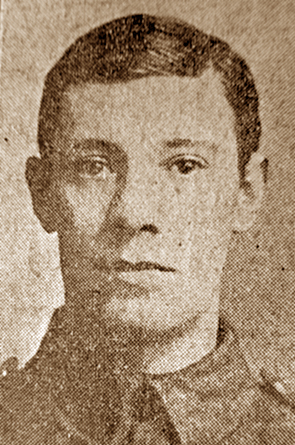
Connects to:
Year of Birth:
Year of Death:
Month of Death:
Day of Death:
Most Relevant Date:
Source:
Source Date:
Corporal Herbert Henry Strange
Title (Mr/ Mrs/ Capt/ Rev etc):
First name(s):
Surname only:
Cpl Herbert Henry Strange, 18463, 2nd Battalion Wiltshire Regiment, was killed in action on the Somme on October 18th, 1916. He was aged 31.
Born in Calne, Wiltshire, in 1885, he married Elizabeth Jarvis, from Markyate who was then living in Russell Street, Luton, in Luton in 1909. Living at 7 Dunstable Place, they had three children - Phyliss, born 1909, Herbert in 1911 and Arthur, born in 1914, just two months before his father enlisted in January 1915.
Herbert Strange had been foreman gardener at Stockwood up to the death of Mr Francis Crawley, after which he worked for building materials merchants Charles Bird and Sons, of 112 Collingdon Street, Luton.
He had been at the Front 17 months. On October 17th, the day before he was reported missing in action, he gave his watch to a pal to send home to his wife.
Service or Civilian?:
Service Number:
Regiment:
Employer:
War time / or Pre War occupation:
Place of Birth:
Place of Death:
War Memorial Location:
Grave Location:
World War I Address:
Individual Location:
Classifications:
Images:
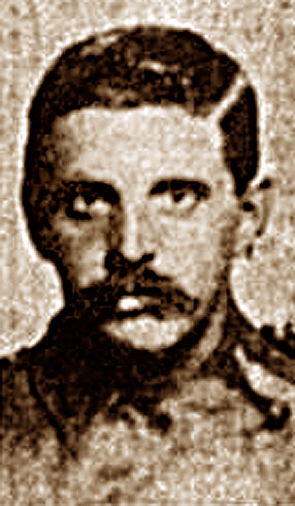
Connects to:
Year of Birth:
Year of Death:
Month of Death:
Day of Death:
Most Relevant Date:
Source:
Source Date:
Corporal William John Andrews
Title (Mr/ Mrs/ Capt/ Rev etc):
First name(s):
Surname only:
Cpl William John Andrews, 22020, 7th Battalion Bedfordshire Regiment, was killed in action in an attack on the Schwaben Redoubt, near Thiepval on the Somme, on September 28th, 1916.
He was aged 17 and not legally compelled to have been on the battlefield. He was also wearing two stripes to indicate that he had previously been wounded.
L-Cpl A. Bellamy, a friend who was beside William when he died wrote to parents John and Beatrice Mary Andrews, at 4 Hartley Road, Luton, to say their son died immediately he was hit. "As I was by his side I know he did not suffer any pain."
A parcel Mr and Mrs Andrews had sent to their son was distributed among other members of his platoon, as William had wished.
Born in Hatfield, the young soldier had joined up on his 16th birthday and went into training at Ampthill. He was the eldest of six children and had been previously apprenticed to the joinery trade with Mr Davis, of Church Street, Luton. He was also a member of St Matthew's Church, High Town.
At the time of the 1911 Census,the Andrews family were living at Marsom Terrace [now in St Thomas's Road], Stopsley. William's father was a farm labourer and his mother a midwife. His sisters were Elsie May, Lillian, Olive Joan and Mary Louisa and his brother was Joseph.
Service or Civilian?:
Service Number:
Regiment:
Employer:
War time / or Pre War occupation:
Place of Birth:
Place of Death:
War Memorial Location:
Grave Location:
World War I Address:
Individual Location:
Classifications:
Images:
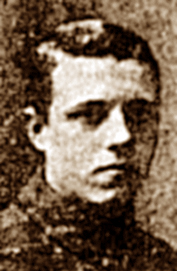
Connects to:
Year of Birth:
Year of Death:
Month of Death:
Day of Death:
Most Relevant Date:
Source:
Source Date:
Driver Sidney John Inge
Title (Mr/ Mrs/ Capt/ Rev etc):
First name(s):
Surname only:
Driver Sidney John Indge, 52590, Royal Horse Artillery, was killed in action on the Somme on July 1st, 1916. He was at first reported missing.
The son of Harry George and Elizabeth Mary Indge, of 45 Ramridge Road, Round Green, he was born in late 1890.
Casualty lists gave his surname as Judge.
Service or Civilian?:
Service Number:
Regiment:
Place of Birth:
Place of Death:
War Memorial Location:
Grave Location:
World War I Address:
Individual Location:
Classifications:
Connects to:
Year of Birth:
Year of Death:
Month of Death:
Day of Death:
Most Relevant Date:
German Samaritan on the battlefield
The story of a Samaritan German prisoner was revealed in a letter from a Bedfordshire man who had been wounded twice on the Somme battlefield. The Luton News told the story in its August 3rd, 1916, edition.
Pte Sidney Folds (pictured), 19347, Bedfordshire Regiment, son of Vince and Sarah Ann Folds, of Breachwood Green, was an inmate of the V.A.D. Hospital, Quarry Place, Shrewsbury, as a result of leg wounds.
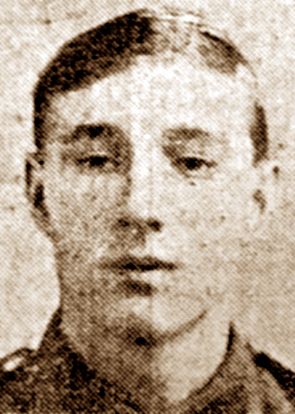 In a letter to his sister, Mrs W. [Ada] Warren, of 35 Albert Road, Luton, he said: "I was very lucky. About my experience of the 'Big Push' I can tell you a little. We went into the trenches on the Saturday, holding the line for four days in the bombardment, and after lively retaliation by the Germans we came out on Thursday night for 36 hours' rest. We had a few casualties during the four days.
In a letter to his sister, Mrs W. [Ada] Warren, of 35 Albert Road, Luton, he said: "I was very lucky. About my experience of the 'Big Push' I can tell you a little. We went into the trenches on the Saturday, holding the line for four days in the bombardment, and after lively retaliation by the Germans we came out on Thursday night for 36 hours' rest. We had a few casualties during the four days.
"It soon came round that we were to go back on the Friday night, and got back to our positions about 2 o'clock on Saturday morning. We had our orders what to do, and we knew exactly where to go when we got on the job, and the 'zero' time was that we were to be in the German trenches by 7.30.
"On rolled the time, and there was a thick mist. Then our platoon had orders to get ready. Just before we got up the parapet we cried, 'Over the top, boys; with the best of luck'. We were the fourth wave, and the shells and bullets were flying about., and I couldn't say if all our section reached the first German trench, but I know our sergeant did. He is a Luton man.
"We had six lines of trenches and a redoubt to capture, and on we went from the first trench to the second. All the time it was like hell, and there were poor Germans throwing up their hands and shouting for mercy. Of course, we sent them back to our lines, for we didn't stop to send any men back with them, and our boys who went over first must have done a lot in, for there were lots of dead and wounded in the trenches.
"Then on we went to the third trench, and when we got there the boys seemed quite pleased. They said to each other, 'Isn't this fine sport?'
"After we had been there a few minutes, of course, before we went forward each time, our artillery shelled the next trench and we laid flat, and our fine artillery dropped shells in their trenches a treat. As soon as it lifted, up we jumped and into the trench.
"Of course we were getting on fine, so we went to the fourth trench, and that's where I got my lot. We were rushing along when a bullet went through my left leg just above the knee. I said to my pals on each side, 'I am wounded' and they told me to get along. I had a try and managed to get a few more yards, and I was obliged to drop in a shell hole. I lay there some time, and then the Germans started shelling our supports, which were coming up, and the shells dropped so close to me I was obliged to move, and I started to get back out of the way.
"No sooner had I started than I got another bullet through the same leg, about the same place, and it broke the bone. Some lad came by and I asked him to carry me to some shallow place, and he did. I managed to get on his back, and he laid me out flat in a place and on he went again.
"I lay there about three hours and saw our supports coming up. Some fell, for the shells were dropping all around, and I was lucky enough to get only the lumps of dirt on me instead of the shrapnel. I was lucky. It was only 'the One above' who saved my life.
"While I lay there our boys were bringing the prisoners back in gangs of tens and twenties. A wounded German came by and seeing us he stopped and laid down with us, and fetched out water bottles out and gave us some drink.
He was very kind, and what amused me was the way he kept talking about, 'What will they do with me? Will they shoot me?' Of course, he didn't say that, but that was what he meant, and I kept saying, 'They won't hurt you,' and he wanted to shift us out of the way of the shells, but my leg hurt me too much to be shifted. So he spotted our Red Cross chaps and called to them. I had it bandaged and we were soon fetched by the stretcher-bearers, and this German walked down with us.
"When we got in between our first line and the German first there is a valley, and that is where we lay till five o'clock. Of course, there were a lot of us, and then were were carried down to Carnoy by the prisoners. They carried us nice and gently for half a mile, and then we were soon in a motor and off to the first dressing station.
"While I was in the hospital I saw our platoon sergeant and he said the boys were going on fine when he got wounded, for they had captured the lot of the trenches. They had to advance about another thousand yards and dig themselves in, which they did, and the time from when we left our trenches till they had dug themselves in was two hours and ten minutes."
- Deejaya's blog
- Log in or register to post comments
Gunner Horace George Dunham
Title (Mr/ Mrs/ Capt/ Rev etc):
First name(s):
Surname only:
Gunner Horace George Dunham, 2783, 24th Battalion Royal Fusiliers, was killed in action on November 13th, 1916. He was aged 24.
Horace was the son of baker and confectioner Alfred Dunham and his wife Mary, of 1 North Street, Luton. He and his two brothers had worked in the family bakery.
Officially, Gunner Dunham is recorded as having been killed in action on November 13th. A letter to his parents from the Front from Capt W. S. Green, however, said his death occurred on November 14th. The machine gunner had suffered no pain and had been buried.
Horace was a fast bowler with Luton Town Cricket Club and was the holder of medals for cricket and football. He joined up in January 1915 and had been at the Front for 12 months. His last letter home was written on November 11th.
Younger brother Albert was home on leave from the Army Service Corps, while older brother Percival had a certificate of exemption as the mainstay of the family business.
Service or Civilian?:
Service Number:
Regiment:
Medals Awarded:
Employer:
War time / or Pre War occupation:
Place of Birth:
Place of Death:
War Memorial Location:
Grave Location:
World War I Address:
Individual Location:
Classifications:
Images:

Connects to:
Year of Birth:
Year of Death:
Month of Death:
Day of Death:
Most Relevant Date:
Source:
Source Date:
Gunner Montague George Fountain
Title (Mr/ Mrs/ Capt/ Rev etc):
First name(s):
Surname only:
Gunner Montague George Fountain, 132456, Royal Field Artillery, was killed in action on the Somme on August 24th, 1916, less than a fortnight after arriving in France.
He was aged 32 and had joined the R.F.A. at Biscot Camp in March 1916. He was billeted there for some time, and after four months training was drafted to France.
Gunner Fountain was born in Markyate in 1884, a son of William and Emily Fountain. In 1901 he was living with relatives in Wellington Street, Luton, and in 1904 he married Kate Mardle (Mardell in some records) and they had three children - Ivy (born 1905), Harold (born 1909) and Elsie (born 1915).
Prior to enlistment Montague was employed as a shop assistant by Webdale's in Wellington Street. The family was living at 52 St Saviour's Crescent, Luton.
Service or Civilian?:
Service Number:
Regiment:
Medals Awarded:
Employer:
War time / or Pre War occupation:
Place of Birth:
Place of Death:
War Memorial Location:
Grave Location:
World War I Address:
Individual Location:
Classifications:
Images:
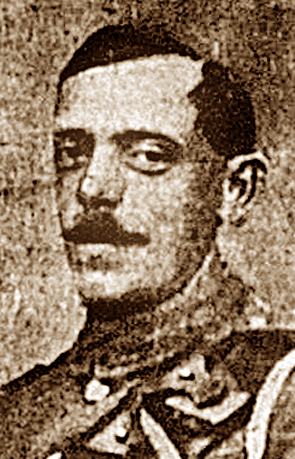
Connects to:
Year of Birth:
Year of Death:
Month of Death:
Day of Death:
Most Relevant Date:
Source:
Source Date:
Lance Corporal Alfred Warren
Title (Mr/ Mrs/ Capt/ Rev etc):
First name(s):
Surname only:
L-Cpl Alfred Warren, 8134, 1/2nd Battalion London Regiment (Royal Fusiliers), was killed in action on the Somme on September 23rd, 1916. He was the son of Frederick William Warren of and his wife Jane (nee Williams), of 3 Dunstable Road, Leagrave.
Born at Olton, near Solihull, Warks, in 1897, he enlisted in the Bedfordshire Regiment (3548) at the age of 17, but before going to France was transferred to the London Regiment.
A report of his death said he was going to inspect sentries when he was killed by a shell. He was buried behind Combles at night. [His grave may have been lost as he is now commemorated on the Thiepval Memorial].
Alfred attended the Old Leagrave School, and immediately prior to enlistment was an employee at the Davis Gas Stove Co Ltd. He is commemorated on the Leagrave War Memorial.
Service or Civilian?:
Service Number:
Regiment:
Employer:
Place of Birth:
Place of Death:
War Memorial Location:
Grave Location:
World War I Address:
Individual Location:
Classifications:
Images:
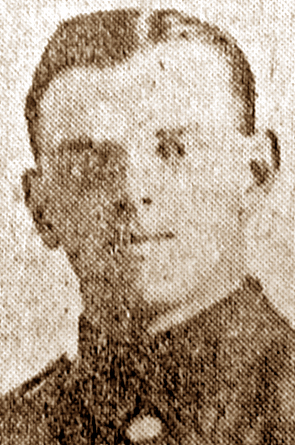
Connects to:
Year of Birth:
Year of Death:
Month of Death:
Day of Death:
Most Relevant Date:
Source:
Source Date:
Lance Corporal Bert Holdstock
Title (Mr/ Mrs/ Capt/ Rev etc):
First name(s):
Surname only:
L-Cpl Bert Holdstock, 2836, 1/24th County of London Regiment (The Queen's), was killed in action on the Somme on September 16th, 1916. His role was as a bomber.
Born around Christmas 1894, he was the youngest of five serving sons of Charles and Annie Holdstock, of 22 South Road (formerly Foundry Lane), Luton. He was single, aged 21 and 6ft 2in tall.
Prior to enlistment in the Londons when war broke out, he worked in the straw trade. He trained at St Albans and was wounded twice while serving for nearly two years in Flanders.
He was shot through the nose at Givenchy in May 1915 and a year later was wounded by shrapnel at Vimy Ridge. He was also one of five bombers who held the left flank at Loos.
Bert, who celebrated his 21st birthday at the Front at Christmas 1915, had been a member of Luton's Central Mission Brotherhood and played football as centre-half for Granville FC.
Service or Civilian?:
Service Number:
Regiment:
Medals Awarded:
War time / or Pre War occupation:
Place of Birth:
Place of Death:
War Memorial Location:
Grave Location:
World War I Address:
Individual Location:
Classifications:
Images:
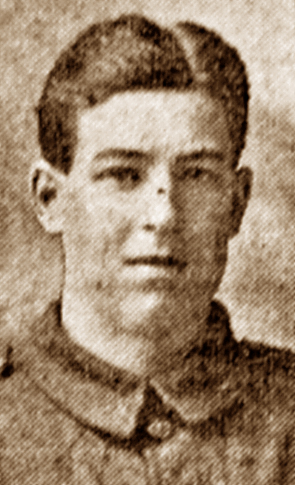
Connects to:
Year of Birth:
Month of Birth:
Year of Death:
Month of Death:
Day of Death:
Most Relevant Date:
Source:
Source Date:
Lance Corporal Charley George Cox
Title (Mr/ Mrs/ Capt/ Rev etc):
First name(s):
Surname only:
L-Cpl Charley George Cox, 19213, 7th Battalion Bedfordshire Regiment, was killed in action on the Somme on July 1st, 1916. He would have been 22 years old the following week.
Born in Barkway, Herts, he was single and the eldest son of Walter and Elizabeth Sophia Cox, of 166 North Street, Luton. Prior to enlistment he worked at the hat manufacturing premises of Messrs G. Dimmock & Co, Melson Street, Luton, in the felt department.
He had been in France since July 1915. In April 1916 he was wounded and returned to the Front on May 26th. His last field card home was written the day before his death.
His brother, Pte Herbert John Cox, was serving in the North Midland Division, having enlisted when they were stationed at Luton and was billeted at Wardown House. He was drafted to France with his unit from Bishops Stortford.
Service or Civilian?:
Service Number:
Regiment:
Employer:
War time / or Pre War occupation:
Place of Birth:
Place of Death:
War Memorial Location:
Grave Location:
World War I Address:
Individual Location:
Classifications:
Images:

Connects to:
Year of Birth:
Month of Birth:
Year of Death:
Month of Death:
Day of Death:
Most Relevant Date:
Source:
Source Date:
Lance Corporal Cyril Stone Terry Short
Title (Mr/ Mrs/ Capt/ Rev etc):
First name(s):
Surname only:
L-Cpl Cyril Stone Terry Short, 19477, 26th Battalion Royal Fusiliers (Bankers' Battalion) was killed in action on the Somme on or a day or two before 18th September, 1916.
Born in Southsea, Hampshire, where he spent most of his life, L-Cpl Short had arrived in Luton by 1911 as a bank clerk employed by the Capital and Counties Bank on the corner of George Street and Bute Street [now the premises of Lloyds Bank].
He shared a house with two other bank clerks at 68 Dunstable Road, Luton. He was a well-known tennis and hockey player and a member of South Beds Golf Club.
Service or Civilian?:
Service Number:
Regiment:
Medals Awarded:
Employer:
War time / or Pre War occupation:
Place of Birth:
Place of Death:
War Memorial Location:
Grave Location:
World War I Address:
Individual Location:
Classifications:
Year of Birth:
Year of Death:
Month of Death:
Day of Death:
Most Relevant Date:
Source:
Source Date:
Lance Corporal Edwin Granville Harvey MM
Title (Mr/ Mrs/ Capt/ Rev etc):
First name(s):
Surname only:
L-Cpl Edwin Granville Harvey, 14925, 1st Battalion Bedfordshire Regiment, was killed in action on the Somme at Longueval on July 24th, 1916. He was aged 21.
He had joined the Colours on September 4th, 1914, and went to France the following April. He was gassed at Hill 60 and blown up by a mine in November 1915, requiring eight weeks of hospital treatment. After 15 months in the trenches he was killed by a shell while serving his Lewis gun.
Although born in East Ham, London in 1895, he was a pupil at Christ Church School in Luton. He had lived at 56 Grove Road, Luton, but at the time of his death parents Edwin and Alice had moved back to London.
Edwin was awarded the Military Medal for bravery in the field in 1916, but the award was made posthumously to his parents at Warley in 1918.
Service or Civilian?:
Service Number:
Regiment:
Medals Awarded:
War time / or Pre War occupation:
Place of Birth:
Place of Death:
War Memorial Location:
Grave Location:
World War I Address:
Individual Location:
Classifications:
Images:
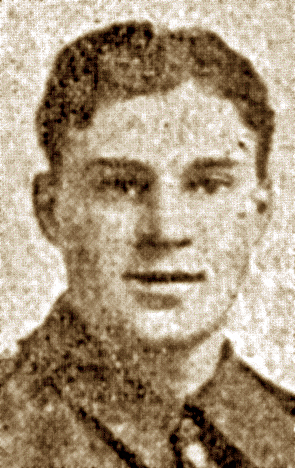
Connects to:
Year of Birth:
Year of Death:
Month of Death:
Day of Death:
Most Relevant Date:
Source:
Source Date:
Lance Corporal Ellis Henman
Title (Mr/ Mrs/ Capt/ Rev etc):
First name(s):
Surname only:
L-Cpl Ellis Henman, 27814, 1st Battalion Bedfordshire Regiment, was killed in action on the Somme on September 4th, 1916. He had been in France foronly a month when he was reported missing in an attack on Falfemont Farm.
The 31-year-old had married in Luton just before going to the Front, and was the first of two sons of William James and Alice Priscilla Henman, of Breachwood Green, to die on the Somme within 11 days. Pte Walter Henman, 19546, 8th Bedfords, lost his life on September 15th, 1916, and both brothers are commemorated on the Thiepval Memorial.
Ellis Henman was born in the early summer of 1885 at Breachwood Green. In 1911 was described as a contractor's labourer. He had worked for builder Mr A. W. Butt, of Cromwell Road, Luton, before attesting under the Lord Derby scheme in February 1916. He was called up the following month and married 27-year-old Clara Wiles, of 46 Cobden Street, Luton, while doing his military training.
He was drafted to a base in France with the Bedfords in August and within a month was sent to the trenches. A letter informing Clara of her husband's death said he was killed during the attack made by the Bedfords on Falfemont Farm. He was "one of the first over the top and must have died instantly".
Widow Clara Henman never remarried and at the end of the war was living at 5 Cavendish Road, Luton. That was still her address when she died on January 1st, 1964, at the age of 75.
Brother Walter, aged 21, had undergone 11 months of training at Ampthill before going to the Front in January 1916. The former worker at Winch Hill Farm, near Luton, was killed on September 15th, 1916. The brothers were among 13 children of William and Alice Penman.
Service or Civilian?:
Service Number:
Regiment:
Medals Awarded:
Employer:
War time / or Pre War occupation:
Place of Birth:
Place of Death:
War Memorial Location:
Grave Location:
World War I Address:
Individual Location:
Classifications:
Images:

Connects to:
Year of Birth:
Year of Death:
Month of Death:
Day of Death:
Most Relevant Date:
Source:
Source Date:
Lance Corporal Ernest Edward Fowler
Title (Mr/ Mrs/ Capt/ Rev etc):
First name(s):
Surname only:
L-Cpl Ernest Edward Fowler, 42765, 10th Battalion Worcestershire Regiment, died on October 27th, 1916, from wounds sustained on the Somme four days earlier. He had transferred from the Bedfordshire Regiment.
Born in early 1896, he was the son of George Henry Fowler and his wife Louisa Elizabeth (nee Wright), of 126 Castle Street, [now in London Road], Luton.
Prior to joining the Colours he was employed by Hart, Baxter and Co, bleachers and dyers, of New Bedford Road, Luton.
Service or Civilian?:
Service Number:
Regiment:
Employer:
War time / or Pre War occupation:
Place of Birth:
Place of Death:
War Memorial Location:
Grave Location:
World War I Address:
Individual Location:
Classifications:
Images:
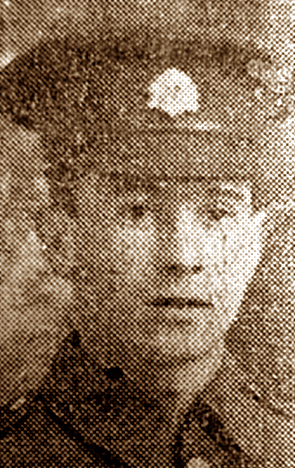
Connects to:
Year of Birth:
Year of Death:
Month of Death:
Day of Death:
Most Relevant Date:
Source:
Source Date:
Lance Corporal Frank Primett
Title (Mr/ Mrs/ Capt/ Rev etc):
First name(s):
Surname only:
L-Cpl Frank Primett, 14026, 8th Battalion Beds Regiment, was killed in action on the Somme on September 15th, 1916. He was the first of two sons of Albert and Agnes Primett to be killed on the battlefield - Pte Charles Augustus Primett, 2nd Bedfords, also died on the Somme, on October 12th,1916.
Born in Ickleford on March 9th, 1886, he spent most of his life in the Hitchin area. By 1915, and possibly after he had enlisted, his parents were living at 18 Spencer Road, Luton, the address on the Luton Roll of Honour.
Frank married Alice Gertrude Emms in 1905 and the couple had three children - Frank, Dora and Florence - living in Hitchin. Alice remarried in 1919 in Richmond, Surrey, to become Alice Leach.
Service or Civilian?:
Service Number:
Regiment:
Place of Birth:
Place of Death:
War Memorial Location:
Grave Location:
World War I Address:
Individual Location:
Classifications:
Connects to:
Year of Birth:
Month of Birth:
Day of Birth:
Year of Death:
Month of Death:
Day of Death:
Most Relevant Date:
Lance Corporal John Prime
Title (Mr/ Mrs/ Capt/ Rev etc):
First name(s):
Surname only:
L-Cpl John Prime, 14102, 1st Battalion Bedfordshire Regiment, was killed in action on the Somme on July 31st, 1916. He was aged 23 and the younger son of John and Eliza Prime, of 2 Front Street, Slip End.
He joined the Bedfords in September 1914, having been employed, like his father, by builders T. & E. Neville, Castle Street, Luton. He was one of the Neville workmen who helped in the building of the Luton News building in Manchester Street that was opened in 1913.
L-Cpl Prime had been at the Front about 18 months and escaped wounds, although he had been gassed just before Christmas 1915 and was home on leave soon afterwards.
News of L-Cpl Prime's death came on August 6th in a letter to his parents from Pte D. Field. He wrote: "It is with the deepest regret that I write to inform you that your son Jack was killed in action on July 31st about 10.30 in the morning. He was struck by an enemy shell which mortally wounded him. He was unconscious for a short time, about half-an-hour or so, and later was buried by another shell.
"He died a hero, only a few yards from the enemy, after having gone through the most intense bombardment that we have known on this front. Everything he had was buried with him."
John Prime is commemorated on the Slip End/Woodside roll of honour.
Service or Civilian?:
Service Number:
Regiment:
Employer:
War time / or Pre War occupation:
Place of Birth:
Place of Death:
War Memorial Location:
Grave Location:
World War I Address:
Individual Location:
Classifications:
Images:
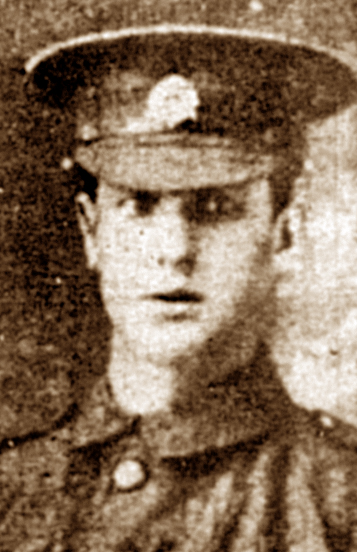
Year of Birth:
Year of Death:
Month of Death:
Day of Death:
Most Relevant Date:
Source:
Source Date:
Lance Corporal Robert Stokes
Title (Mr/ Mrs/ Capt/ Rev etc):
First name(s):
Surname only:
Military Medal winner L-Cpl Robert Stokes, 12329, 6th Battalion Bedfordshire Regiment, was killed in action on the Somme on August 9th, 1916. He was still listed as "missing" when parents Samuel and Phoebe Stokes, of 10 Alfred Street, Luton, learned that their eldest son, Pte Samuel Stokes, aged 30, had also been killed in France - on October 25th, 1916.
In a letter to Mrs Stokes a lieutenant wrote: "I deeply regret to tell you that L-Cpl Stokes has been reported as missing, and I very much fear that he has been killed. The company were carrying out a night raid on the German lines when they came under very heavy machine gun fire. When the party returned to our trenches it was found that several men were missing, of whom L-Cpl Stokes was one.
"A party went out to see if any could be found, but there was no trace of L-Cpl Stokes. The night was very dark and I can get no definite information from those who were near him. It is feared that he was killed close to the German line. It was very hard to find even the wounded who were able to call, as the whole ground was cut up by shell holes."
Prior to the war, L-Cpl Stokes was employed by Messrs Alfred Warren & Sons, hat manufacturers, of 34-36 Bute Street, Luton. He was also a member of Luton Harriers and Wheelers who had won many medals for running and cycling.
He joined the Bedfordshire Regiment in August 1914 and was trained at Aldershot. The award of his Military Medal was announced in the London Gazette on November 11th, 1916, without detailing how he had gained the award.
Service or Civilian?:
Service Number:
Regiment:
Medals Awarded:
Employer:
War time / or Pre War occupation:
Place of Birth:
Place of Death:
War Memorial Location:
Grave Location:
World War I Address:
Individual Location:
Classifications:
Images:
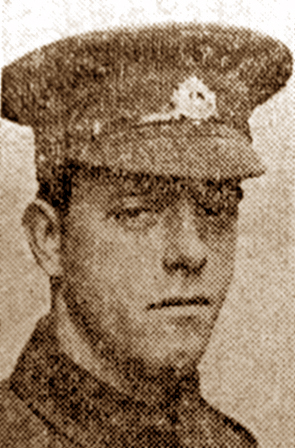
Connects to:
Year of Birth:
Year of Death:
Month of Death:
Day of Death:
Most Relevant Date:
Source:
Source Date:
Lance Corporal Stanley Dean Swift
Title (Mr/ Mrs/ Capt/ Rev etc):
First name(s):
Surname only:
Lance-Corporal Stanley Dean Swift, 20735, 7th Battalion Bedfordshire Regiment, died on July 6th, 1916, from wounds he had received during the opening of the Battle of the Somme. He was aged 22, a native of Luton and went out to the front on February 24th, 1916.
He had married Emily Lydia Carter at St Paul's Church on November 1st, 1915, and it was to her at her family home, 37 Tavistock Street, Luton, that Church of England Chaplain the Rev J. M. S. Walker wrote from the 21st Casualty Clearing Station where her husband died.
The Chaplain said Stanley did not seem to suffer. He carefully prepared for and received Holy Communion before the end came, and his body was laid to rest in the grounds of the hospital.
Before enlisting, L-Cpl Swift was employed as a stiffener at Messrs Gillam's hat factory in Hibbert Street, Luton.
Emily was remarried in Romford, Essex, in the early summer of 1918. Her new husband was called Gordon Kerr.
Service or Civilian?:
Service Number:
Regiment:
Employer:
War time / or Pre War occupation:
Place of Birth:
Place of Death:
War Memorial Location:
Grave Location:
World War I Address:
Individual Location:
Classifications:
Images:

Connects to:
Year of Birth:
Year of Death:
Month of Death:
Day of Death:
Most Relevant Date:
Source:
Source Date:
Lance Corporal Thomas Frederick Brown
Title (Mr/ Mrs/ Capt/ Rev etc):
First name(s):
Surname only:
L-Cpl Tom Brown, 27938, 7th Battalion Royal Fusiliers, was killed in action on the Somme on November 13th, 1916. He left a widow and a young son, who received official notification of his death two months later after he had initially been reported missing.
Tom Brown had attested under the Derby scheme and joined the Royal Fusiliers in April 1916. After three months training he went to France, where he was given his first stripe for good conduct and merit.
On November 13th, 1916, he went into action with his unit. A Luton chum of L-Cpl Brown later wrote to Mrs Brown to say he had seen nothing more of her husband after the charge, or when the roll was called.
The son of Alfred William and Kate Brown, of 246 High Town Road, Luton, Tom was an old boy of Hitchin Road Schools who joined the Co-operative Stores in Luton. He gradually gained promotion until he became manager of the boot department.
He married Nellie Louisa Olney at St Matthew's Church in early 1914 and later that year they had their only child, also named Thomas Frederick. At the time of Tom's death his young family were living at 45 Hartley Road, Luton.
Service or Civilian?:
Service Number:
Regiment:
Employer:
War time / or Pre War occupation:
Place of Birth:
Place of Death:
War Memorial Location:
Grave Location:
World War I Address:
Individual Location:
Classifications:
Images:
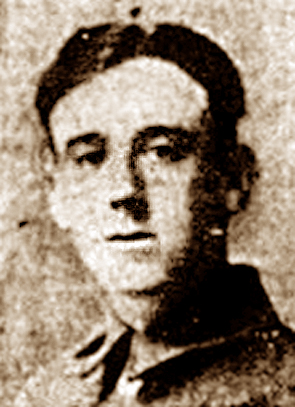
Connects to:
Year of Birth:
Year of Death:
Month of Death:
Day of Death:
Most Relevant Date:
Source:
Source Date:
Lance Corporal Thomas John Heley
Title (Mr/ Mrs/ Capt/ Rev etc):
First name(s):
Surname only:
L-Cpl Thomas John (Jack) Heley, 15743, 7th Battalion Bedfordshire Regiment, died on September 29th, 1916, from wounds sustained on the Somme.
Born in Leighton Buzzard in 1883, he had moved to Luton by 1911 and was living at 180 Wellington Street with his widower father, Fred, and a younger brother and two sisters. He was employed as a carpenter by builder Mr Arthur Cole, of 183 High Town Road.
He joined the Bedfordshire Regiment in September 1914 and was drafted out to France. In May 1916, while on ten days leave, he married Elizabeth Simpson, of High Town Road. She remarried in 1922.
At the time of Jack Heley's death,his father was living at 12 Winsdon Road, Luton, and brother Fred was in Reading Hospital receiving treatment for wounds. A third brother, Bandsman Tom Heley, was serving with the Bedfordshire Regiment, having rejoined his regiment after three months in hospital in Malta for treatment for dysentery contracted while serving as a stretcher-bearer at Gallipoli. The two younger brothers lived in Leighton Buzzard.
L-Cpl Heley is commemorated on the Luton Roll of Honour as John Heley with an address at 305 Hitchin Road, Luton - by then the home of Elizabeth, her parents and siblings.
Service or Civilian?:
Service Number:
Regiment:
Employer:
War time / or Pre War occupation:
Place of Birth:
Place of Death:
War Memorial Location:
Grave Location:
World War I Address:
Individual Location:
Classifications:
Connects to:
Year of Birth:
Year of Death:
Month of Death:
Day of Death:
Most Relevant Date:
Source:
Source Date:
Lance Sergeant Joseph Frederick Plater
Title (Mr/ Mrs/ Capt/ Rev etc):
First name(s):
Surname only:
L-Sgt Joseph Plater, 8393, C Company, 1st Battalion Bedfordshire Regiment, was killed in action on the Somme on September 3rd, 1916. He was aged 29 and left a widow Ellen Beatrice (nee Bingham) and one son, Ronald (born 1913).
Writing to Mrs Plater at 73 Dudley Street, Luton, Capt S. Norrish said her husband was killed by a shrapnel bullet while leading his men in an advance. He died almost instantly.
St Plater had been in the Bedfordshire Regiment for six years, two of which were spent in India. In 1912, the year he married, he became a reservist and worked at the Diamond Foundry. He was called up at the outbreak of war and saw much fighting, including during the retreat from Mons. He was promoted to sergeant just two days before his death. His last home leave was four months earlier.
L-Sgt Plater was the son of Ellen and the late Joseph Plater (died 1900). His own mother remarried in 1906, her new husband being William Stokes.
In 1919 his widow Ellen married Harry W. Rodell. She and her new husband continued to live at 73 Dudley Street.
Service or Civilian?:
Service Number:
Regiment:
Employer:
Place of Birth:
Place of Death:
War Memorial Location:
Grave Location:
World War I Address:
Individual Location:
Classifications:
Images:
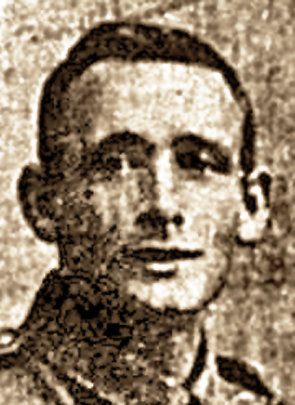
Connects to:
Year of Birth:
Year of Death:
Month of Death:
Day of Death:
Most Relevant Date:
Source:
Source Date:
Lieutenant Arthur Hugh Johns
Title (Mr/ Mrs/ Capt/ Rev etc):
First name(s):
Surname only:
Lieut Arthur Hugh Johns, Royal Sussex Regiment, was killed in action on the Somme on September 1st, 1916. Although born in Pembrokeshire, he was the son of the Rev Roger Owen Johns, who had been Pastor at Park Street Baptist Church, Luton, for about five years until shortly before World War One.
Arthur Johns, born on May 3rd, 1893, was employed by hat manufacturers Messrs J. C. Kershaw & Co until he joined the London Regiment in August1914. He was given a commission about 18 months before his death and had been in training until six months before.
At the time of the 1911 Census the Johns family were living at 'Hazelmere,' 189 Castle Street, Luton [now in London Road]. Arthur was a member of South Beds Golf Club.
Before coming to Luton, the Rev Johns and his wife Jessie Marianne, were in London, and afterwards moved on to a ministry near Horsham in Surrey, where they were living at the time of Arthur's death.
Service or Civilian?:
Regiment:
Employer:
War time / or Pre War occupation:
Place of Birth:
Place of Death:
War Memorial Location:
Grave Location:
World War I Address:
Individual Location:
Classifications:
Year of Birth:
Month of Birth:
Day of Birth:
Year of Death:
Month of Death:
Day of Death:
Most Relevant Date:
Source:
Source Date:
Lieutenant Ernest Isaac Barrow
Title (Mr/ Mrs/ Capt/ Rev etc):
First name(s):
Surname only:
Lieut Ernest Isaac Barrow, 3rd Battalion South Lancashire Regiment attached to the 2nd Battalion East Lancashire Regiment, was killed in action on the Somme on October 23rd, 1916. He was aged 27 and before enlistment in at the outbreak of war had been an assistant master at Luton Modern School.
The eldest son of a JP at Westhoughton [near Bolton, Lancs], he was educated at Manchester Grammar School and Manchester University, where he gained a BSc degree. He was teaching in Penzance, Cornwall, before joining the staff of Luton Modern School in September 1911.
He had joined the ranks of the Public School Battalion of the Royal Fusiliers as a private, soon being promoted to corporal. He was about to be promoted to sergeant-major in the early part of 1915, when he was offered a commission in the South Lancs Regiment. He passed through his courses in record time and in June 1915 went to the Front as an attached officer to the East Lancs Regiment. He had been recommended for decoration on seven occasions.
In the early part of 1916 he was promoted to First Lieutenant in recognition of his patrol work, and twice acted as a temporary Captain. He was slightly wounded on two occasions, first having a rib broken through being hit by a shell case, and was later injured by the blowing up of a mine but refused to leave his post as he was then acting as Captain.
It was only after his regiment was sent for a rest after fighting the Prussian Guard at Contalmaison that he went into hospital for a fortnight for nerve strain. He had only just returned to the Front at the Somme when he was killed.
During his three years in Luton he was also associated with adult school work and was a member of the Leagrave Invicta Tennis Club.
Ernest Barrow is included on the Luton Roll of Honour and Manchester University war memorial.
Service or Civilian?:
Regiment:
Medals Awarded:
Employer:
War time / or Pre War occupation:
Place of Birth:
Place of Death:
War Memorial Location:
Grave Location:
World War I Address:
Individual Location:
Classifications:
Connects to:
Year of Birth:
Year of Death:
Month of Death:
Day of Death:
Most Relevant Date:
Source:
Source Date:
Lutonian awarded Military Medal
Sgt Albert Hugh Wingrave, son of a Luton hat manufacturer, was awarded the Military Medal for gallantry while serving in Flanders with the No 2 Signals Section, 108636 Canadian Engineers, 3rd Canadian Contingent.
He learned of the award on July 22nd, 1916. The citation read: "For his splendid and gallant conduct during the action in the Ypres Salient on the 4th June, 1916, in assisting the establishment of telephone communications with a Yeomanry post and successfully maintaining this line under heavy and incessant shell and rifle fire while important messages were being transmitted at a very critical period of the operation." The award was formally announced in the London Gazette on August 23rd.
 The Luton News of August 3rd, 1916, said Sgt Wingrave (pictured right) and four other signallers were cut off without food or rest for 48 hours on a ridge between Hill 60 and Hooge, while a German attack was met with a Canadian counter-attack. It was their devotion to duty that earned Sgt Wingrave and two others the Military Medal. A war correspondent at the time described the artillery duel around them as the severest of its kind up to that point. A later report said he had also been recommended for the D.C.M.
The Luton News of August 3rd, 1916, said Sgt Wingrave (pictured right) and four other signallers were cut off without food or rest for 48 hours on a ridge between Hill 60 and Hooge, while a German attack was met with a Canadian counter-attack. It was their devotion to duty that earned Sgt Wingrave and two others the Military Medal. A war correspondent at the time described the artillery duel around them as the severest of its kind up to that point. A later report said he had also been recommended for the D.C.M.
Born on November 1, 1888, Sgt Wingrave was a son of Sydney and Martha Ann (nee Wheeler) who were married in 1881. The hat business was at 14 Inkerman Street, where the family also lived for a time before moving to Brook Street and finally to 'St Kilda,' Cumberland Road [later Cumberland Avenue], Leagrave, by the time of the First World War.
Albert had already emigrated to Canada some years earlier and his parents had seen him on only four days since. He had joined the North West Mounted Police, with whom he was in charge of a large district and received special training. He was engaged in telephone work in Edmonton when war broke out, and he enlisted as a signaller with the Canadian Engineers.
Albert Wingrave survived the war and later emigrated to the United States, where he became a naturalised citizen and married Helen. He died in Florida in April 1957 and was buried in a cemetery in New York, the city where he had lived while in the USA.
- Deejaya's blog
- Log in or register to post comments
Private Albert Ford
Title (Mr/ Mrs/ Capt/ Rev etc):
First name(s):
Surname only:
Pte Albert Ford, 25327, 2nd Battalion Bedfordshire Regiment, died on July 17th, 1916, of wounds sustained on the Somme. He was aged 19 and the second son of John and Emma Ford, of 48 Burr Street, Luton, to die on the battlefield.
Pte Ford was a "Derby" recruit and was called up five months previously. He was drafted into the Bedfords and had been at the Front only a short time. A letter from the Record Office to his mother said he son had been buried in the Dive Copse Cemetery,
Before enlisting he work at the bleaching and dyeing firm of Mr Stewart Hubbard.
Older brother Fred East, 29 - he used his mother's maiden name and was John's stepson - was killed by a shell in the retreat from Mons in November 1914. Born in 1885, he is perhaps the only man to be commemorated twice on the Luton Roll of Honour - as Pte Frederick John East, 3/6435, 1st Bedfords (no address), and as Pte Frederick Ford, 3/6435, 3rd Bedfords, of 48 Burr Street, Luton. Military records show he was in the 1st Bedfords when he died.
A third son, John, aged 27, was with the Army Service Corps. He had served several years in South Africa and had been in France since the beginning of hostilities.
Service or Civilian?:
Service Number:
Regiment:
Employer:
War time / or Pre War occupation:
Place of Birth:
Place of Death:
War Memorial Location:
Grave Location:
World War I Address:
Individual Location:
Classifications:
Images:
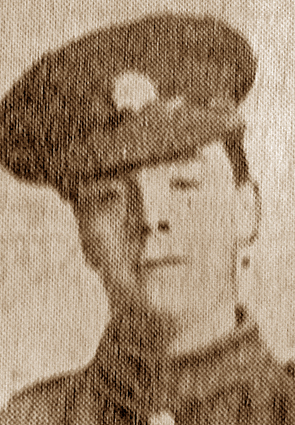
Connects to:
Year of Birth:
Year of Death:
Month of Death:
Day of Death:
Most Relevant Date:
Source:
Source Date:
Private Albert Rolfe
Title (Mr/ Mrs/ Capt/ Rev etc):
First name(s):
Surname only:
Pte Albert Rolfe, 18312, 1st Battalion Bedfordshire Regiment, died on August 1st, 1916, from wounds sustained in action on the Somme. He had been in France since July 27th, 1915.
Born in Chesterton, near Cambridge, he had joined the Army in December 1914, and before enlistment was employed on the Luton Hoo Estate. He was included on a Luton Hoo roll of honour provided by Lady Wernher's agent, Mr James Baker, that was published in The Luton News in July 1915. In that he was listed as Pte R. Rolfe, Beds Regt.
Official intimation of Pte Rolfe's death was received by his wife Jennie (nee Burrows) at 33 Russell Rise, Luton, on August 18th, 1916, just days after his last letter to her arrived. The couple had married in October 1913 in Berkhamstead.
Service or Civilian?:
Service Number:
Regiment:
Medals Awarded:
Employer:
Place of Birth:
Place of Death:
War Memorial Location:
Grave Location:
World War I Address:
Individual Location:
Classifications:
Images:

Connects to:
Year of Death:
Month of Death:
Day of Death:
Most Relevant Date:
Source:
Source Date:
Private Albert Smith
Title (Mr/ Mrs/ Capt/ Rev etc):
First name(s):
Surname only:
Pte Albert Smith, 27481, 1st Battalion Bedfordshire Regiment, was the second son of George and Sophia Smith, of 73 North Street, Luton, to be killed in action on the Somme within four days. He died on July 22nd, 1916, at the age of 21.
His brother, Cpl Frederick Smith, 6289, 2/4th Royal Berkshire Regiment, was killed on July 19th at the age of 24.
Pte Smith had been in the Army only four months, having been drafted as a "Derby" recruit. Prior to enlistment he had worked for blockmaker Mr F. Webb, of Lancrets Path.
Service or Civilian?:
Service Number:
Regiment:
Employer:
War time / or Pre War occupation:
Place of Birth:
Place of Death:
War Memorial Location:
Grave Location:
World War I Address:
Individual Location:
Classifications:
Images:
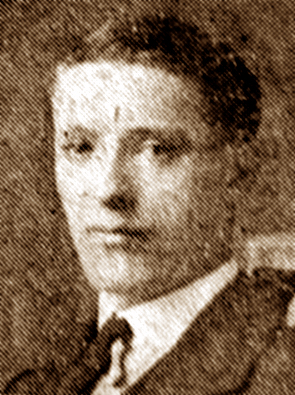
Connects to:
Year of Birth:
Year of Death:
Month of Death:
Day of Death:
Most Relevant Date:
Source:
Source Date:
Private Alfred Bert Walker
Title (Mr/ Mrs/ Capt/ Rev etc):
First name(s):
Surname only:
Pte Alfred 'Bert' Walker, 12062, 6th Battalion Bedfordshire Regiment, was killed in action on the Somme on July 10th, 1916. A letter from the Front said the 23-year-old had died while adding dressings to a wounded man while under heavy bombardment.
His home was at 130 Wellington Street, Luton, and he had married Ethel Elizabeth Hewitt, an electric fuse filler from Sheffield, in the early months of 1915. His mother Elizabeth had died in 1898 at the age of 42 and father Alfred, a railwayman, in late 1914 at the age of 63.
Prior to the war Pte Walker was employed at Messrs Hayward Tyler. He was had also been a choirboy and server at St Saviours Church. On joining up in 1914 he received preliminary training at Aldershot and on Salisbury Plain.
In a letter to Mrs Walker, Sgt J. Lawson, another Lutonian serving with the Bedfords, said: "Poor Bert was killed last night whilst busy dressing a wounded man under a heavy bombardment. We had copped it hot for over two days, and I had just told him an hour before that he deserved recommendation for his bravery and devotion to duty. He was here, there and everywhere, dressing the wounded, and he fully deserved at least a DCM."
Service or Civilian?:
Service Number:
Regiment:
Medals Awarded:
Employer:
Place of Birth:
Place of Death:
War Memorial Location:
Grave Location:
World War I Address:
Individual Location:
Classifications:
Images:

Connects to:
Year of Birth:
Year of Death:
Month of Death:
Day of Death:
Most Relevant Date:
Source:
Source Date:
Private Alfred Edward De Fraine (Defraine)
Title (Mr/ Mrs/ Capt/ Rev etc):
First name(s):
Surname only:
Pte Alfred Edward De Fraine (Defraine), 20615, 2nd Battalion Bedfordshire Regiment, was killed in action on the Somme on October 12th, 1916. He was aged 37.
Born in Luton in May 1879, to Joseph De Fraine, from London, and Mary (nee Jellis), from Luton, he is recorded in family history documents as living with grandparents William and Mary Jellis in Luton from a baby and during his childhood. His parents had married as teenagers in Lambeth in London in 1878 and seem to have continued to live there.
Following Joseph's death, Mary married hairdresser John Marsh in 1896 and by the time of the 1911 Census were living with three daughters by their marriage at 60 Castle Street, Luton. At the time of Alfred's death they were living at 112 Leagrave Road, John continuing there as a hairdresser.
Beds Regiment records show that Alfred enlisted at Kingston-on-Thames and was living at Wembley Park in London. The family's Leagrave Road address is included on the Luton Roll of Honour.
Service or Civilian?:
Service Number:
Regiment:
Medals Awarded:
Place of Birth:
Place of Death:
War Memorial Location:
Grave Location:
World War I Address:
Classifications:
Connects to:
Year of Birth:
Year of Death:
Month of Death:
Day of Death:
Most Relevant Date:
Private Alfred George Brown
Title (Mr/ Mrs/ Capt/ Rev etc):
First name(s):
Surname only:
Father of ten children, Pte Alfred George Brown, 21170, 7th Battalion Northamptonshire Regiment, was killed in action on the Somme on July 16th, 1916. He was aged 38, and his enlistment documents stated that he was fit for home service only.
Pte Brown had served in the Bedfordshire Regiment (22249) before joining the Northants Regiment in July 1915. Despite the home service only clause, he was posted to a garrison battalion in Egypt for about nine months before being transferred to France about four weeks before his death. His military record states that he was buried at the Maricourt Military Cemetery,
Born in Woolwich in 1878, he married Mary Ann Burr at St Matthew's Church, Luton, on July 30th, 1898. His widow and ten children, aged up to 17, were living at 146 Hartley Road, Luton.
Before enlisting he was employed as a straw hat blocker at Messrs Carruthers and Creak, Bute Street.
Service or Civilian?:
Service Number:
Regiment:
Medals Awarded:
Employer:
War time / or Pre War occupation:
Place of Birth:
Place of Death:
War Memorial Location:
Grave Location:
World War I Address:
Individual Location:
Images:
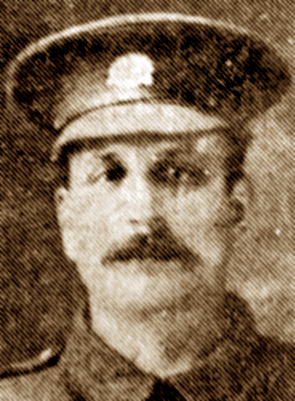
Year of Birth:
Year of Death:
Month of Death:
Day of Death:
Most Relevant Date:
Source:
Source Date:
Private Archibald Odell
Title (Mr/ Mrs/ Capt/ Rev etc):
First name(s):
Surname only:
Pte Archibald Odell (O'Dell), 8094, 1/2nd London Regiment (Royal Fusiliers), was killed in action on the Somme on October 9th, 1916. He was aged about 40.
Popularly known as Joe, he left a widow, Violet, and three daughters - Mabel, Doris and Irene - living at 4 Ebenezer Street, Luton.
The old soldier had seen 12 years service in the Regular Army, seven of them abroad in countries like India, Aden and Canada. Back in civilian life he was a blocker employed by Mr Jack Durrant, who was also a well-known local footballer.
At the outbreak of war he rejoined the Bedfordshire Regiment (4313) but was transferred to the London Regiment. After a period of training at Newmarket, he was drafted to France and had been at the Front just a few weeks at the time of his death.
Service or Civilian?:
Service Number:
Regiment:
Medals Awarded:
Employer:
War time / or Pre War occupation:
Place of Birth:
Place of Death:
War Memorial Location:
Grave Location:
World War I Address:
Individual Location:
Classifications:
Images:
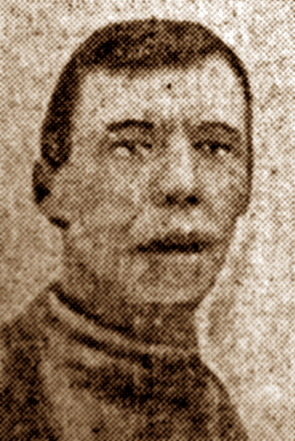
Connects to:
Year of Death:
Month of Death:
Day of Death:
Most Relevant Date:
Source:
Source Date:
Private Arthur Dumpleton
Title (Mr/ Mrs/ Capt/ Rev etc):
First name(s):
Surname only:
Pte Arthur Dumpleton, 27845, 1st Battalion Bedfordshire Regiment, was killed in action on the Somme on September 25th, 1916.
Born in 1877 at Stopsley, he was a son of Daniel and Ann Dumpleton. He was living with his then widower father in Gardenia Avenue, Leagrave, at the time of the 1911 Census and, like his parent, had become a gamekeeper. Daniel was bailiff at Little Bramingham Farm in 1881 and gamekeeper at Wigmore Hall Farm in 1891, when the family lived at Ramridge End Cottage. Both father and son were gamekeepers at Little Bramingham Farm in 1901.
At the time of his death, Arthur had five brothers - Daniel, Edward, Philip, George and Walter - and three sisters - Amy, Nellie and Ethel. A sixth brother Eliab, died in 1909 in a workhouse in St Albans. Their father died aged 73 on January 24th, 1916, his address then given in a family announcement as Waller Avenue, Leagrave.
Service or Civilian?:
Service Number:
Regiment:
War time / or Pre War occupation:
Place of Birth:
Place of Death:
War Memorial Location:
Grave Location:
World War I Address:
Individual Location:
Classifications:
Images:
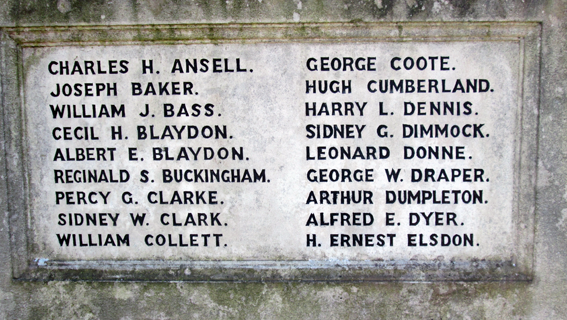


Connects to:
Year of Birth:
Year of Death:
Month of Death:
Day of Death:
Most Relevant Date:
Private Arthur Edward Gadsby
Title (Mr/ Mrs/ Capt/ Rev etc):
First name(s):
Surname only:
Pte Arthur Edward Gadsby (served as Gadstone), 3/4165, 2nd Battalion Hampshire Regiment, was killed in action on July 5th, 1916. He was aged 32.
Born in Camberwell, London, he was the third son of Georgina Isabella and the late William Gadsby. At the time of the 1911 Census he was a milkman at Apsley End, Hemel Hempstead.
On arrival in Luton his family lived at 34 Stuart Street. He became a member of Luton Parish Church and was employed as a carman (delivery driver) by Mr Matson, of High Town.
After enlisting he underwent a period of training before serving in Gallipoli, where he was wounded by a bullet piercing his neck. He was brought back to England and on recovery sent abroad again. Letters from him suggested he had served in Serbia before being transferred to the Western Front, where he was killed in action. He is commemorated on the Thiepval Memorial.
Pte Gadsby was one of four serving sons. His older brother, Petty Officer William Wallace Gadsby, 294719, was to die on August 15th, 1916, while serving as a stoker on submarine E4, which sank in a collision with a sister submarine during exercises off Harwich. He is buried at Shotley Churchyard, near Harwich.
Service or Civilian?:
Service Number:
Regiment:
Place of Birth:
Place of Death:
War Memorial Location:
Grave Location:
World War I Address:
Individual Location:
Classifications:
Images:
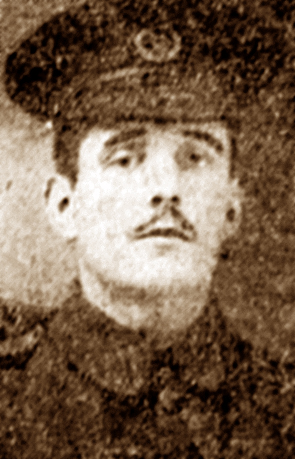
Connects to:
Year of Death:
Month of Death:
Day of Death:
Most Relevant Date:
Source:
Source Date:
Private Aubrey Stanbridge
Title (Mr/ Mrs/ Capt/ Rev etc):
First name(s):
Surname only:
Pte Aubrey Stanbridge, 27467, 1st Battalion Bedfordshire Regiment, attached to the 10th Worcesters, was killed in action on the Somme on July 23rd, 1916.
Born in Luton in 1877, his birth registration shows his full name as Haydn Aubrey Stanbridge. He was the son of the late Frank Shapcott Stanbridge (died 1907, aged 54) and Caroline Stanbridge (died 1913, aged 60). His last known address was 77 Wellington Street, Luton, where his mother lived until her death.
Around the time of Pte Stanbridge's birth the family were living at 19 Collingdon Street, Luton. They moved to 45 Stuart Street before living in Wellington Street, where in 1911 he was described as a boot maker and repairer.
His death was not reported in Luton newspapers at the time.
Service or Civilian?:
Service Number:
Regiment:
Medals Awarded:
War time / or Pre War occupation:
Place of Birth:
Place of Death:
War Memorial Location:
Grave Location:
World War I Address:
Individual Location:
Classifications:
Connects to:
Year of Birth:
Year of Death:
Month of Death:
Day of Death:
Most Relevant Date:
Private Bertram Hubert Spalding
Title (Mr/ Mrs/ Capt/ Rev etc):
First name(s):
Surname only:
Pte Bertram Hubert Spalding, G/14865, Bedfordshire Regiment attached to the 13th Battalion Royal Sussex Regiment, was killed in action on the Somme on October 27th, 1916. He was aged 19.
Comrade and close friend Pte J. G. Stevens wrote to parents Bertram and Emma Spalding at 204 Hitchin Road, Luton, to inform them that their son and he were engaged on operations late at night under German fire when Bert was struck and killed instantly. He was buried the next morning.
Bert and Pte Stevens had transferred together from the Bedfords to the Royal Sussex while they were stationed at Harrogate. Bert's grave site was probably subsequently lost as he is recorded on the Thiepval Memorial.
Before enlisting, Bert was a clerk at Messrs Pickford's courier office in Cheapside. He had also been a server at St Saviours Church.
Service or Civilian?:
Service Number:
Regiment:
Employer:
War time / or Pre War occupation:
Place of Birth:
Place of Death:
War Memorial Location:
Grave Location:
World War I Address:
Individual Location:
Images:
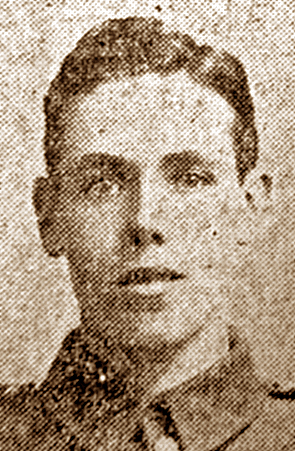
Year of Birth:
Month of Birth:
Day of Birth:
Year of Death:
Month of Death:
Day of Death:
Most Relevant Date:
Source:
Source Date:
Private Charles Augustus Primett
Title (Mr/ Mrs/ Capt/ Rev etc):
First name(s):
Surname only:
Pte Charles Augustus Primett, 4/6279, 2nd Battalion Beds Regiment, was killed in action on the Somme on October 12th, 1916. He was the second son of Albert and Agnes Primett to be killed on the battlefield - Cpl Frank Primett, 8th Bedfords, also died on the Somme (September 15th,1916).
Born in Ickleford on September 9th, 1887, he spent most of his life in the Hitchin area. By 1915, and possibly after he had enlisted, his parents were living at 18 Spencer Road, Luton, the address on the Luton Roll of Honour.
Service or Civilian?:
Service Number:
Regiment:
Place of Birth:
Place of Death:
War Memorial Location:
Grave Location:
World War I Address:
Individual Location:
Classifications:
Connects to:
Year of Birth:
Month of Birth:
Day of Birth:
Year of Death:
Month of Death:
Day of Death:
Most Relevant Date:
Private Charles Gregory
Title (Mr/ Mrs/ Capt/ Rev etc):
First name(s):
Surname only:
Pte Charles Gregory, 3/6858, 1st Battalion Bedfordshire Regiment, was killed in action on the Somme on July 27th, 1916.
Born in 1893, he was the son of Alfred and Florence Gregory, of 15 Langley Place, Luton. In the 1911 Census he is described as working in a foundry. No report of his death appeared in Luton newspapers at the time.
Service or Civilian?:
Service Number:
Regiment:
War time / or Pre War occupation:
Place of Birth:
Place of Death:
War Memorial Location:
Grave Location:
World War I Address:
Individual Location:
Classifications:
Connects to:
Year of Birth:
Year of Death:
Month of Death:
Day of Death:
Most Relevant Date:
Private Charles Henry Grace
Title (Mr/ Mrs/ Capt/ Rev etc):
First name(s):
Surname only:
Pte Charles Henry Grace, 23835, 12th Battalion South Wales Borderers, was killed in action in France on August 13th, 1916. He was the son of Arthur and Kate Grace, of Aley Green, and is commemorated on the Caddington War Memorial.
He had gone to the Front at the beginning of June 1916 and was a bomb-thrower. In a letter to Mrs Grace, Sec-Lieut F. Sidney Green wrote: "It is with deep regret that I have to inform you that your son has been killed during a raid on the enemy trenches, for which he volunteered. He was struck by a piece of shrapnel and I am glad to say he suffered no pain, as he was killed instantly."
Born in Salford, Manchester, in the late spring-early summer of 1894, he was described, like his father, as a farm labourer living with his family at Aley Green, Caddington, at the time of the 1911 Census. His Kensworth-born father had married Kate Tideswell (from Macclesfield) in Nottingham in 1891. At the time of Charles's birth he was employed as a foundryman in Salford who then returned to working in agriculture in Bedfordshire.
Service or Civilian?:
Service Number:
Regiment:
War time / or Pre War occupation:
Place of Birth:
Place of Death:
War Memorial Location:
Grave Location:
World War I Address:
Individual Location:
Classifications:
Images:

Year of Birth:
Year of Death:
Month of Death:
Day of Death:
Most Relevant Date:
Source:
Source Date:
Private Charles William Webb
Title (Mr/ Mrs/ Capt/ Rev etc):
First name(s):
Surname only:
Pte Charles William Webb, 13085, B Company, 6th Battalion Bedfordshire Regiment, was killed in action around Trones Wood on the Somme at the age of 18. Military records say he was killed on July 10th, while in a letter home his brother Eli in the same regiment said it happened on Sunday, July 9th.
Military records also say Charles was born in Barton, whereas the 1901 and 1911 Census returns say he was born in the parish of Caddington and he and his family were living at Farley Green, near Luton.
Charles was born in 1898 and baptised at St Andrew's Church, Woodside on July 10th of that year. He was the youngest of five sons of John Thomas and Ellen Webb. His father was a cowman on a farm and his mother a straw hat machinist.
News of Charles' death came in a letter to the family from the Rev A. D. Millen, a Chaplain to the Forces. He wrote: "I write to give you the sad news that your boy was killed yesterday, and to offer you my most sincere sympathy. It will, I am sure, bring you some consolation in your sorrow to know that we were able to bury him today quietly and reverently in a cemetery just behind the firing line which can be easily identified. We shall erect a little cross over his resting place as soon as possible."
And older brother Eli wrote: "We were in support trenches, and they were shelling us all the time. Charley was hit in the back and loins and died while being carried down to the doctor. I was not near him at the time and I did not get the news until next day. It was done on Sunday, the 9th."
Of his own experiences, Eli wrote: "This is an awful war. I don't know how I got out of it. The shells were dropping all round me. I have lost all my chums. I am at present all right, and I hope to come home safely some day."
Although there appears to have been no report in the Luton Press at the time, another of Mr and Mrs Webb's sons died of wounds sustained near Trones Wood on July 12th, 1916. Pte Josiah Webb, 18083, 2nd Battalion Bedfordshire Regiment, was 26 years old.
Service or Civilian?:
Service Number:
Regiment:
Place of Birth:
Place of Death:
War Memorial Location:
Grave Location:
World War I Address:
Individual Location:
Classifications:
Images:
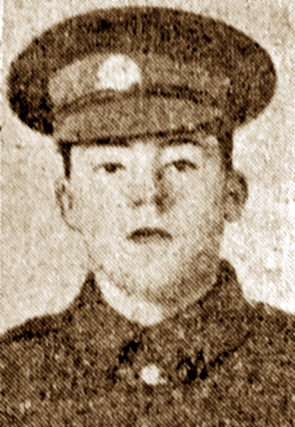
Connects to:
Year of Birth:
Year of Death:
Month of Death:
Day of Death:
Most Relevant Date:
Source:
Source Date:
Private Charles Wood
Title (Mr/ Mrs/ Capt/ Rev etc):
First name(s):
Surname only:
Pte Charles Wood, 27844, 1st Battalion Bedfordshire Regiment, was killed in action on the Somme on September 5th, 1916.
Born in 1878, he was one of ten children of widow Mrs Louisa Wood and the late Mr George Wood (died 1908), of 74 Hitchin Road, Luton. Three sisters living at home were sent news of Charles' death.
Before enlistment he was a straw hat blocker working for Mr E. Burgess, 28 Old Bedford Road. He attested under the Derby Scheme and was called up in March 1916. He went to the Front just five weeks before his death..
Service or Civilian?:
Service Number:
Regiment:
Employer:
War time / or Pre War occupation:
Place of Birth:
Place of Death:
War Memorial Location:
Grave Location:
World War I Address:
Individual Location:
Classifications:
Connects to:
Year of Birth:
Year of Death:
Month of Death:
Day of Death:
Most Relevant Date:
Source:
Source Date:
Private Christopher Perry
Title (Mr/ Mrs/ Capt/ Rev etc):
First name(s):
Surname only:
Pte Christopher Perry, 22395, 8th Battalion Bedfordshire Regiment, was killed in action on the Somme on September 15th, 1916. He was aged 47.
Born in Luton in 1869, he married Emily Jane Crook in Luton in 1893. He had a married daughter, Rose, and a son, William, and in 1911 the family were living at 24 Spring Place, Luton. The address on the Luton Roll of Honour is given as 4 Park Place, Luton.
Service or Civilian?:
Service Number:
Regiment:
Medals Awarded:
Place of Birth:
Place of Death:
War Memorial Location:
Grave Location:
World War I Address:
Individual Location:
Classifications:
Connects to:
Year of Birth:
Year of Death:
Month of Death:
Day of Death:
Most Relevant Date:
Private Edwin Benjamin Eales
Title (Mr/ Mrs/ Capt/ Rev etc):
First name(s):
Surname only:
Pte Edwin Benjamin Eales, 12902, 2nd Battalion Bedfordshire Regiment, was killed in action on the Somme on July 11th, 1916. He was aged 24.
Born in Hammersmith, London, in 1891, he was the son of Kate and the late Edwin Eales, who died in Luton in 1902 at the age of 42.
At the time of the 1911 Census Edwin Jnr was a straw hat blocker living at 19 South Road with his widowed mother Kate, who in 1913 married Arthur Atkins in Luton. His mother and stepfather were living at 12 Frederic Street at the time of Pte Eales' death, and later moved to 24 Boyle Street.
Older brother Pte Horace William Eales, 17866, 12th Royal Fusiliers, who enlisted in June 1915, was discharged as medically unfit in September 1916 after spending five months with the British Expeditionary Force in France. He died in June 1918.
Both brothers are commemorated on the Luton Roll of Honour.
Service or Civilian?:
Service Number:
Regiment:
War time / or Pre War occupation:
Place of Birth:
Place of Death:
War Memorial Location:
Grave Location:
World War I Address:
Individual Location:
Classifications:
Images:
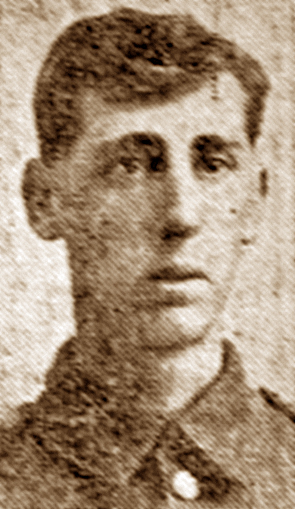
Connects to:
Year of Birth:
Year of Death:
Month of Death:
Day of Death:
Most Relevant Date:
Private Ernest Arthur Pestell
Title (Mr/ Mrs/ Capt/ Rev etc):
First name(s):
Surname only:
Lutonian Pte Ernest Arthur Pestell, 2428, Australian Infantry, died in a Stationary Hospital in France on August 19th, 1916, from wounds sustained in action on the Somme.
Hospital Chaplain the Rev E. Milner White wrote to his mother then living in City Road, East London: "He passed away quietly and very suddenly. I was with him to the end. His system could not throw off the poison in his wound. He was buried in the lovely cemetery of Abbeville with military honours and church service." He added that a cross already stood upon his grave, and French ladies had laid flowers there.
Born in Luton early in 1886, he was a son of London-born William Henry Pestell (died early 1916) and his Lutonian wife Annie Elizabeth, who in 1891 were living at 128 High Town Road, Luton. Ernest and his parents were lodging in Edmonton, London, by 1901.
A Luton News report said he enlisted at the beginning of the war in the 28th Battery (Australian Artillery) in Melbourne, where he had been living. He was a nephew of Thomas and Emily Ellis, of 111 High Town Road, Luton.
Elder brother Frederick William was also killed in action - on April 28th, 1917. He was married and still living in Luton and had several children.
Service or Civilian?:
Service Number:
Regiment:
Place of Birth:
Place of Death:
Grave Location:
World War I Address:
Classifications:
Images:
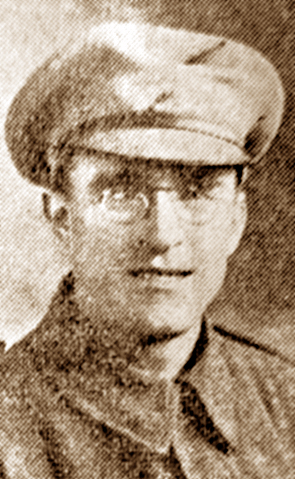
Year of Birth:
Year of Death:
Month of Death:
Day of Death:
Most Relevant Date:
Source:
Source Date:
Private Ernest George Foord
Title (Mr/ Mrs/ Capt/ Rev etc):
First name(s):
Surname only:
Pte Ernest George Foord, 27058, 1st Battalion Bedfordshire Regiment attached to the 10th Battalion Worcestershire Regiment, was killed in action on July 22nd, 1916, after serving only three weeks on the Somme. He was aged 29.
Born in Islington, London, in 1886, where parents George and Sarah Ann still lived, he had been a booking clerk at the Great Northern Railway Station in Luton for ten years. At the time of the 1911 Census, Ernest Foord was lodging at 'Kimberley,' Old Bedford Road, Luton. He was the second Bute Street booking clerk to died while with the Forces - Herbert William Sexton died in Malta in October 1915 after being invalided from Gallipoli.
Pte Foord enlisted under the "Derby" scheme in March 1916 and had only recently been drafted to France. He was killed in action by a shell.
Service or Civilian?:
Service Number:
Regiment:
Medals Awarded:
Employer:
War time / or Pre War occupation:
Place of Birth:
Place of Death:
War Memorial Location:
Grave Location:
World War I Address:
Classifications:
Images:
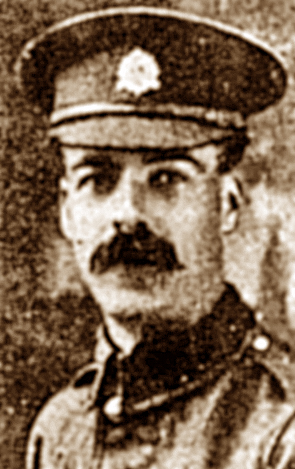
Connects to:
Year of Birth:
Year of Death:
Month of Death:
Day of Death:
Most Relevant Date:
Source:
Source Date:
Private Ernest Samuel Brandom
Title (Mr/ Mrs/ Capt/ Rev etc):
First name(s):
Surname only:
Pte Ernest Brandom, G/14511, 2nd Battalion Royal Sussex Regiment, was killed in action on the Somme on September 9th, 1916. He was aged 20.
He joined up soon after war broke out and left for the Front just a couple of months before his death. Parents Frederick George and Sarah Ann Brandom lived at 38 Duke Street, Luton.
At the time of the 1911 Census, 15-year-old Ernest was described as a grocer's assistant.
His father was also in France, serving with a labour unit, and he had one brother in training at Ampthill and another in training with the Royal Engineers at Sutton-on-Sea.
Service or Civilian?:
Service Number:
Regiment:
Place of Birth:
Place of Death:
War Memorial Location:
Grave Location:
World War I Address:
Individual Location:
Classifications:
Images:
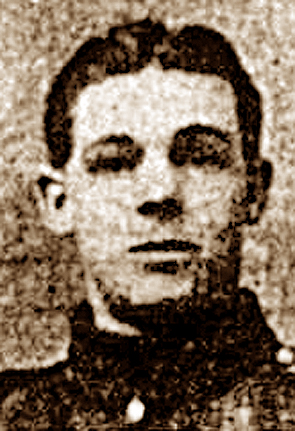
Connects to:
Year of Birth:
Year of Death:
Month of Death:
Day of Death:
Most Relevant Date:
Source:
Source Date:
Private Ernest William Furr
Title (Mr/ Mrs/ Capt/ Rev etc):
First name(s):
Surname only:
Pte Ernest William Furr, 3/7722, 7th Battalion Bedfordshire Regiment, was killed in action on the Somme on September 27th, 1916.
Born in Stopsley in 1897, he was the son of Selina and the late Alfred Furr, who in 1911 were living at Ramridge End with the surviving 12 of their 16 children. Alfred died in 1913, after which Selina and family moved to Hitchin Road, Luton.
In a 1915 street directory Selina is shown as living at 440 Hitchin Road, and on the Luton Roll of Honour commemorating Ernest the address is given as 454 Hitchin Road.
Service or Civilian?:
Service Number:
Regiment:
Place of Birth:
Place of Death:
War Memorial Location:
Grave Location:
World War I Address:
Individual Location:
Classifications:
Connects to:
Year of Birth:
Year of Death:
Month of Death:
Day of Death:
Most Relevant Date:
Private Ernest William Thomas Groom
Title (Mr/ Mrs/ Capt/ Rev etc):
First name(s):
Surname only:
Ernest W.T. Groom was a member of the 2nd Battallion The Bedfordshire Regiment, and was killed on the 11th July 1916 during the attack on Trones Wood.
The advance started at 3:10 AM, and the advance was not spotted until the men were 400 yards from the enemy. At this moment, machine guns opened fire on the men and the battle began. The woodlands were so dense and the night so dark, that it became impossible to see more than 5 yards ahead.
Private Groom died alongside 5 Officers and 239 Other ranks.
He had been called up in January 1916 and went to France in May after four months training at Felixstowe.
Ernest Groom was a single man aged 21 and the only son of nurseryman William Groom and his wife Ellen.
Service or Civilian?:
Service Number:
Regiment:
War time / or Pre War occupation:
Place of Birth:
Place of Death:
War Memorial Location:
Grave Location:
Luton ward:
World War I Address:
Individual Location:
Classifications:
Images:
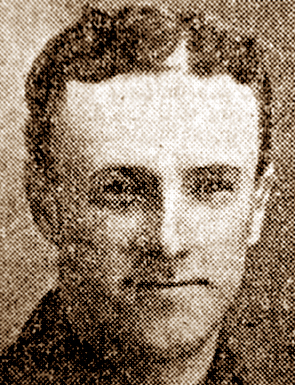
Connects to:
Year of Birth:
Year of Death:
Month of Death:
Day of Death:
Most Relevant Date:
Source:
Source Date:
Private Frank Gates
Title (Mr/ Mrs/ Capt/ Rev etc):
First name(s):
Surname only:
Pte Frank Gates, 13335, 7th Battalion Bedfordshire Regiment, was killed in action in the "Big Push" on the Somme on July 1st, 1916. He was aged 23.
The son of the late Benjamin (died 1908) and Elizabeth Rose Gates, of 82 Burr Street, Luton, he was before the war employed by George Kent's Ltd and was a regular attendant at the Wesleyan Central Mission Brotherhood. He enlisted with the Colours at the outbreak of war.
A short time before his death he wrote to his fiancee, Miss Eva Lane, of 29 Langley Street, Luton. In his letter he said: "I hope you will not give up all enjoyment...I mean the way to be happy and to make others happy around you, even if it is only with a pleasant smile or a kind word, or to help anyone who needs it. Neither of these were ever more needed than at the present time."
He is commemorated on the George Kent Roll of Honour board now housed at Stockwood Discovery Centre.
Service or Civilian?:
Service Number:
Regiment:
Medals Awarded:
Employer:
Place of Birth:
Place of Death:
War Memorial Location:
Grave Location:
World War I Address:
Individual Location:
Classifications:
Images:

Connects to:
Year of Birth:
Year of Death:
Month of Death:
Day of Death:
Most Relevant Date:
Source:
Source Date:
Private Fred Allen Kilby
Title (Mr/ Mrs/ Capt/ Rev etc):
First name(s):
Surname only:
Pte Fred Allen Kilby, 23310, 4th Battalion Bedfordshire Regiment, was killed in action on the Somme on the French front on November 13th, 1916. He was aged 27.
He was one of ten children of Henry John and Letitia Kilby, of 41 Winsdon Road, Luton. Before enlistment in November 1915, when he joined the Duke of Bedford's Training Camp at Ampthill, he was employed by Mr J. L. Frenay, bleacher and dyer, as a town collector.
Service or Civilian?:
Service Number:
Regiment:
War time / or Pre War occupation:
Place of Birth:
Place of Death:
War Memorial Location:
Grave Location:
World War I Address:
Individual Location:
Classifications:
Images:
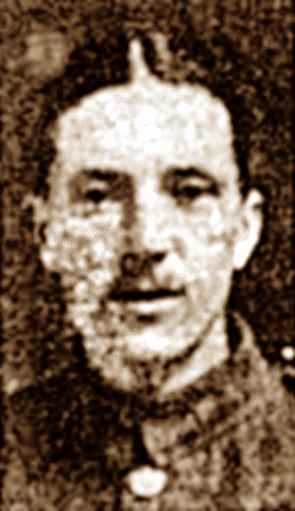
Connects to:
Year of Birth:
Year of Death:
Month of Death:
Day of Death:
Most Relevant Date:
Private Fred Harper
Title (Mr/ Mrs/ Capt/ Rev etc):
First name(s):
Surname only:
Pte Fred Harper, 13942, 1st Battalion Bedfordshire Regiment, was killed in action on on the Somme on September 4th, 1916. He was the first man in Offley to volunteer for war service and the sixth man from the village to perish on the battlefield.
In a letter to his widow Mary Elizabeth, the captain of his company wrote that her son's body was recovered and given a proper burial. However, he is recorded on the Thiepval Memorial, suggesting he had no known grave and where he was buried may have been destroyed or not relocated.
Fred Harper had married Mary Elizabeth McDonald in 1909 and had two sons, Leslie (born later in 1909) and Albert (born 1912). Mary herself died in 1918 at the age of 29.
Born in 1885, he was the son of John and Mary Ann Harper, of The Lodge, Lilley Bottom.
Service or Civilian?:
Service Number:
Regiment:
War time / or Pre War occupation:
Place of Birth:
Place of Death:
War Memorial Location:
Grave Location:
World War I Address:
Individual Location:
Classifications:
Year of Birth:
Year of Death:
Month of Death:
Day of Death:
Most Relevant Date:
Source:
Source Date:
Private Frederick Allen
Title (Mr/ Mrs/ Capt/ Rev etc):
First name(s):
Surname only:
Pte Frederick Allen, 20981, 10th Border Regiment, was killed in action on the Somme on July 30th, 1916. He was aged 34 and he and some chums had been fighting with the 16th Battalion Manchester Regiment for just a few days before his death.
Born in Luton in 1882, he was the only son of Arthur and Julia Allen, of 47 Chase Street, Luton. He had originally joined the Bedfords at Ampthill and was a special reservist. But for the commencement of the war he would have completed his Army service.
He went to France with the Bedfords and was there until the taking of Hill 60 in April 1915, when he received terrible wounds in the back. He was in hospital in Aberdeen for five months, and then came back to Luton for seven days before rejoining his comrades.
In November 1915 he was transferred to the 10th Border Regiment and was again invalided home. He went into hospital at Chichester, where he remained until May 29th, 1916. On his return to France on July 9th he and some of his chums were attached to the 10th Manchesters. He was at the Front only three weeks before his death on July 30th.
Before the war Pte Allen, who was single, had worked as a labourer at Mr Stewart Hubbard's dye works in Luton.
Service or Civilian?:
Service Number:
Regiment:
Medals Awarded:
Employer:
War time / or Pre War occupation:
Place of Birth:
Place of Death:
War Memorial Location:
Grave Location:
World War I Address:
Individual Location:
Classifications:
Images:

Connects to:
Year of Birth:
Year of Death:
Month of Death:
Day of Death:
Most Relevant Date:
Source:
Source Date:
Private Frederick Herbert Carter
Title (Mr/ Mrs/ Capt/ Rev etc):
First name(s):
Surname only:
Pte Frederick Herbert Carter, 15249, D Company, 7th Battalion, Bedfordshire Regiment, was killed in action on the Somme on July 1st, 1916. He never again got to see his wife, Jessie (nee Walters), of King's Road, Luton, after he married her while on leave a year earlier and had had to make a hurried return to his regiment.
Jessie received the official notification of he husband's death on July 20th. He had gone to France on July 26th, 1915, and was never fortunate enough to get home leave afterwards.
Pte Carter, aged 24, was the second son of Mr and Mrs Herbert Carter, of 8 Lyndhust Road, Luton, and old boy of Chapel Street School. Before joining up he had a baker's round with the Co-operative Society after working for hat manufacturer Mr Richard Coles in Buxton Road.
Pte Carter had enlisted on September 7th, 1914, with his chum Horace Day, of Slip End. Pte Day was by Pte Carter's side as best man at his wedding, and Pte Carter was by Pte Day's side when he was killed on outpost duty in January 1916.
Mr Carter Snr had been Luton's poor rate collector before joining Mr Barnard, the registrar of births and deaths.
Service or Civilian?:
Service Number:
Regiment:
Employer:
War time / or Pre War occupation:
Place of Birth:
Place of Death:
War Memorial Location:
Grave Location:
World War I Address:
Individual Location:
Images:
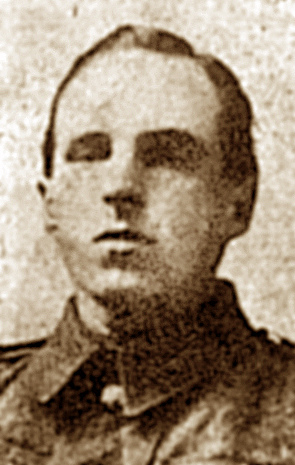
Connects to:
Year of Birth:
Year of Death:
Month of Death:
Day of Death:
Most Relevant Date:
Source:
Source Date:
Private Frederick William Armstrong
Title (Mr/ Mrs/ Capt/ Rev etc):
First name(s):
Surname only:
Pte Frederick William Armstrong, 19794, 7th Bedfords, was killed in action on July 1st, 1916 - the first day of the Battle of the Somme. He was aged 20.
Born in a cottage at Eaton Green Farm, Stopsley, in 1896, he was the son of Thomas and Annie Elizabeth Armstrong. His brother Charles, also a private in the 7th Bedfords, wrote to his parents with the sad news of his death. Frederick had been homes on leave five weeks before his death.
Prior to enlistment at the outbreak of war, Frederick Armstrong was employed by butchers H. Clarke & Sons, of Adelaide Street, Luton. He was a member of the Celtic Football Club (the local butchers' club) and was the second of the team's players to lose his life in action. He had gone out to the Front in May 1915.
Pte Armstrong's brother-in-law, Pte C. J. Wilmot, of the A.S.C., wrote to say that Fred had died an honourable death, "dying for the protection of you and his country".
On July 7th, the Rev G. Jarvis Smith, Wesleyan Chaplain, wrote to Mr and Mrs Armstrong to say he had been able to find the body of their son and given it a Christian burial. He had marked the spot where he was buried, and a cross would be erected there as soon as possible.
His family were later living at 9 Stuart Street, Luton.
Service or Civilian?:
Service Number:
Regiment:
Employer:
War time / or Pre War occupation:
Place of Birth:
Place of Death:
War Memorial Location:
Grave Location:
World War I Address:
Individual Location:
Classifications:
Images:
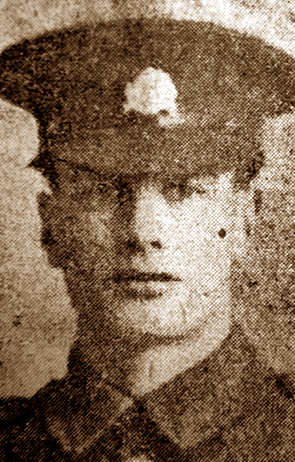
Connects to:
Year of Birth:
Year of Death:
Month of Death:
Day of Death:
Most Relevant Date:
Source:
Source Date:
Private George Henry Puddephatt
Title (Mr/ Mrs/ Capt/ Rev etc):
First name(s):
Surname only:
Pte George Henry (Harry) Puddephatt, 40119, 4th Battalion Bedfordshire Regiment, was killed in action on the Somme on November 13th, 1916. He was aged 19.
The son of Henry and Ann Puddephatt, of Summer Street, Slip End, he worked for Messrs F. Merchant and Sons, furnishers, of Manchester Street, Luton, before enlistment. He was in training in England until three months before his death.
Service or Civilian?:
Service Number:
Regiment:
Medals Awarded:
Employer:
Place of Birth:
Place of Death:
War Memorial Location:
Grave Location:
World War I Address:
Individual Location:
Classifications:
Images:
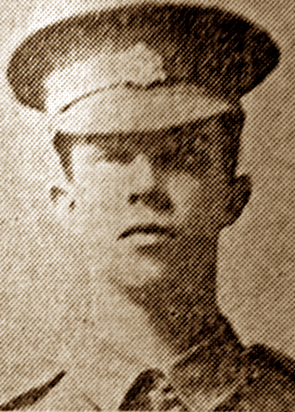
Connects to:
Year of Birth:
Year of Death:
Month of Death:
Day of Death:
Most Relevant Date:
Source:
Source Date:
Private George Morgan
Title (Mr/ Mrs/ Capt/ Rev etc):
First name(s):
Surname only:
Pte George Morgan, 13181, 8th Lincolnshire Regiment, died on November 25th, 1916, from wounds sustained on the Somme.
There seems to have been no report or picture in the Luton press at the time, but the following Roll of Honour death notice appeared in the Luton News of November 30th, 1916: "MORGAN - November 25, died of wounds, 2nd General Hospital, Le Havre, Pte George Morgan, aged 26, of 2 Liverpool Road, Luton."
New Cross (London)-born George Morgan was the son of George Henry and Elizabeth Morgan. He had joined up in August 1914 and is included on the Luton Roll of Honour.
Service or Civilian?:
Service Number:
Regiment:
Medals Awarded:
Place of Birth:
Place of Death:
War Memorial Location:
Grave Location:
World War I Address:
Individual Location:
Classifications:
Connects to:
Year of Death:
Month of Death:
Day of Death:
Most Relevant Date:
Source:
Source Date:
Private Gerald Sidney Brunton
Title (Mr/ Mrs/ Capt/ Rev etc):
First name(s):
Surname only:
Pte Gerald Sidney Brunton. 25529, 2nd Battalion Bedfordshire Regiment, was killed in action on the Somme on July 30th, 1916. He was aged 21 and single.
Born near Fakenham, Norfolk, in 1895, he was the son of Frederick William and Martha Elizabeth Brunton. Gerald was one of 12 children, 11 still living at the time of the 1911 Census, when the family were living at Wisbech, Cambridgeshire. He was then working as a farm labourer.
At the time of Gerald's death the family were living at 9 Vicarage Street, Luton. He had worked at the Luton Gas Works in Dunstable Road, and his father was an insurance agent with the Liverpool Victoria Friendly Society.
A sergeant in the platoon wrote to tell Pte Brunton's parents the news in a letter that arrived three weeks later. "I am proud to say that he fought with gallantry, and died bravely for his King and Country," wrote the sergeant.
Service or Civilian?:
Service Number:
Regiment:
Medals Awarded:
Employer:
Place of Birth:
Place of Death:
War Memorial Location:
Grave Location:
World War I Address:
Individual Location:
Classifications:
Images:

Connects to:
Year of Birth:
Year of Death:
Month of Death:
Day of Death:
Most Relevant Date:
Source:
Source Date:
Private Harold Ronald Kempson
Title (Mr/ Mrs/ Capt/ Rev etc):
First name(s):
Surname only:
Pte Harold Ronald Kempson, 43563, 140th Company, Machine Gun Corps (Infantry), died on September 22nd, 1916, from wounds sustained in action on the Somme. He was aged 34 and had lived at 18 Inkerman Street, Luton.
Born in Luton in 1882, the son of David and Elizabeth Kempson, he had married Florence Mary (nee Going) in 1909. In 1911 the couple were living at 20 Hampton Road, Luton, with their 10-month-old son Albert Edward. At the time Ronald, as he was known, was a straw hat machinist. He had previously served in the Beds Regiment (5323).
Florence remarried in 1922.
Service or Civilian?:
Service Number:
Regiment:
Medals Awarded:
Place of Birth:
Place of Death:
War Memorial Location:
Grave Location:
World War I Address:
Individual Location:
Classifications:
Connects to:
Year of Birth:
Year of Death:
Month of Death:
Day of Death:
Most Relevant Date:
Private Harry Waller
Title (Mr/ Mrs/ Capt/ Rev etc):
First name(s):
Surname only:
Pte Harry (Henry) Waller, 27820, 7th Battalion Bedfordshire Regiment, was killed in action on the Somme on October 24th, 1916. He was aged 35.
His mother Sarah Ann, living at 45 Langley Road [now Latimer Road], Luton, was told in a letter from Second Lieut J. H. Kay that her son was killed by a piece of shell while at his post in the trenches on October 24th.
Before joining up eight months previously he had been employed at Stewart Hubbard's dyeworks in Regent Street. He had been at the Front for three months.
Pte Waller's father Henry had died in 1904, and he had a brother, Fred, who had newly enlisted.
Service or Civilian?:
Service Number:
Regiment:
Employer:
War time / or Pre War occupation:
Place of Birth:
Place of Death:
War Memorial Location:
Grave Location:
World War I Address:
Individual Location:
Classifications:
Images:
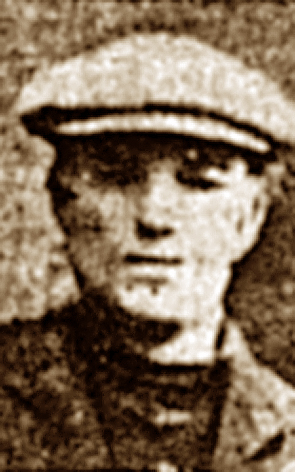
Year of Birth:
Year of Death:
Month of Death:
Day of Death:
Most Relevant Date:
Source:
Source Date:
Private Harry Waller
Title (Mr/ Mrs/ Capt/ Rev etc):
First name(s):
Surname only:
Pte Harry (Henry) Waller, 27820, 7th Battalion Bedfordshire Regiment, was killed in action on the Somme on October 24th, 1916. He was aged 35.
His mother Sarah Ann, living at 45 Langley Road [now Latimer Road], Luton, was told in a letter from Second Lieut J. H. Kay that her son was killed by a piece of shell while at his post in the trenches on October 24th.
Before joining up eight months previously he had been employed at Stewart Hubbard's dyeworks in Regent Street. He had been at the Front for three months.
Pte Waller's father had died in 1904, and he had a brother, Fred, who had newly enlisted.
Service or Civilian?:
Service Number:
Regiment:
Employer:
War time / or Pre War occupation:
Place of Birth:
Place of Death:
War Memorial Location:
Grave Location:
World War I Address:
Individual Location:
Classifications:
Images:
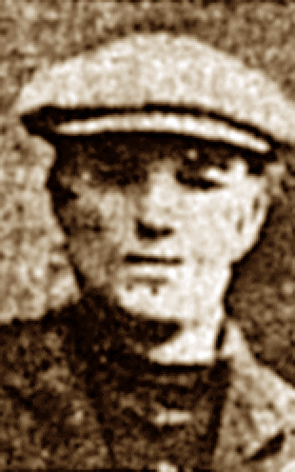
Connects to:
Year of Birth:
Year of Death:
Month of Death:
Day of Death:
Most Relevant Date:
Source:
Source Date:
Private Hedley Richard Farr
Title (Mr/ Mrs/ Capt/ Rev etc):
First name(s):
Surname only:
Pte Hedley Richard Farr, G/20105, 17th Battalion Middlesex Regiment (Duke of Cambridge's Own), was reported to have been killed in action on the Somme on August 8th, 1916. He was aged 38, single and had lived with his widowed mother Eliza (nee Groom) at 32 Liverpool Road, Luton.
He died just 15 days after leaving England, having been passed by the Medical Board at Bedford as fit for general service. Yet, as his mother and friends confirmed, he had suffered from a heart condition for 12 months before he enlisted, and his own medical adviser had told him he was hardly fit to remain in his occupation as a blocker in the hat trade.
He had appealed to the local Tribunal and been granted a month's exemption, while hoping that because of his condition he would be given conditional exemption. He felt he could not continue appealing and getting only a month, and eventually joined the Middlesex Regiment in April 1916.
His mother received the news of her son's death on August 27th but without any details. She said: "I feel sure he was never in actual fighting, and I feel sure he had died without getting into it. I think the strain has been too much."
Born in July 1878 in Luton, Pte Farr was a member of Luton Liberal Club. He was employed by Messrs Webb and Baker Ltd, of John Street, Luton. His father had died in 1907.
Service or Civilian?:
Service Number:
Regiment:
Medals Awarded:
Employer:
War time / or Pre War occupation:
Place of Birth:
Place of Death:
War Memorial Location:
Grave Location:
World War I Address:
Individual Location:
Classifications:
Images:
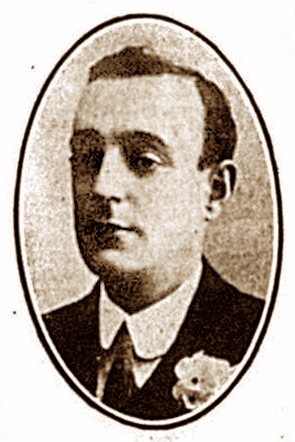
Connects to:
Year of Birth:
Year of Death:
Month of Death:
Day of Death:
Most Relevant Date:
Source:
Source Date:
Private Henry Cecil Pugh (Brooks)
Title (Mr/ Mrs/ Capt/ Rev etc):
First name(s):
Surname only:
Pte Henry Cecil Pugh (Brooks), 8103, 1/2nd Battalion London Regiment (Royal Fusiliers), was killed in action on the Somme on October 4th, 1916. He was formerly 4403, 5th Bedfordshires.
Pal Pte Henry James wrote to Henry's mother, Mrs Mary Hannah Brooks (formerly Pugh) at her home at 7 Hampton Road, Luton, that her son was "buried by several Beds boys behind the line, with his rifle as a tombstone. He was killed instantly."
Born in London in 1897, Henry was the stepson of Alfred Brooks, himself a sergeant stationed at Lowestoft. Prior to joining the Colours he was a moulder at the Diamond Foundry in Dallow Road.
On the day of Henry's death his uncle, Pte J. Brooks, of 75 Beech Road, Luton, was wounded in the thigh and was later recuperating at Tunbridge Wells.
Service or Civilian?:
Service Number:
Regiment:
Employer:
War time / or Pre War occupation:
Place of Birth:
Place of Death:
War Memorial Location:
Grave Location:
World War I Address:
Individual Location:
Classifications:
Images:

Connects to:
Year of Birth:
Year of Death:
Month of Death:
Day of Death:
Most Relevant Date:
Source:
Source Date:
Private Herbert Harold Howkins
Title (Mr/ Mrs/ Capt/ Rev etc):
First name(s):
Surname only:
Pte Herbert Harold Howkins, 11888, 11th Royal Fusiliers, was reported to have been killed in action on the Somme on September 25th, 1916. He was aged 31.
He was the son of the late John Howkins (died 1892), who had been licensee of the Fox pub in Dunstable Road. His mother, Harriet, remarried in 1895 and lived under her new married name of Seabrook at 134 Dallow Road, Luton.
Capt G. W. Morgan wrote to Mrs Seabrook: "Pte Howkins was a machine gunner, and was hit by a shell and died instantly. The same shell killed four and wounded other men of the same section.
"This happened during the attack on the German stronghold on September 25th in which the Royal Fusiliers took part. Pte Howkins did his duty nobly and well, and was a splendid soldier, cool and brave in most trying times."
Pte Howkins is commemorated on the Luton Roll of Honour, but Pte 11888 Royal Fusiliers on the Thiepval Memorial on the Somme is listed as Pte Harry Hern, killed September 26th, 1916. Pte Howkins does not appear under that name in military records.
Service or Civilian?:
Service Number:
Regiment:
Employer:
War time / or Pre War occupation:
Place of Birth:
Place of Death:
War Memorial Location:
Grave Location:
World War I Address:
Individual Location:
Classifications:
Connects to:
Year of Birth:
Year of Death:
Month of Death:
Day of Death:
Most Relevant Date:
Source:
Source Date:
Private Herbert Owen Sawyer
Title (Mr/ Mrs/ Capt/ Rev etc):
First name(s):
Surname only:
Luton-born Pte Herbert Owen Sawyer, 18362, 1st Battalion Bedfordshire Regiment, was killed in action on the Somme on September 5th, 1916.
Born in 1885 to flour miller Frederick Sawyer and his wife Annie, he spent most of his life in Ponders End, Middlesex, to where his family moved after 1891, when they were living at 20 Melson Street, Luton.
Herbert married Mary Ann Susan Swain at St Matthew's Church, Ponders End, in October 1910, and the couple had two children, Florence (born 1911) and Jessie (born 1913).
Service or Civilian?:
Service Number:
Regiment:
Medals Awarded:
Place of Birth:
Place of Death:
War Memorial Location:
Grave Location:
World War I Address:
Classifications:
Year of Birth:
Year of Death:
Month of Death:
Day of Death:
Most Relevant Date:
Private Horace Bleaney
Title (Mr/ Mrs/ Capt/ Rev etc):
First name(s):
Surname only:
Pte Horace Bleaney, 22762, 2nd Battalion Bedfordshire Regiment, was killed in action at Trones Wood on the Somme on July 3rd, 1916. He left a widow and two boys.
He had enlisted in October 1915 and was trained at Landguard and Felixstowe before going to the Front the following June. Prior to joining up, he was employed by hat manufacturer Miss Pattie Longstaffe, of Guildford Street, Luton,
Born on September 20th, 1877, he married Georgina Lawrence in 1897 and lived at 75 Ashton Road, Luton. At the time of the 1911 Census, the couple had two sons, Edwin Horace, aged 11, and Robert Lawrence, aged five. Horace was a straw hat blocker.
Service or Civilian?:
Service Number:
Regiment:
War time / or Pre War occupation:
Place of Birth:
Place of Death:
War Memorial Location:
Grave Location:
World War I Address:
Individual Location:
Classifications:
Connects to:
Year of Birth:
Month of Birth:
Day of Birth:
Year of Death:
Month of Death:
Day of Death:
Most Relevant Date:
Private Horace Fensome
Title (Mr/ Mrs/ Capt/ Rev etc):
First name(s):
Surname only:
Pte Horace Fensome, 13261, 1st Battalion Bedfordshire Regiment, was presumed killed in action on the Somme on or after September 3rd, 1916.
Born in 1892, he was the son of Samuel and Ellen Fensome, of Ramridge End Lane (later Ashcroft Road), Stopsley. Prior to enlisting he was a farm labourer.
He is commemorated on Stopsley War Memorial.
Service or Civilian?:
Service Number:
Regiment:
War time / or Pre War occupation:
Place of Birth:
Place of Death:
War Memorial Location:
Grave Location:
World War I Address:
Individual Location:
Classifications:
Connects to:
Year of Birth:
Year of Death:
Month of Death:
Day of Death:
Most Relevant Date:
Source:
Private James Hubert Mimms
Title (Mr/ Mrs/ Capt/ Rev etc):
First name(s):
Surname only:
Pte James Hubert Mimms, 14405, 7th Battalion Bedfordshire Regiment, was killed in action on the Somme on September 28th, 1916.
Born in Luton in 1892, he was the son of William Mimms and wife Sarah Ann (nee Hughes), of 11 Peach Street, Luton. In the 1911 Census James was described as a toolmaker living at home with his parents, four brothers and a sister.
A sergeant wrote that all the men at one gun had been knocked out, except Pte Mimms, who was ordered to another spot.He did not arrive.
Three weeks later a soldier in the Cheshire Regiment reconnoitring in the trenches came across the body of Pte Mimms, who was identified by his clothing and papers he was carrying.
He is commemorted on the Luton Roll of Honour and St Mary's Church Memorial.
Service or Civilian?:
Service Number:
Regiment:
War time / or Pre War occupation:
Place of Birth:
Place of Death:
War Memorial Location:
Grave Location:
World War I Address:
Individual Location:
Classifications:
Images:

Connects to:
Year of Birth:
Year of Death:
Month of Death:
Day of Death:
Most Relevant Date:
Source:
Source Date:
Private James Thomas Canderton
Title (Mr/ Mrs/ Capt/ Rev etc):
First name(s):
Surname only:
Pte John Thomas Canderton, G/13318, 11th Battalion The Queen's (Royal West Surrey) Regiment, was killed in action on the Somme on October 26th, 1916. He was aged 19.
In a letter to parents William and Alice Canderton, of 24 Maple Road, Luton, Lieut H. M. Todd wrote that Pte Canderton was killed while observing the enemy lines from his trench. He was buried with all the reverence due to a soldier fighting for his King and country.
In his last letter home, written on October 22nd, Pte Canderton said he was packing all his troubles in his old kit bag and smiling in his little wooden hut, hoping to be eating his Christmas pudding at home.
Pte Canderton had worked in the carpenters' shop at the Diamond Foundry before joining up at the fourth attempt on May 15th, 1916. During his 12 weeks training he was awarded the "crossed rifles" and additional pay for his shooting skills. He had gone to the front in August.
Service or Civilian?:
Service Number:
Regiment:
Medals Awarded:
Employer:
War time / or Pre War occupation:
Place of Birth:
Place of Death:
War Memorial Location:
Grave Location:
World War I Address:
Individual Location:
Classifications:
Images:
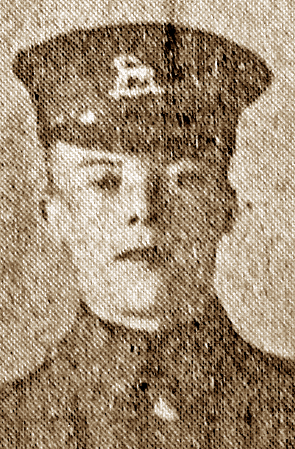
Connects to:
Year of Birth:
Year of Death:
Month of Death:
Day of Death:
Most Relevant Date:
Source:
Source Date:
Private John Dyson
Title (Mr/ Mrs/ Capt/ Rev etc):
First name(s):
Surname only:
Pte John Dyson, 23182, 4th Battalion Bedfordshire Regiment, was killed in action on the Somme on November 13th, 1916.
Regimental records say he was born in Bolton, Lancashire, and resided in Luton. He is commemorated on the Luton Roll of Honour, but without an address. Sadly nothing appears to have been recorded about him in Luton newspapers.
Service or Civilian?:
Service Number:
Regiment:
Medals Awarded:
Place of Birth:
Place of Death:
War Memorial Location:
Grave Location:
World War I Address:
Classifications:
Connects to:
Year of Death:
Month of Death:
Day of Death:
Most Relevant Date:
Private John Radford
Title (Mr/ Mrs/ Capt/ Rev etc):
First name(s):
Surname only:
Pte John Radford, 23496, 4th Battalion Bedfordshire Regiment, died in the No. 44 Casualty Clearing Station in France on November 14th, 1916, the day after he was wounded in action on the Somme.
Pte Sidney John Vass, his lifelong pal from Luton with whom he enlisted and went to France, was also to died in hospital from November 13th wounds sustained on the Somme. He passed away on November 24th, 1916.
Pte Radford, son of Harry and Julia Radford, of 9 Windsor Street, Luton, was employed by cardboard box maker Mr F. Oakley & Son, of 11 Williamson Street, Luton, prior to the war.
He and pal Sidney had been in France only four months when they were wounded within a few hours of each other on November 13th.
Service or Civilian?:
Service Number:
Regiment:
Employer:
War time / or Pre War occupation:
Place of Birth:
Place of Death:
War Memorial Location:
Grave Location:
World War I Address:
Individual Location:
Classifications:
Images:

Connects to:
Year of Birth:
Year of Death:
Month of Death:
Day of Death:
Most Relevant Date:
Source:
Source Date:
Private John William Martin
Title (Mr/ Mrs/ Capt/ Rev etc):
First name(s):
Surname only:
Pte John William Martin, G/14844, machine gun section, 13th Battalion Royal Sussex regiment, was killed in action on the Somme on October 21st, 1916. He was aged 18.
As a member of the Beds Territorial Force he was mobilised at the outbreak of war and subsequently transferred to the Royal Sussex Regiment. He had been at the Front since August 1916. Before the war he was worked for painter and house decorator Frederick Price, of Albion Road, Luton.
Parents Francis Joseph and Alice Susannah Martin lived at 25 Queen Street, Luton, at the time of their son's death.
Service or Civilian?:
Service Number:
Regiment:
Employer:
War time / or Pre War occupation:
Place of Birth:
Place of Death:
War Memorial Location:
Grave Location:
World War I Address:
Individual Location:
Classifications:
Images:

Connects to:
Year of Birth:
Year of Death:
Month of Death:
Day of Death:
Most Relevant Date:
Source:
Source Date:
Private Joseph Payne
Title (Mr/ Mrs/ Capt/ Rev etc):
First name(s):
Surname only:
Pte Joseph Payne, 18510, 2nd Battalion Bedfordshire Regiment, died on July 16th, 1916, from wounds sustained on the Somme ten days previously.
He was the son of Mrs E. Payne, of 15 Inkerman Street, Luton. He was aged 24 and prior to enlistment was employed at the Gelatine Works in New Bedford Road, Luton.
Pte Payne joined the Army shortly after war broke out and trained at Ampthill, from where he was drafted to his battalion of the Bedfordshire Regiment. He had been in France nearly 12 months when wounded on July 2nd, the second day of the great advance on the Somme. His mother was later notified that he had died from his wounds on July 16th.
Service or Civilian?:
Service Number:
Regiment:
Medals Awarded:
Employer:
Place of Birth:
Place of Death:
War Memorial Location:
Grave Location:
World War I Address:
Individual Location:
Classifications:
Images:
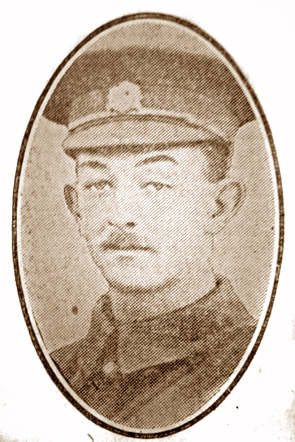
Connects to:
Year of Birth:
Year of Death:
Month of Death:
Day of Death:
Most Relevant Date:
Source:
Source Date:
Private Joseph Ward
Title (Mr/ Mrs/ Capt/ Rev etc):
First name(s):
Surname only:
Pte Joseph Ward, 4th Battalion Bedfordshire Regiment, died on November 21st, 1916, from wounds sustained in action on the Somme four days earlier. He was aged 24.
Being an orphan, he had lived with his married sister, Mrs Alice Gore, for upwards of ten years prior to joining the Ampthill Training Camp a year earlier.
Official notification reached Mrs Gore at her home at 86 Park Road West, Luton, that her brother had sustained gunshot wounds in the right thigh and a fracture of the femur, and was seriously ill in Dannes-Camiers General Hospital in France.
Later Mrs Gore received telegrams from the Records Office telling her she might visit her brother and she set off on November 22nd. She was on the boat train at Victoria Station in London when she received a telephone message informing her that her brother had died at 1.40 the previous day and her journey was therefore unnecessary. He would be buried in the British Cemetery with military honours.
Prior to enlistment, Pte Ward was an employee of Hat Materials Ltd, 10 Cardigan Street, Luton. He also regularly attended the King Street Pleasant Sunday Afternoon Brotherhood.
Service or Civilian?:
Service Number:
Regiment:
Employer:
Place of Birth:
Place of Death:
War Memorial Location:
Grave Location:
World War I Address:
Individual Location:
Classifications:
Images:
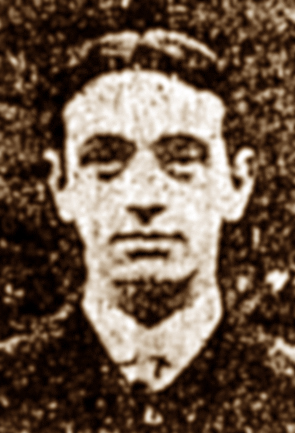
Connects to:
Year of Birth:
Year of Death:
Month of Death:
Day of Death:
Most Relevant Date:
Source:
Source Date:
Private Josiah Webb
Title (Mr/ Mrs/ Capt/ Rev etc):
First name(s):
Surname only:
Pte Josiah Webb, 18683, 2nd Battalion Bedfordshire Regiment, died on July 12th, 1916, from wounds sustained in action near Trones Wood on the Somme.
He was a son of John Thomas and Ellen Webb, of Farley Green, Caddington, and was described in the 1911 Census as a cowman on the Stockwood Estate, where he had been employed for some years.
A younger brother, Pte Charles William Webb, 13085, 6th Battalion Bedfordshire Regiment, was killed in action at Trones Wood on July 10th, 1916. Three other Webb sons were also serving in the Colours.
Service or Civilian?:
Service Number:
Regiment:
Employer:
War time / or Pre War occupation:
Place of Birth:
Place of Death:
War Memorial Location:
Grave Location:
World War I Address:
Individual Location:
Classifications:
Images:
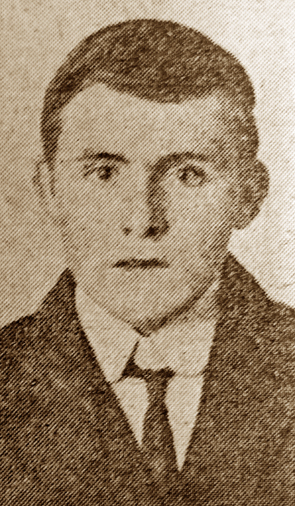
Year of Birth:
Year of Death:
Month of Death:
Day of Death:
Most Relevant Date:
Source:
Source Date:
Private Leonard Stapleton
Title (Mr/ Mrs/ Capt/ Rev etc):
First name(s):
Surname only:
Pte Leonard Stapleton, 18413, 7th Battalion Bedfordshire Regiment, was killed in action on the Somme on July 18th, 1916. He was aged 33.
Born in 1883 in Stondon, Beds, he was the son of Sarah Stapleton, who married George Hyde in Stondon, also that year.
Leonard married Maud Jepps, of Shillington, in 1905, and in 1911 he was a market gardener living with his wife in Marsh Road, Leagrave.
At the time of Leonard's death Maud was living at 48 Saxon Road, Luton, where she received the news in a letter from Cpl H. Swannell, 15083, of the 7th Beds. He wrote: "He [Leonard] was one of a party of six, and unfortunately a German shell burst among them, killing them all. I can assure you he suffered no pain; it was all over in a moment."
Immediately before he enlisted in the Beds Regiment on September 5th, 1914, Pte Stapleton was employed by coal merchants Godden and Rudd, of John Street, Luton. After training at various centres he went to France on July 24th, 1915. He was in the trenches about four months when he was put on battalion transport. He had several narrow escapes in the trenches, and was once struck by a German bullet, but without injury.
He had been home on a few days' leave early in 1916. He returned to the Front and was on transport duty for the battalion until his death.
Pte Stapleton had brothers (surnames Hyde) serving in the 5th Beds Home Service Battalion, the 5th Beds in Egypt and the Army Veterinary Corps in France. A further brother was in a convalescent home in England recovering from the effects of German gas. The 1901 Census listed his brothers' names as Arthur, William, James and George Hyde.
Service or Civilian?:
Service Number:
Regiment:
Medals Awarded:
Employer:
War time / or Pre War occupation:
Place of Birth:
Place of Death:
War Memorial Location:
Grave Location:
World War I Address:
Individual Location:
Classifications:
Images:
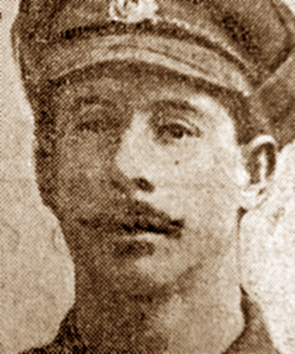
Connects to:
Year of Birth:
Year of Death:
Month of Death:
Day of Death:
Most Relevant Date:
Source:
Source Date:
Private Lionel Ralph Worsley
Title (Mr/ Mrs/ Capt/ Rev etc):
First name(s):
Surname only:
Pte Lionel Ralph Worsley, 3/7730, 7th Battalion Bedfordshire Regiment, was killed in action in the Big Advance at the start of the Battle of the Somme on July 1st, 1916. He was aged 33, married and lived at 24 Ash Road, Luton.
He and his comrades had leapt over the parapet, and Lionel, a bomber, was pointing out to his gunner pal a number of enemy troops in a trench when a sniper shot him in the head. He fell back into his comrades arms and died instantly. The Beds & Herts Saturday Telegraph said he had been buried in a hero's grave at Carnoy.
Prior to enlistment he was employed as a tool store keeper at Vauxhall Motors and later worked at Skefko. He had previously been in the Army for 8½ years and seen service in India. He re-enlisted in the Bedfordshire Regiment after the outbreak of war and had been in France almost 12 months, being wounded twice.
He had married Christina Johnson in the summer of 1915 and they had a baby daughter Molly, whom he saw in his newly furnished home in Ash Road during home leave in February.
Parents Thomas and Gertrude Worsley lived at 113 Oak Road, Luton. Their family included daughters Ethel and Ada, who were engaged on special war work at the Admiralty Inspection Building in Bute Street, Luton, and son Gunner Leonard Aubrey Worsley, R.F.A., who fought in the Battle of the Somme and was wounded in July 1917 before being demobbed in March 1919.
Service or Civilian?:
Service Number:
Regiment:
Medals Awarded:
Employer:
Place of Birth:
Place of Death:
War Memorial Location:
Grave Location:
World War I Address:
Individual Location:
Classifications:
Images:
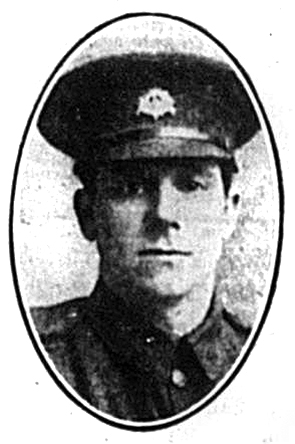
Connects to:
Year of Birth:
Year of Death:
Month of Death:
Day of Death:
Most Relevant Date:
Source:
Source Date:
Private Lusignan Ernest Jeffery
Title (Mr/ Mrs/ Capt/ Rev etc):
First name(s):
Surname only:
Pte Lusignan Ernest Jeffery, 26047, 9th Loyal North Lancs Regiment, was killed in action on the Somme on September 3rd, 1916. He was aged 25.
Born in Banbury, Oxon, in 1891, he worked for hat firm A. Hucklesby and Co, George Street, Luton, before enlisting in the Bedfordshire Regiment in February 1916. He was transferred to the Loyal North Lancashires and was attached to the Manchester Regiment on the Somme. Comrades at first reported him wounded and the War Office notified that he was missing.
Pte Jeffery was the son of Fanny (Frances) and the late George Jeffery. He had married Alice Eleanor Tuffnell in Luton earlier in 1916, his young widow living at 61 John Street, Luton, with her parents and family.
It was not until August 1917 that Lusignan's mother, living at 12 Buxton Road, Luton, was told officially that he was presumed killed. Her son had been a successful pigeon-fancier in Luton, and had gained several successes in the Luton Colombarium Society in 1910.
Service or Civilian?:
Service Number:
Regiment:
Employer:
War time / or Pre War occupation:
Place of Birth:
Place of Death:
War Memorial Location:
Grave Location:
World War I Address:
Individual Location:
Classifications:
Images:

Connects to:
Year of Birth:
Year of Death:
Month of Death:
Day of Death:
Most Relevant Date:
Source:
Source Date:
Private Percival Frank Buckingham
Title (Mr/ Mrs/ Capt/ Rev etc):
First name(s):
Surname only:
Pte Percival (Percy) Frank Buckingham, 3/7179, 2nd Battalion Bedfordshire Regiment, died on November 4th, 1916, from wounds received on the Somme. He was aged 22.
Parents Alfred and Annie Buckingham, of 136 North Street, Luton, received news earlier that Percy was in hospital in France suffering from shell shock. His mother then received a letter from her son to say he was much better and was expecting to rejoin his unit.
But just a few days later she received a telegram stating that Percy had again been in action and that he had died of wounds received on November 4th.
Pte Buckingham joined the Army six years previously at the age of 16, being in the Special Reserve. At the outbreak of war he went out to France with the Bedfordshire Regiment and was wounded both at Mons and Ypres. After his second wounding he came home on leave and was then sent to Felixstowe as a lance-corporal over a machine gun section. But when he later returned to France he renounced his rank.
Percy had been one of the first to work in the Emblem moulding shop at George Kent's Ltd, but at the outbreak of war he was a moulder at the Diamond Foundry, Dallow Road.
Service or Civilian?:
Service Number:
Regiment:
Medals Awarded:
Employer:
War time / or Pre War occupation:
Place of Birth:
Place of Death:
War Memorial Location:
Grave Location:
World War I Address:
Individual Location:
Classifications:
Images:
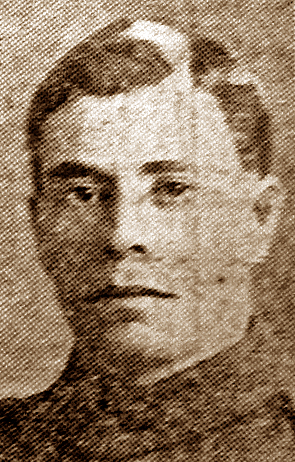
Connects to:
Year of Birth:
Year of Death:
Month of Death:
Day of Death:
Most Relevant Date:
Source:
Source Date:
Private Percy George Lane
Title (Mr/ Mrs/ Capt/ Rev etc):
First name(s):
Surname only:
Pte Percy George Lane, 14614, 7th Battalion Bedfordshire Regiment, was killed in action on the Somme on September 27th, 1916. He was aged 22 and the only son of George and Elizabeth Lane, of 212 High Town Road, Luton.
Born in Coleshill, Amersham, Bucks, he was familiarly known as 'Mandy' to football comrades in Luton Victoria Rangers FC. Prior to enlistment he was a moulder at the Borough Engineering Works in Luton.
He joined the colours in September 1914 and was trained at Dovercourt and Colchester.He went to France in August 1915 and was on active service continually, without leave. Comrade L-Cpl Norman said Pte Lane was hit in the neck by a bullet and died instantly. He suffered no pain.
Pte Lane was also mourned by his fiancee and two sisters.
Service or Civilian?:
Service Number:
Regiment:
Employer:
War time / or Pre War occupation:
Place of Birth:
Place of Death:
War Memorial Location:
Grave Location:
World War I Address:
Individual Location:
Classifications:
Images:

Connects to:
Year of Birth:
Year of Death:
Month of Death:
Day of Death:
Most Relevant Date:
Source:
Source Date:
Private Percy Haydn Day
Title (Mr/ Mrs/ Capt/ Rev etc):
First name(s):
Surname only:
Pte Percy Haydn Day, 15608, 1st Battalion Bedfordshire Regiment, died of wounds sustained in action on the Somme on July 27th, 1916.
Born in the summer of 1895, he was the son of Arthur and Mary Jane Day, of 17 Holly Walk, Luton, where Percy was born and where the family had lived for 23 years. The couple had 11 children, eight of them boys.
Prior to enlisting, Percy was employed in the Bute Street warehouse of hat manufacturers Wright and Giddings. He had been educated at Queen Square School and his father was formerly a straw hat manufacturer.
At the time of his death Pte Day was officer's servant to Capt Henry Burton who was also killed on July 27th. Letters of sympathy from Capt Burton's mother and employer Mr Ernest Giddings were among those sent to Mrs Day.
The picture of Pte Day (in the centre) was published in the Beds & Herts Saturday Telegraph on September 2nd, 1916. The group had been billeted in the damaged house behind them but were elsewhere when it was blown to pieces.
Service or Civilian?:
Service Number:
Regiment:
Medals Awarded:
Employer:
War time / or Pre War occupation:
Place of Birth:
Place of Death:
War Memorial Location:
Grave Location:
World War I Address:
Individual Location:
Classifications:
Images:

Connects to:
Year of Birth:
Year of Death:
Month of Death:
Day of Death:
Most Relevant Date:
Source:
Source Date:
Private Percy John Clark
Title (Mr/ Mrs/ Capt/ Rev etc):
First name(s):
Surname only:
Pte Percy John Clark, 2872, 5th London Regiment (London Rifles), died in the Military Hospital, Le Tréport, France, on July 7th, 1916, from wounds received on July 1st, the first day of the Battle of the Somme. He had been in the fighting line for two or three months.
Born in Surrey in 1895, he was the son of Mr John Clark, of 243 Dunstable Road, Luton, who was formerly manager of the Luton Labour Exchange but had since moved to take up important munition work at Woolwich Arsenal.
Before he joined the Army in October 1915, Percy had been employed for about four years in the export department of hat manufacturers Messrs Vyse, Sons and Co in Bute Street, Luton. Both of his sisters also worked at Vyse's.
Service or Civilian?:
Service Number:
Regiment:
Employer:
War time / or Pre War occupation:
Place of Birth:
Place of Death:
War Memorial Location:
Grave Location:
World War I Address:
Individual Location:
Classifications:
Connects to:
Year of Birth:
Year of Death:
Month of Death:
Day of Death:
Most Relevant Date:
Source:
Source Date:
Private Percy Sidney Martin
Title (Mr/ Mrs/ Capt/ Rev etc):
First name(s):
Surname only:
Pte Percy Sidney Martin, 23730, 4th Battalion Bedfordshire Regiment, was killed in action on the Somme on November 13th, 1916.
As a six-year-old in 1901 he was living with his mother and grandparents William and Susan at 16 North Street, Luton.
By 1911 he was a plait dyer living at 23 Back Street, Luton, with his mother and her husband James Webb, whom she had married at St Matthew's Church, Luton, on December 23rd, 1905. In the 1911 Census Percy is described as a boarder.
Service or Civilian?:
Service Number:
Regiment:
War time / or Pre War occupation:
Place of Birth:
Place of Death:
War Memorial Location:
Grave Location:
World War I Address:
Individual Location:
Classifications:
Connects to:
Year of Birth:
Year of Death:
Month of Death:
Day of Death:
Most Relevant Date:
Private Ralph Green
Title (Mr/ Mrs/ Capt/ Rev etc):
First name(s):
Surname only:
Pte Ralph Green, 34816, 1st Battalion Royal Welsh Fusiliers, died on August 30th, 1916, from wounds received in action on the Somme on August 27th. He was the second son of Luton Town FC Secretary Mr Charles Green and his wife Ellen (nee Shaw), of 73 Hazelbury Crescent, Luton.
Pte Green had himself sent a postcard dated August 28th to his parents to say he was wounded and in hospital. News of his death followed in a letter from Canon Adderley, a chaplain with the forces, who said Pte Green had been admitted to hospital with shrapnel wounds in the abdomen. He had been buried on the evening of August 30th in Heilly Military Cemetery.
Ralph Green was educated at Dunstable Grammar School, where he had gained a scholarship. He passed a Civil Service exam on leaving school and was given a post as a clerk at the offices of the Board of Trade.
He enlisted in the Royal Welsh Fusiliers at Holborn in London in November 1915, and was drafted to France on attaining his 19th birthday around a month before his death. In France he was attached to the Royal Engineers as a signaller.
Service or Civilian?:
Service Number:
Regiment:
Medals Awarded:
Employer:
War time / or Pre War occupation:
Place of Birth:
Place of Death:
War Memorial Location:
Grave Location:
World War I Address:
Individual Location:
Classifications:
Images:
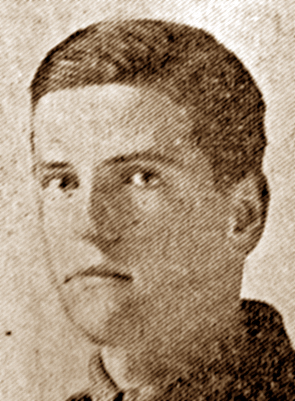
Connects to:
Year of Birth:
Year of Death:
Month of Death:
Day of Death:
Most Relevant Date:
Source:
Source Date:
Private Robert Charles Morsley
Title (Mr/ Mrs/ Capt/ Rev etc):
First name(s):
Surname only:
Pte Robert Charles Morsley, 3804, C Company, 1st Battalion Honourable Artillery Company, was killed in action on the Ancre, Somme, on November 14th[1], 1916. He was just short of his 18th birthday.
Robert was the second son of iron foundry foreman Charles and Martha Morsley, of 21 Park Street West [now Strathmore Avenue], Luton. He was educated at Luton Modern School, where he was a school games captain.
On leaving school in March 1915 he joined the Army as a private in the infantry section of the Honourable Artillery Company and, after training, was sent to France in September 1915.
Writing to Mr Morsley, Pte J. Wing, a school friend living at 18 Stockwood Crescent, said: "We were at school together and were both in the same company, at home and out here, and we have always been great pals. Bob was shot in the chest when the battalion went over the top and was killed instantaneously, so it is a little comfort to know that he suffered no pain.
"I was not near him when he fell, but I was told that he was very cool and brave right up to the time he was hit. We buried him with some others of our battalion who were killed, and the Padre held a nice little service over the grave." The service had been conducted with shells bursting around.
[1] The date of death was reported in the Luton News as November 14th. Military records place death between November 13th and 15th, and the Commonwealth War Graves Commission gives a date of November 15th.
Service or Civilian?:
Service Number:
Regiment:
Place of Birth:
Place of Death:
War Memorial Location:
Grave Location:
World War I Address:
Individual Location:
Classifications:
Images:

Connects to:
Year of Birth:
Year of Death:
Month of Death:
Day of Death:
Most Relevant Date:
Source:
Source Date:
Private Samuel James Carter
Title (Mr/ Mrs/ Capt/ Rev etc):
First name(s):
Surname only:
Pte Samuel James Carter, 27755, 1st Battalion Bedfordshire Regiment, was killed in action on the Somme on September 4th, 1916.
Born in 1880, Samuel was the only son of the late Alfred (died 1904) and Clarissa Elizabeth (died 1887) Carter. The family were living at 57 Hastings Street at the time of his birth, and later moved to Stanley Street and then Bury Park Road.
In early 1916 he married 41-year-old Minnie Foster, of 12 Wood Street, Luton, just a week or two before going to France. For upwards of six years he had lodged at 12 Bridge Street.
Service or Civilian?:
Service Number:
Regiment:
Place of Birth:
Place of Death:
War Memorial Location:
Grave Location:
World War I Address:
Individual Location:
Classifications:
Images:
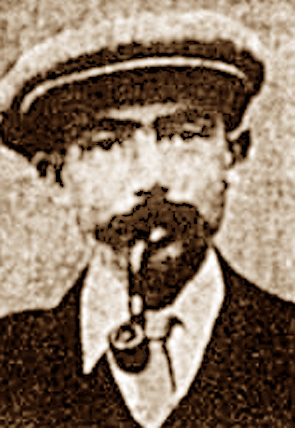
Connects to:
Year of Birth:
Year of Death:
Month of Death:
Day of Death:
Most Relevant Date:
Source:
Source Date:
Private Samuel Stokes
Title (Mr/ Mrs/ Capt/ Rev etc):
First name(s):
Surname only:
Pte Samuel Stokes, 43241, 6th Battalion Northamptonshire Regiment, was killed in action on the Somme on October 25th, 1916. He was the second son of Samuel and Phoebe Stokes, of 10 Alfred Street, Luton, to perish on the battlefield in three months - L-Cpl Robert Stokes was killed in action on August 9th.
At the time of Samuel's death, Robert, a holder of the Military Medal, was reported missing with hopes that he may have been taken as a prisoner of war.
Commanding Officer N. R. Hunting wrote that 29-year-old Samuel was killed by a shell on October 25th. The shell exploded near to him and he was killed instantly.
Samuel joined the Bedfordshire Regiment (service number 26082) in March 1916 and following training at Felixstowe was transferred to the Northants Regiment. Prior to enlistment he was employed at Messrs Eastman and Sons, Acton Vale, having previously worked in the straw trade for Messrs Alfred Warren and Sons, Bute Street, Luton.
Service or Civilian?:
Service Number:
Regiment:
Medals Awarded:
Place of Birth:
Place of Death:
War Memorial Location:
Grave Location:
World War I Address:
Individual Location:
Images:
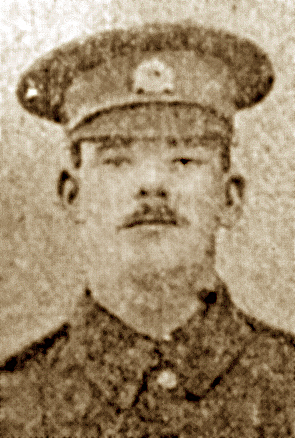
Connects to:
Year of Birth:
Year of Death:
Month of Death:
Day of Death:
Most Relevant Date:
Source:
Source Date:
Private Sidney Alfred Burgess
Title (Mr/ Mrs/ Capt/ Rev etc):
First name(s):
Surname only:
Pte Sidney Alfred Burgess, 3/7212, 2nd Battalion Bedfordshire Regiment, was killed in action on the Somme on October 12th, 1916. He was aged 22.
In a letter to Mrs Burgess at 23 Buxton Road, Luton, Cpl C. Smith wrote that he was fighting near to Sidney, who had suffered no pain as his death was instantaneous. He died from a bullet that hit him near the heart.
Born at Woodside, Sidney was the third eldest son among ten children born to Alfred and Emily Burgess. Prior to enlistment he worked for hat manufacturers Messrs J. C. Kershaw. He joined up at the outbreak of hostilities and had been to the Front three times, having been wounded once, had brain fever and suffered problems with his legs and feet, besides having had three operations to his head.
At the time of the 1911 Census Sidney and most of his family were living at 7 Adelaide Street, Luton. Sidney was then a 17-year-old errand boy.
Service or Civilian?:
Service Number:
Regiment:
Place of Birth:
Place of Death:
War Memorial Location:
Grave Location:
World War I Address:
Individual Location:
Classifications:
Images:

Connects to:
Year of Birth:
Year of Death:
Month of Death:
Day of Death:
Most Relevant Date:
Private Sidney Charles Anthony
Title (Mr/ Mrs/ Capt/ Rev etc):
First name(s):
Surname only:
Pte Sidney Charles Anthony, 60778, 24th Royal Fusiliers, was killed in action on the Somme on November 13th, 1916. He was aged 33.
Two comrades wrote to his widow, Marion, at 83 Bury Park Road, Luton, to say they had seen Sidney go into action in the first wave of a charge but had not seen him since.
One comrade, L-Cpl C. Lennon, said the battalion had gone into action on the morning of the 13th and had a great victory,but lost quite a number of brave lads.
"Your husband was with us when the attack was commenced, and I can assure you he fought with the rest of the boys, as a true British soldier. I am sorry to say that he was not with those that were fortunate enough to get through to the roll call."
The letter hoped that he may have been wounded, taken to the dressing station and got through safely.
Pte Anthony was the youngest son of the late John Pakes Anthony (died 1903) and Jemima Ann (died 1913). He married Marion Ray Sibley, second daughter of Mr George Webb, of 70 Princess Street, Luton, in 1911.
He joined the Royal Field Artillery at Biscot Camp on May 30th, 1916, and after a month's training was transferred to the Middlesex Regiment at Aveley. Two months later he was sent to Purfleet, and on October 15th he was drafted out to France. There he was again transferred, to the Royal Fusiliers.
At the age of 14 he became a clerk with the Midland Railway, later becoming a clerk with hat manufacturers Messrs A. J. Hucklesby & Co, George Street.
Service or Civilian?:
Service Number:
Regiment:
Employer:
War time / or Pre War occupation:
Place of Birth:
Place of Death:
War Memorial Location:
Grave Location:
World War I Address:
Individual Location:
Classifications:
Images:
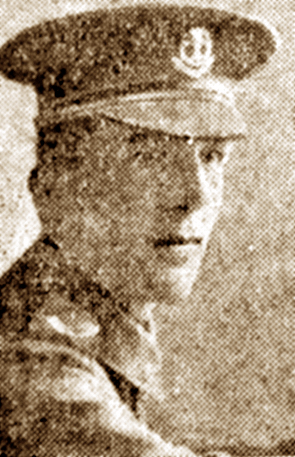
Connects to:
Year of Birth:
Year of Death:
Month of Death:
Day of Death:
Most Relevant Date:
Source:
Source Date:
Private Sidney Charles Worboys
Title (Mr/ Mrs/ Capt/ Rev etc):
First name(s):
Surname only:
Pte Sidney Charles Worboys, 6063, 1/8th Battalion Middlesex Regiment, was killed in action on October 28th, 1916. He was aged 27.
The son of Albert and Emma Worboys, of 176 High Road Road, Luton, he had served at the Front since July 1916. Second Lieut Burns said in a letter to his parents that Sidney was killed instantly by a trench mortar and was buried with military honours in a little cemetery behind the lines.
Prior to enlistment he was employed in his father's straw hat manufacturing business that was being managed by brother Edgar. A third son, Archibald George, was on active service and would lose his life as a sergeant with South Staffordshire Regiment on October 6th, 1918.
Service or Civilian?:
Service Number:
Regiment:
Employer:
War time / or Pre War occupation:
Place of Birth:
Place of Death:
War Memorial Location:
Grave Location:
World War I Address:
Individual Location:
Classifications:
Images:

Connects to:
Year of Birth:
Year of Death:
Month of Death:
Day of Death:
Most Relevant Date:
Source:
Source Date:
Private Sidney George Peters
Title (Mr/ Mrs/ Capt/ Rev etc):
First name(s):
Surname only:
Pte Sidney George Peters, 26088, 9th Battalion The Loyal North Lancashire Regiment, died on September 9th, 1916, from wounds sustained in action on the Somme.
The news about their eldest son reached his father George and mother Alice at their home in Bury Road [now St Thomas's Road], Stopsley, two weeks later through an army chaplain at the No 36 Casualty Clearing Station in France. The wounds Sidney had sustained were so grievous that moving him was an impossibility, they learned.
For several years Sidney was a clerk at the Luton Gas Works, where his father also worked, as a stoker. The 26-year-old was also a church worker, teaching at Sunday school in Stopsley and he was also a bass singer in the choir.
Sidney had previously served in the Bedfordshire Regiment (26065).
Service or Civilian?:
Service Number:
Regiment:
Employer:
War time / or Pre War occupation:
Place of Birth:
Place of Death:
War Memorial Location:
Grave Location:
World War I Address:
Individual Location:
Classifications:
Images:
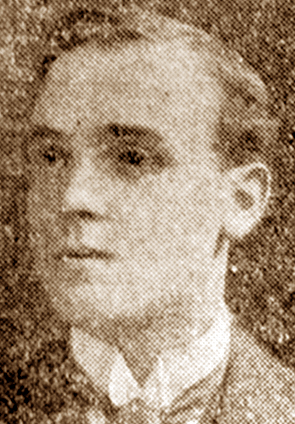
Connects to:
Year of Birth:
Year of Death:
Month of Death:
Day of Death:
Most Relevant Date:
Source:
Source Date:
Private Sidney John Vass
Title (Mr/ Mrs/ Capt/ Rev etc):
First name(s):
Surname only:
Pte Sidney John Vass, 23489, 4th Battalion Bedfordshire Regiment, died in the No. 13 Stationary Hospital in France on November 24th, 1916, 11 days after he was wounded in action on the Somme.
Pte John Radford, his lifelong pal from Luton with whom he enlisted and went to France, had also died in hospital from November 13th wounds sustained on the Somme. He passed away on November 14th, 1916.
Pte Vass, son of Alfred John and Alice Vass, of 121 Castle Street, Luton, was employed as a painter by Mr A. Perry, of Victoria Street, Luton.
He and pal John had been in France only four months when they were wounded within a few hours of each other on November 13th. Pte Vass was wounded by shrapnel in both legs and the head.
Service or Civilian?:
Service Number:
Regiment:
Employer:
War time / or Pre War occupation:
Place of Birth:
Place of Death:
War Memorial Location:
Grave Location:
World War I Address:
Individual Location:
Classifications:
Images:
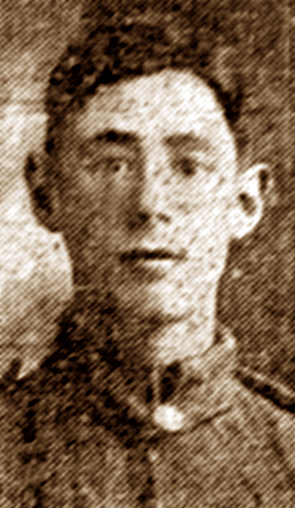
Connects to:
Year of Birth:
Month of Birth:
Day of Birth:
Year of Death:
Month of Death:
Day of Death:
Most Relevant Date:
Source:
Source Date:
Private Sidney Levers Price
Title (Mr/ Mrs/ Capt/ Rev etc):
First name(s):
Surname only:
Sidney Price's story is linked to Luton via finding his name in an Autograph Book that existed in Collingdon Street during WW1.
He draws a beautiful winter scene on one of the earlier pages, and so I simply had to research his story.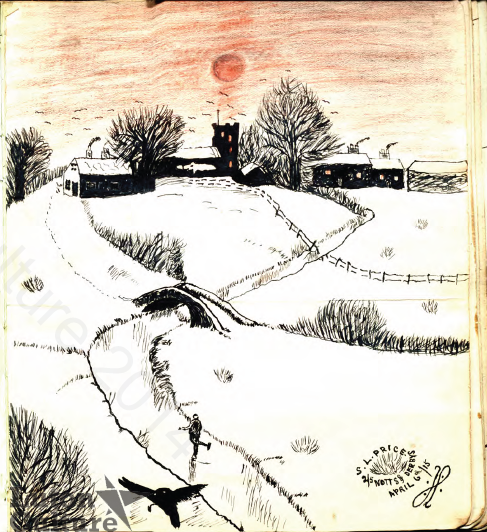
Sadly, despite my wanting him to have survived the war, he didn't make it and was killed in action on the 1st July 1916, a day that will live in infamy as the worst day in British military history. The first day of the Battle of the Somme. He is remembered on the Thiepval Memorial.
He also had a second earlier service number from his Territorial days:- 3155
He was the son of Thomas and Hannah Price. Husband of Annie Evelyn Price,15 Clinton Street,Beeston,Notts.
Service or Civilian?:
Service Number:
Regiment:
Place of Birth:
Place of Death:
War Memorial Location:
Grave Location:
World War I Address:
Individual Location:
Classifications:
Connects to:
Year of Death:
Month of Death:
Day of Death:
Most Relevant Date:
Source:
Source Date:
Private Stanley Walter Fensome
Title (Mr/ Mrs/ Capt/ Rev etc):
First name(s):
Surname only:
Pte Stanley Walter Fensome, 15296, 7th Battalion Bedfordshire Regiment, was killed in action on July 1st, 1916. He was aged 20 and the eldest son of Luton bootmaker Mr Walter Fensome and his wife Elizabeth, of 63-65 Duke Street, High Town.
The sad news for his family was contained in a letter from the Wesleyan Chaplain to the battalion, the Rev G. Jarvis Smith. He said Stanley was killed in action on the Saturday morning and he had found his body soon after the battle was over. Stanley was given a Christian burial and the spot where he fell had been carefully marked.
Pte Fensome was a boot finisher in his father's business and was connected with the Central Mission Sunday School and Brotherhood. He joined up in September 1914 in answer to Lord Kitchener's appeal.
A brother, Pte Harold Fensome was serving with the 2/9th Londons. He was formerly a manager for butchers Messrs Durrant Bros.
Service or Civilian?:
Service Number:
Regiment:
Medals Awarded:
Employer:
War time / or Pre War occupation:
Place of Birth:
Place of Death:
War Memorial Location:
Grave Location:
World War I Address:
Individual Location:
Classifications:
Images:
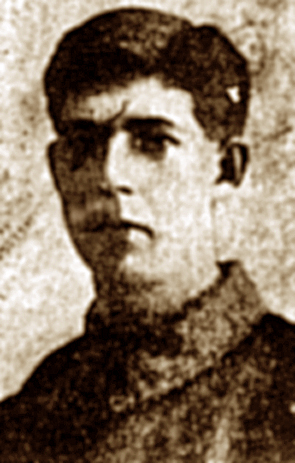
Connects to:
Year of Birth:
Year of Death:
Month of Death:
Day of Death:
Most Relevant Date:
Source:
Source Date:
Private Sydney Jesse Gurney
Title (Mr/ Mrs/ Capt/ Rev etc):
First name(s):
Surname only:
Pte Sydney Jesses Gurney, 17976, 2nd Battalion Bedfordshire Regiment,was killed in action on the Somme on July 11th, 1916. He was aged 26.
Born in Tingrith in 1889, he lived there all his life, working as a farm labourer before enlisting. He is commemorated on a brass plaque in St Nicholas Church, Tingrith.
Parents Jesse and Sarah Gurney later moved to live at 'Lorenzo,' Marsh Road, Leagrave.
Service or Civilian?:
Service Number:
Regiment:
War time / or Pre War occupation:
Place of Birth:
Place of Death:
War Memorial Location:
Grave Location:
World War I Address:
Individual Location:
Classifications:
Images:
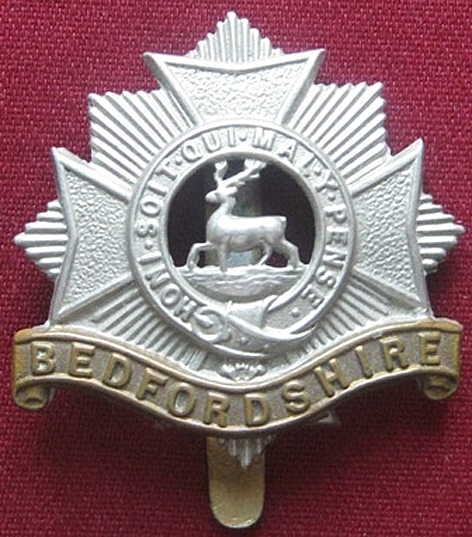
Year of Birth:
Year of Death:
Month of Death:
Day of Death:
Most Relevant Date:
Private Thomas Fleckney
Title (Mr/ Mrs/ Capt/ Rev etc):
First name(s):
Surname only:
Pte Thomas Fleckney, 31848, 6th Battalion York and Lancaster Regiment, died on December 6th, 1916, from wounds sustained on the Somme. He was aged 32 and the father of five children.
A letter from Sister Knight, of the Casualty Clearing Station where he was being treated, said Pte Fleckney had been admitted into hospital early in the morning with severe wounds to both legs and the necessity to amputate the right leg. He died at midday on December 6th.
The Rev Alf K. Heyland, Chaplain, wrote to Mrs Fleckney to say her husband had been buried with all possible military honours.
Pte Fleckney had married Rose Soper at St Saviours Church on January 23rd, 1904. They had five children - Rose Maud, Lily Annie, Ivy, Thomas and Sidney Harold - and lived at 7 Elizabeth Street, Luton.
From leaving school he worked for hat manufacturer Mr W. F. Mullett at Tavistock Street. He joined up in June 1916 and was trained at Sittingbourne, Kent, before going out to France about three months before his death.
He had often played football for Luton Clarence FC and was a member of the Crusaders team which had won the Beds Cup.
Service or Civilian?:
Service Number:
Regiment:
Medals Awarded:
Employer:
War time / or Pre War occupation:
Place of Birth:
Place of Death:
War Memorial Location:
Grave Location:
World War I Address:
Individual Location:
Classifications:
Images:
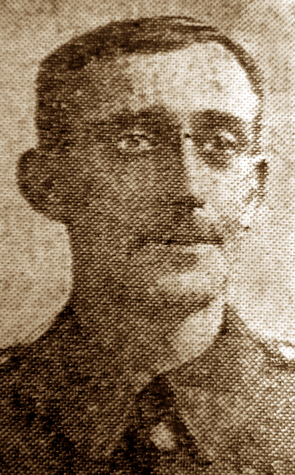
Connects to:
Year of Birth:
Year of Death:
Month of Death:
Day of Death:
Most Relevant Date:
Source:
Source Date:
Private Thomas George James Smith
Title (Mr/ Mrs/ Capt/ Rev etc):
First name(s):
Surname only:
Private Thomas George James Smith, 15123, 2nd Battalion Bedfordshire Regiment, was killed in action on the Somme on July 3rd, 1916. He was aged 23.
Born in 1892, he was the son of William Arthur and Margaret Rebecca Smith, of 62 Cardigan Street, Luton. At the time of the 1911 Census he was a straw hat dispatcher, with an older sister and a younger brother and sister living at home.
Service or Civilian?:
Service Number:
Regiment:
War time / or Pre War occupation:
Place of Birth:
Place of Death:
War Memorial Location:
Grave Location:
World War I Address:
Individual Location:
Classifications:
Connects to:
Year of Birth:
Year of Death:
Month of Death:
Day of Death:
Most Relevant Date:
Private Thomas James Swain
Title (Mr/ Mrs/ Capt/ Rev etc):
First name(s):
Surname only:
Pte Thomas James Swain, 18970, 1st Battalion Grenadier Guards, was killed in action on the Somme on or shortly after September 10th, 1916. He was aged 21.
The son of Luton Corporation employee Arthur Swain and his wife Jane, of 30 Arthur Street, Luton,
he had enlisted in August 1914. Previously he had been employed for 18 months by Messrs Powdrill.
Service or Civilian?:
Service Number:
Regiment:
Employer:
Place of Birth:
Place of Death:
War Memorial Location:
Grave Location:
World War I Address:
Individual Location:
Classifications:
Images:
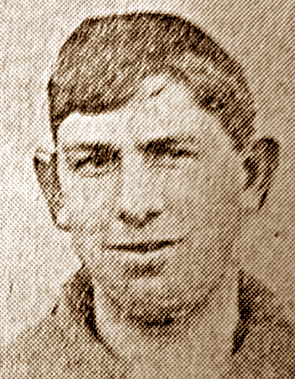
Connects to:
Year of Birth:
Year of Death:
Month of Death:
Day of Death:
Most Relevant Date:
Source:
Source Date:
Private Thomas Richard Buller
Title (Mr/ Mrs/ Capt/ Rev etc):
First name(s):
Surname only:
Pte Thomas Richard Buller, 18754, 6th Battalion Oxfordshire and Buckinghamshire Light Infantry, died on September 5th, 1916, from wounds sustained on the Somme.
He was born in Banbury in 1888 and spent his life there until at least 1912, when he married Olive Annie L. Price there. His death seems to have gone unreported in the Luton Press, but the Commonwealth War Graves Commission website gives his wife's address as Aero Cottage, Oak [Oakley] Road, Leagrave, suggesting a possible link with the Hewlett & Blondeau aircraft factory.
Service or Civilian?:
Service Number:
Regiment:
Medals Awarded:
Place of Birth:
Place of Death:
War Memorial Location:
Grave Location:
World War I Address:
Individual Location:
Classifications:
Year of Birth:
Year of Death:
Month of Death:
Day of Death:
Most Relevant Date:
Source:
Private Thomas Walter Troubridge
Title (Mr/ Mrs/ Capt/ Rev etc):
First name(s):
Surname only:
Pte Thomas Walter Troubridge, 8929, 2nd Battalion King's Own Yorkshire Light Infantry, was killed in action on the opening day of the Battle of the Somme, July 1st, 1916.
He was born in Hertford in 1883, the son of James Thomas and Anna Troubridge. At the time of his death his family were living at 25 Granville Road, Luton.
Service or Civilian?:
Service Number:
Regiment:
Medals Awarded:
Place of Birth:
Place of Death:
War Memorial Location:
Grave Location:
World War I Address:
Individual Location:
Classifications:
Connects to:
Year of Birth:
Year of Death:
Month of Death:
Day of Death:
Most Relevant Date:
Private Walter George Bryan
Title (Mr/ Mrs/ Capt/ Rev etc):
First name(s):
Surname only:
Pte Walter George Bryan, 18238, 6th Battalion Bedfordshire Regiment, was presumed killed in action on the Somme on or after July 15th, 1916. He was aged 30.
Pte Bryan is included on the Luton Roll of Honour but without an address. Military records also say he resided in Luton and enlisted at Bedford, but there were no reports in the Luton Press about him or his death around that time.
He was born in Leamington Spa, Warks, in 1886, the eldest son of James and Priscilla Bryan. In the 1901 Census he is described as a printer's errand boy. By 1911 he may have been working in a hotel in his mother's home town of Malvern, Worcs.
Service or Civilian?:
Service Number:
Regiment:
Medals Awarded:
Place of Birth:
Place of Death:
War Memorial Location:
Grave Location:
World War I Address:
Classifications:
Connects to:
Year of Birth:
Year of Death:
Month of Death:
Day of Death:
Most Relevant Date:
Private Walter Henman
Title (Mr/ Mrs/ Capt/ Rev etc):
First name(s):
Surname only:
Pte Walter Henman, 19546, 8th Battalion Bedfordshire Regiment, was killed in action on the Somme on September 15th, 1916. He was aged 21 and the second son of William and Alice Henman, of Breachwood Green, to die in France in 11 days.
Born on April 24th, 1895, Walter Henman had undergone 11 months of training at Ampthill before going to the Front in January 1916. Prior to enlistment he worked as a farm labourer for Mr W. Ivory at Winch Hill Farm, near Luton.
His older brother, L-Cpl Ellis Henman,1st Battalion Bedfordshire Regiment, was killed in action on the Somme on September 4th, 1916. He was aged 31 and married, and his widow was living at 46 Cobden Street, Luton.
Service or Civilian?:
Service Number:
Regiment:
Medals Awarded:
Employer:
War time / or Pre War occupation:
Place of Birth:
Place of Death:
War Memorial Location:
Grave Location:
World War I Address:
Individual Location:
Classifications:
Images:

Year of Birth:
Month of Birth:
Day of Birth:
Year of Death:
Month of Death:
Day of Death:
Most Relevant Date:
Source:
Source Date:
Private William Bavister
Title (Mr/ Mrs/ Capt/ Rev etc):
First name(s):
Surname only:
Pte William Bavister, 18577, 1st Battalion Bedfordshire Regiment died on August 3rd, 1916, in the London General Hospital from wounds sustained on the Somme. He had been in France for around 12 months.
Born in late 1892, he lived most of his life in Westoning, where in 1911 he was a farm labourer living with parents William and Mary (their youngest son) and older sister Ada. The couple had had 10 children of whom only four were still living in 1911.
William is included on the Luton Roll of Honour with an address at 121 Cambridge Street, Luton. As there appears to be no report of his death in Luton newspapers, the only other clue to his connection with the town was that among the mourners listed at his funeral was his former employer Mr G. Cartwright. From street directories that suggests he worked for dairyman Mr George Cartwright, of 185 Dunstable Road, Luton, perhaps as a milkman.
Pte Bavister's death and subsequent funeral on August 8th were reported in the Beds Times of August 11th, 1916. It was a family rather than military funeral, although his coffin was draped in a Union flag. The service was conducted at St Mary Magdalene Church, Westoning, by the Vicar, the Rev C. J. J. McCormick, and followed by interment in the churchyard. He is commemorated also on the Westoning Roll of Honour.
Service or Civilian?:
Service Number:
Regiment:
Medals Awarded:
Employer:
Place of Birth:
Place of Death:
War Memorial Location:
Grave Location:
World War I Address:
Individual Location:
Classifications:
Images:
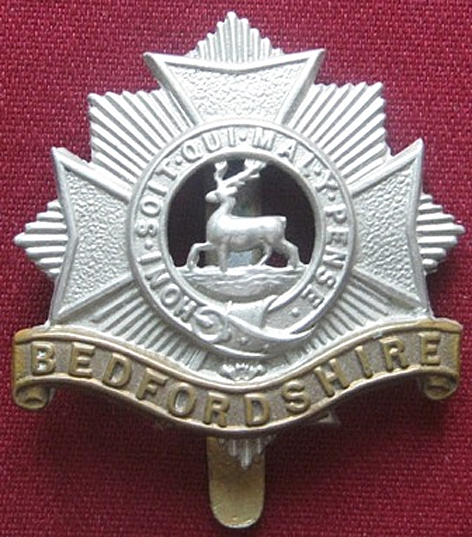
Connects to:
Year of Birth:
Year of Death:
Month of Death:
Day of Death:
Most Relevant Date:
Source:
Source Date:
Private William Brooks
Title (Mr/ Mrs/ Capt/ Rev etc):
First name(s):
Surname only:
Pte William Brooks, 43555, 182nd Company, Machine Gun Corps (Infantry), was killed in action on the Somme on September 24th, 1916. He was aged 35 and left a widow,Annie, and four children - Baden, Edith, Elsie and Madge.
Born in Nottingham, Pte Brooks was the last of eight brothers to enlist. For four years previously he had been employed in the George Kent's iron foundry in a reserved occupation, but he decided to enlist on the day in September 1915 that news came through that one of his younger brothers, Walter James, who had been employed at the Diamond Foundry, had to lose a leg as the result of a second wound sustained while serving with the Sherwood Forsters in France. He said at the time that he would avenge his brother's injury.
He enlisted in the 3/5th Bedfords at Halton Park, from where he transferred to the Machine Gun Corps, training in the Midlands. It was just seven weeks before his death that he went to France.
In a letter to Annie, his company Chaplain wrote: "I have just buried him in the military cemetery here. His grave is registered, and very shortly a little cross with his name will be placed over it. His pals attended the funeral.
"It was a single shot that hit him, and he died in the casualty station one and a half hours afterwards. He was unconscious most of the time and did not know he was dying."
Pte Brooks' widowed mother, Emma, was living in Beech Road, Luton. His widow and family were living at 108 Castle Street, Luton.
William had married Annie Frost in Luton in 1908 after his first wife Clara and mother of his two eldest children had died in 1905 at the age of 23.
Service or Civilian?:
Service Number:
Regiment:
Employer:
War time / or Pre War occupation:
Place of Birth:
Place of Death:
War Memorial Location:
Grave Location:
World War I Address:
Individual Location:
Classifications:
Images:

Connects to:
Year of Birth:
Year of Death:
Month of Death:
Day of Death:
Most Relevant Date:
Source:
Source Date:
Private William Cooper
Title (Mr/ Mrs/ Capt/ Rev etc):
First name(s):
Surname only:
Pte William Cooper, 20266, 8th Battalion Bedfordshire Regiment, died on September 18th, 1916, from wounds sustained in action on the Somme. He was aged 21 and died on an ambulance barge in France.
Born in Ayot St Peters in June 1895, Herts, he was one of ten children born to John and Ann (Annie) Sophia Cooper, who were living at 352 Hitchin Road, Luton, at the time of his death. In the 1911 Census William was a farm labourer living with his parents and three older brothers and two old sisters at 44 Round Green, Luton.
Service or Civilian?:
Service Number:
Regiment:
War time / or Pre War occupation:
Place of Birth:
Place of Death:
War Memorial Location:
Grave Location:
World War I Address:
Individual Location:
Classifications:
Connects to:
Year of Birth:
Month of Birth:
Day of Birth:
Year of Death:
Month of Death:
Day of Death:
Most Relevant Date:
Private William Dovaston
Title (Mr/ Mrs/ Capt/ Rev etc):
First name(s):
Surname only:
Pte William Dovaston, 3848, 9th Battalion Middlesex Regiment, was killed in action on the Somme on September 11th, 1916. He was aged 19.
Born at Islington, London, he was the son of Robert William and Caroline Dovaston, of 18 Selbourne Road, Luton. He enlisted in the Bedfordshire Regiment at the age of 17 and had served in Gibraltar and Egypt before being transferred to the Middlesex Regiment and sent to France.
William was formerly employed by Commercial Cars Ltd and was a member of All Saints Church choir. He played football for the church club.
Both of William's parents had the unusual surname of Dovaston before their marriage in Holborn in 1887. Robert hailed from Manchester and Caroline from Dudley, near Birmingham.
Service or Civilian?:
Service Number:
Regiment:
Employer:
Place of Birth:
Place of Death:
War Memorial Location:
Grave Location:
World War I Address:
Individual Location:
Classifications:
Images:
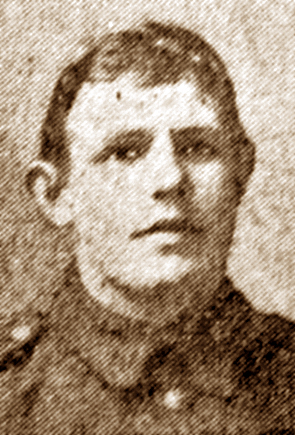
Year of Death:
Month of Death:
Day of Death:
Most Relevant Date:
Source:
Source Date:
Private William George Peck
Title (Mr/ Mrs/ Capt/ Rev etc):
First name(s):
Surname only:
Pte William George Peck, 11369, 1st Sherwood Foresters (Notts and Derby Regiment), was killed in action on the Somme on July 7th, 1916. He was aged 28, and a son of Walter and Eliza Peck, of 66 Oak Road, Luton.
He enlisted in the Foresters and was stationed in India for three years prior to the outbreak of war. He was sent back to England and then went to France with the Ghurkas. In November 1914 he was invalided home suffering from frostbite, returning to France in April 1915.
He was posted missing on July 7th, 1916, but it was not until October 1917 that his parents were notified that there had been no further information about him, and it was concluded he was dead.
Service or Civilian?:
Service Number:
Regiment:
Place of Birth:
Place of Death:
War Memorial Location:
Grave Location:
World War I Address:
Individual Location:
Classifications:
Images:
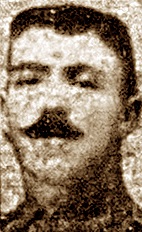
Connects to:
Year of Birth:
Year of Death:
Month of Death:
Day of Death:
Most Relevant Date:
Source:
Source Date:
Private William Impey
Title (Mr/ Mrs/ Capt/ Rev etc):
First name(s):
Surname only:
Pte William Impey, 27561, 2nd Battalion Bedfordshire Regiment, was killed in action on the Somme on October 12th, 1916.
He was the son of Alfred and the late Sarah Ann Impey (died 1901) and stepson of Elizabeth Ann (Garrett), whom Alfred had married in 1909.
Before official War Office notification had arrived, Second Lieut Robert Oakley said in a letter to Mr Impey: "On October 12th, when we were participating in an attack, Pte Impey was among a number of men detailed to act as water carriers. In the course of his duties he was walking down a communication trench when they were heavily shelled. Under the circumstances I am afraid it is only natural to fear the worst, as he was well behind our lines and if he had been only wounded he would have been picked up by our stretcher-bearers."
Before joining the Colours in March 1915, William Impey had been employed by hat manufacturers Plummer & Co, of 32 Waller Street, Luton. He had also played in junior football for a number of years and was popularly known as Jock.
Service or Civilian?:
Service Number:
Regiment:
Employer:
War time / or Pre War occupation:
Place of Birth:
Place of Death:
War Memorial Location:
Grave Location:
World War I Address:
Individual Location:
Classifications:
Images:
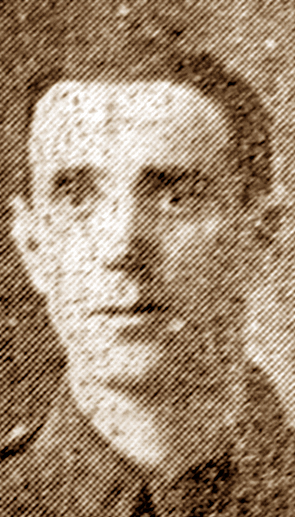
Connects to:
Year of Birth:
Year of Death:
Month of Death:
Day of Death:
Most Relevant Date:
Source:
Source Date:
Private William John Clibbon
Title (Mr/ Mrs/ Capt/ Rev etc):
First name(s):
Surname only:
Pte William John Clibbon, 12521, 6th Battalion Bedfordshire Regiment, was killed in action on the Somme on July 10th, 1916. An older brother, Sgt Joseph Clibbon, 5832, 2nd Bedfords, had died of battlefield wounds on February 20th, 1915 (Merville Communal Cemetery).
Born in Luton in 1887, Pte Clibbon, a foundry labourer before enlisting, was a son of James and Eliza Clibbon, who in 1911 were living in Adelaide Terrace, Luton. Both brothers are commemorated on the Luton Roll of Honour.
Service or Civilian?:
Service Number:
Regiment:
Medals Awarded:
War time / or Pre War occupation:
Place of Birth:
Place of Death:
War Memorial Location:
Grave Location:
World War I Address:
Individual Location:
Images:
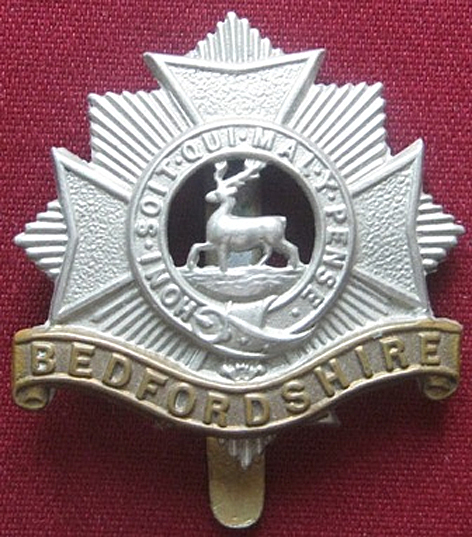
Year of Birth:
Year of Death:
Month of Death:
Day of Death:
Most Relevant Date:
Rifleman Alfred John Stanley Bruton
Title (Mr/ Mrs/ Capt/ Rev etc):
First name(s):
Surname only:
Rifleman Alfred John Stanley Bruton, C/1669, 17th Battalion King's Royal Rifle Corps, was killed in action on the Somme on October 21st, 1916. He was aged 24.
He was the second of the two sons of Alfred John and Sarah Jane Bruton, of East Hyde Mill Cottage, New Mill End, to lose his life on active service. Younger brother Rifleman Augustus Tennyson Bruton died in the Lord Derby War Hospital, Warrington, Lancs, on April 10th, 1916, from wounds sustained accidentally in a bomb-throwing accident.
Stanley Bruton had joined the colours in December 1915, prior to which he was employed by Mr L. Weekes, of Harpenden. He had been a member of the East Hyde church choir and its Sunday School.
A letter Cpl D. R. Wilson to Mrs Bruton said: "Stanley was killed in action. The Germans got into our sap, and the Lewis gun was out of action. He ran round with two more men and fought the Boches with his sword. He killed one man, and then was killed himself. He was very brave, and was one of the few that saved the trench that day. Stanley was always a very good man with the machine gun."
A memorial service was held at East Hyde, where Stanley's brother was buried in the churchyard. Stanley is commemorated on the Thiepval Memorial on the Somme and on the gravestone of his parents and brother at East Hyde.
Service or Civilian?:
Service Number:
Regiment:
Employer:
War time / or Pre War occupation:
Place of Birth:
Place of Death:
War Memorial Location:
Grave Location:
World War I Address:
Individual Location:
Classifications:
Images:
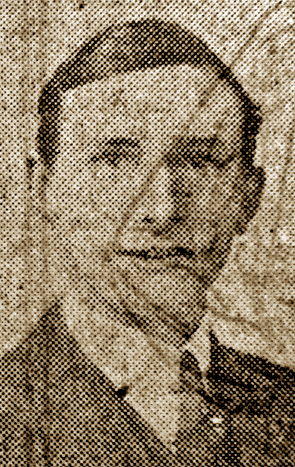
Year of Birth:
Month of Birth:
Day of Birth:
Year of Death:
Month of Death:
Day of Death:
Most Relevant Date:
Source:
Source Date:
Rifleman Arthur David Sharp
Title (Mr/ Mrs/ Capt/ Rev etc):
First name(s):
Surname only:
Rifleman Arthur David Sharp, C/6265, 18th Battalion King's Royal Rifles, was killed in action on the Somme on September 15th, 1916. He was single and aged 28.
He had enlisted at St Pancras in London in July 1915 and went out to France the following May.
His father David had died in 1911 and his mother Sarah in 1906. At the time of the 1911 Census he was living at 29 Shirley Road, Luton, with two brothers and four sisters, all then unmarried.
The family had previously lived in Foundry Lane [South Road] and Arthur had worked for 11 years at the Brown and Green foundry in Windsor Street. His military record describes him as a sheet metal worker.
Arthur attended Wellington Street Baptist Church, where his name was inscribed on the church roll of honour. It is also included on the Luton Roll of Honour.
Service or Civilian?:
Service Number:
Regiment:
Medals Awarded:
Employer:
War time / or Pre War occupation:
Place of Birth:
Place of Death:
War Memorial Location:
Grave Location:
World War I Address:
Individual Location:
Classifications:
Images:
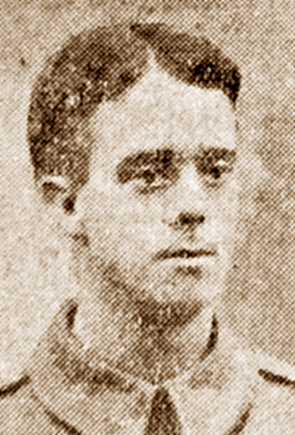
Connects to:
Year of Birth:
Year of Death:
Month of Death:
Day of Death:
Most Relevant Date:
Source:
Source Date:
Rifleman Arthur James Gaunt
Title (Mr/ Mrs/ Capt/ Rev etc):
First name(s):
Surname only:
Rifleman Arthur James Gaunt, 4173, 1/8th Battalion London Regiment (Post Office Rifles), was killed in action on the Somme on September 15th, 1916.
Born in Turvey, Beds, the 20-year-old was the son of Edward Green Gaunt and the late Lucy (nee Burr), who died in November 1915. His father lived at 12 Hartley Road, Luton, at the time of Arthur's death.
In the 1911 Census Arthur is described as a telegraph boy. He became an assistant postman in August 1912, and had transferred to Harrow as a postman before he enlisted.
Service or Civilian?:
Service Number:
Regiment:
Employer:
War time / or Pre War occupation:
Place of Birth:
Place of Death:
War Memorial Location:
Grave Location:
World War I Address:
Individual Location:
Classifications:
Images:

Connects to:
Year of Birth:
Month of Birth:
Day of Birth:
Year of Death:
Month of Death:
Day of Death:
Most Relevant Date:
Source:
Source Date:
Rifleman Arthur Thomas Mahon
Title (Mr/ Mrs/ Capt/ Rev etc):
First name(s):
Surname only:
Rifleman Arthur Thomas Mahon, 301057, London Regiment (London Rifle Brigade), was killed in action on July 1st, 1916, at the age of 19. Born in Aberdeen, he was the son of the Rev Edward Mahon, Pastor of King Street Congregational Church, Luton, and Mrs Agnes Catherine Mahon, of 48 Napier Road, Luton.
The Pastor told a meeting of church deacons on July 18th that letters from comrades suggested that there was little hope that his son, who officially was reported missing, had survived. One letter intimated that Rifleman Mahon was engaged in laying a telegraph wire across 'No Man's Land' at night-time when he was wounded. The writer did not extend any hopes of his being alive.
It had been hoped that Arthur had been taken as a prisoner of war, but his father's inquiries at the War Office had failed to sustain that hope.
Rifleman Mahon had almost completed his course of training as an electrical engineer and he was attached to the Signals Section. He joined the London Rifle Brigade in 1915 at the age of 18½ and was sent to France in the August.
Service or Civilian?:
Service Number:
Regiment:
Medals Awarded:
Place of Birth:
Place of Death:
War Memorial Location:
Grave Location:
World War I Address:
Individual Location:
Classifications:
Images:
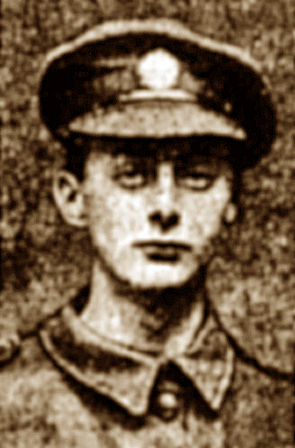
Connects to:
Year of Death:
Month of Death:
Day of Death:
Most Relevant Date:
Source:
Source Date:
Rifleman Frederick Horace Rookwood
Title (Mr/ Mrs/ Capt/ Rev etc):
First name(s):
Surname only:
Rifleman Frederick Horace Rookwood, 3253, 17th Battalion London Regiment (Poplar and Stepney Rifles), was killed in action on the Somme on October 1st, 1916. He was aged 27.
Widow Kate and parents James and Clara, of 14 Ashton Street [later Gillam Street], Luton, heard the news first from Frederick's brother-in-law, who said he had seen Frederick's grave, "which is very nicely laid out". [The grave was probably lost as Frederick is recorded on the Thiepval Memorial for soldiers with no known grave].
Before enlistment, Rifleman Rookwood was employed as a wire-shape maker at Mr W. R. Jeakings' factory in Collingdon Street, Luton. He joined the Army soon after war broke out and went to France in March 1915,where he was wounded by being smashed on his face by a periscope.
He had been well known in junior football circles in Luton at one time, having played for Ivy United and Cliftondale.
Frederick married Kate Simmons in 1911 and they had one child, named Horace, who died shortly after being born in 1912.
Service or Civilian?:
Service Number:
Regiment:
Medals Awarded:
Employer:
War time / or Pre War occupation:
Place of Birth:
Place of Death:
War Memorial Location:
Grave Location:
World War I Address:
Individual Location:
Classifications:
Images:
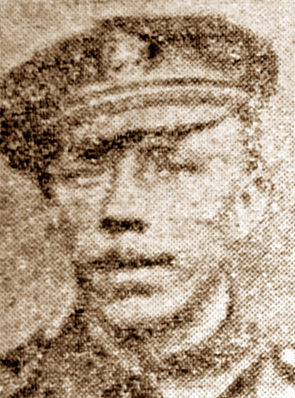
Connects to:
Year of Birth:
Year of Death:
Month of Death:
Day of Death:
Most Relevant Date:
Source:
Source Date:
Rifleman Henry Oliver Philip Foster
Title (Mr/ Mrs/ Capt/ Rev etc):
First name(s):
Surname only:
Rifleman Henry Oliver Philip Foster, 471290, 1/12th Battalion London Regiment (The Rangers), was killed in action on the Somme on July 1st, 1916. He was aged 20.
He was the son of Thomas Arthur and Annie Caroline Foster, who were living at 108 Bury Park Road, Luton, and later 12 Cromwell Road. In the 1911 Census Henry is described as a postcard hawker, then aged about 14.
Service or Civilian?:
Service Number:
Regiment:
War time / or Pre War occupation:
Place of Birth:
Place of Death:
War Memorial Location:
Grave Location:
World War I Address:
Individual Location:
Classifications:
Connects to:
Year of Birth:
Year of Death:
Month of Death:
Day of Death:
Most Relevant Date:
Rifleman William Ernest Ratcliffe
Title (Mr/ Mrs/ Capt/ Rev etc):
First name(s):
Surname only:
Rifleman William Ernest Ratcliffe, S/11035, 3rd Battalion Rifle Brigade, died on the Somme on August 18th, 1916.
He is recorded as having been born in Luton around 1895 and is on the Luton Roll of Honour, but without an address. It is likely that his family had left Luton before the time of his death. The 1911 Census suggests that 16-year-old William was a boarder in a boys' home in London.
The Luton News carried a picture of the late Rifleman Ratcliffe, of Luton, in its October 5th, 1916, edition, but without further details.
Service or Civilian?:
Service Number:
Regiment:
Medals Awarded:
Place of Birth:
Place of Death:
War Memorial Location:
Grave Location:
World War I Address:
Classifications:
Images:
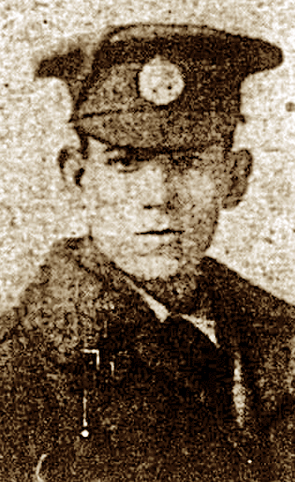
Connects to:
Year of Death:
Month of Death:
Day of Death:
Most Relevant Date:
Source:
Source Date:
Sapper Bert Tomlinson
Title (Mr/ Mrs/ Capt/ Rev etc):
First name(s):
Surname only:
Sapper Bert Tomlinson, 1749, East Anglian Royal Engineers, was killed in action on the Somme on November 14th, 1916. He was aged 32 and had enlisted in January 1915.
Sapper Tomlinson, a painter and house decorator employed by Mr Smith, of West Hill Road, was secretary of the Luton branch of the House and Shop Decorators' Union.
He lived at 31 Beech Road, Luton, and left a widow May (nee Bowles) whom he married in 1904. They had four young children, the youngest of whom was born a few weeks after he went to the Front and the father had seen only once while on leave 11 months before his death.
Service or Civilian?:
Service Number:
Regiment:
Employer:
War time / or Pre War occupation:
Place of Birth:
Place of Death:
War Memorial Location:
Grave Location:
World War I Address:
Individual Location:
Classifications:
Images:
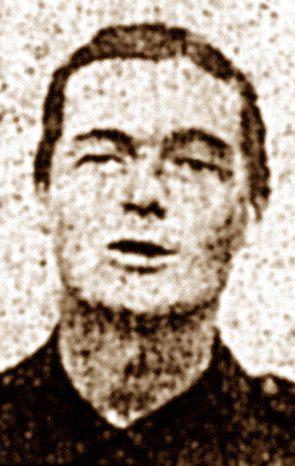
Connects to:
Year of Birth:
Year of Death:
Month of Death:
Day of Death:
Most Relevant Date:
Source:
Source Date:
Sapper Clarence Sidney Ellerd How
Title (Mr/ Mrs/ Capt/ Rev etc):
First name(s):
Surname only:
Sapper Clarence Sidney Ellerd How, 146239, 82nd Field Company Royal Engineers, was killed in action on the Somme on November 18th, 1916. He was aged 24 and his home was at 37 Stockwood Crescent, Luton.
The youngest son of the late Mr William Albert How, he went to France in August 1915 and was slightly wounded on October 26th but continued to fight in the trenches.
Before the war Clarence and elder brother Richard Victor were master builders in Luton. On the outbreak of hostilities they went to France to build huts under contract to the Government, but returned to England in February 1916 to enlist. On the day Clarence was killed, his brother was wounded.
Service or Civilian?:
Service Number:
Regiment:
Employer:
War time / or Pre War occupation:
Place of Birth:
Place of Death:
War Memorial Location:
Grave Location:
World War I Address:
Individual Location:
Classifications:
Images:
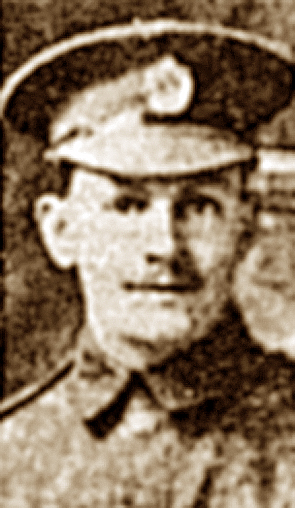
Connects to:
Year of Birth:
Year of Death:
Month of Death:
Day of Death:
Most Relevant Date:
Source:
Source Date:
Sergeant Arthur Huckle
Title (Mr/ Mrs/ Capt/ Rev etc):
First name(s):
Surname only:
Sgt Arthur Huckle, 18233, 8th Battalion Bedfordshire Regiment, was killed in action on the Somme on September 15th, 1916.
Born in Clophill in 1882, he married Ellen Richardson in 1901. At the time of the 1911 Census Arthur was a cowman on a farm at Haynes Church End, Beds, and the couple had four children - Emily, aged 8, George, 6, John, 4, and William, 1.
At the time of Arthur's death the family were living at Limbury and there were six children. He was described as a popular man in the Limbury and Biscot district and had been in the Beds Territorials before the war.
In a letter to widow Ellen, Lieut Noel Nixon, of the Bedfordshire Regiment, said that after his platoon commander had been wounded her husband had led his men against the enemy under "an impenetrable wall of bullets until he fell".
Service or Civilian?:
Service Number:
Regiment:
War time / or Pre War occupation:
Place of Birth:
Place of Death:
War Memorial Location:
Grave Location:
World War I Address:
Classifications:
Images:
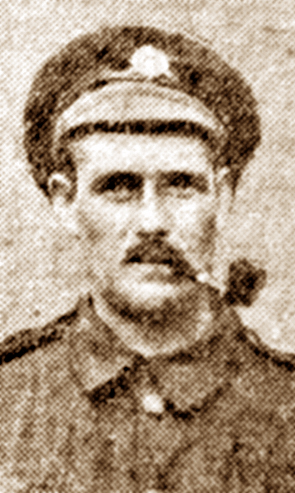
Connects to:
Year of Birth:
Year of Death:
Month of Death:
Day of Death:
Most Relevant Date:
Sergeant Percy Edward Rickard
Title (Mr/ Mrs/ Capt/ Rev etc):
First name(s):
Surname only:
Prominent Luton athlete Sgt Percy Edward Rickard, 3/8141, 7th Bedfords, was killed instantly while in action on the first day of the Battle of the Somme - July 1st, 1916.
Well before official confirmation was received, parents William and Lucy Rickard, of 45 Crawley Road, Luton, had had letters from comrades who saw him fall.
A native of Luton and one of nine children, Sgt Rickard was educated at Dunstable Road School. He was aged 22 and before joining the Colours was manager of his father's straw hat manufacturing business at 6 Victoria Street. He enlisted with the 7th Bedfords in October 1914 and had been promoted to sergeant before going out to the front a year before his death.
In France his soldierly qualities won him great praise and he had been tipped for accelerated promotion. But it was as an athlete both at home and with his battalion that he particularly remembered. He was a member of Luton United Harriers and, along with Fred and Sidney, two of his five brothers, had won a big and valuable collection of cups and medals.
While his brothers were sprinters, Percy specialised in distance running. His achievements included winning the Luton Mayor's Cup in 1913, and heading a field of 2,000 runners in a five-mile cross-country race for the championship of the 54th Infantry Brigade on Salisbury Plain in May 1915.
Tributes to Percy came from comrades, officers at the front and from Mr J. T. Needham, headmaster of Dunstable Road School. Mr Needham described him as "one of our boys of outstanding merit," and said the whole school had stood in silence with heads bowed in his memory.
Major G. P. Mills, 7th Bedfords, wrote: "He was killed while gallantly leading his platoon, and we buried him on the battlefield. His loss is felt by all his comrades."
An autograph book kept by Percy's brother Arthur, is available to read in its entirity via this website. It contains a tracing of a medal awarded to Percy for winning a race across Salisbury plain.
Service or Civilian?:
Service Number:
Regiment:
Medals Awarded:
Employer:
War time / or Pre War occupation:
Place of Birth:
Place of Death:
War Memorial Location:
Grave Location:
World War I Address:
Individual Location:
Classifications:
Images:


Connects to:
Year of Birth:
Year of Death:
Month of Death:
Day of Death:
Most Relevant Date:
Source:
Source Date:
Sergeant Peter Pieraccini
Title (Mr/ Mrs/ Capt/ Rev etc):
First name(s):
Surname only:
Sgt Peter Pieraccini, 19744, 2nd Battalion Bedfordshire Regiment, was killed in action on the Somme on October 12th, 1916.
Born in Luton, he was the son of James and Elizabeth Pieraccini, of 19 May Street, Luton. He married Ethel May Dyer in 1906 and lived at 4 Manchester Place, Dunstable, with their six children.
A friend who was with him before they went into action wrote to his widow that Peter had been reported missing but was then found by another battalion to have been killed.
Like his father, Peter Pieraccini was a plasterer by trade. He enlisted in the Beds Regiment on March 1st, 1915, and was trained at Ampthill Camp. He got his first stripe after being in the Army a fortnight, and was afterwards promoted to the rank of sergeant.
He was drafted out to France in July 1915 and had been wounded once before his death. He had been a member of Dunstable Football Club.
Service or Civilian?:
Service Number:
Regiment:
Medals Awarded:
Employer:
War time / or Pre War occupation:
Place of Birth:
Place of Death:
War Memorial Location:
Grave Location:
World War I Address:
Individual Location:
Classifications:
Images:

Connects to:
Year of Death:
Month of Death:
Day of Death:
Most Relevant Date:
Source:
Source Date:
Sergeant William Ellingham
Title (Mr/ Mrs/ Capt/ Rev etc):
First name(s):
Surname only:
Sgt William Ellingham, one of the first Lutonians to be awarded the Distinguished Conduct Medal, was killed in action on the Somme on August 18th, 1916. He was a son of Arthur and Annie Ellingham, of 8 Jubilee Street, Luton, and served in the 1st Northumberland Fusiliers.
In November 1915 Sgt Ellingham, then a lance corporal, came to England on leave and married Mabel Louisa Ward from Castleford in the Yorkshire town on November 5th. He had been stationed at Pontefract, Yorks, in 1911 and it was while there he probably met Mabel.
Sgt Ellingham had left the Colours only two months before war broke out, and was immediately recalled to his regiment at Newcastle. He went over to France early in August 1914 and had been in the fighting line ever since without a scratch, despite terrible ordeals during the Mons retreat when he was missing for some time. He had completed his term of Army service some months before his death and had then been expecting to come home to assist in drilling recruits.
William Ellingham was still a private when he learned in June 1915 that he had gained his DCM for conspicuous devotion to duty as a linesman, notably near Ypres, between February 23rd and March 4th, 1915, and had set a fine example to other signallers.
The medal was pinned on his chest at a public meeting in Castleford attended by prominent citizens of the town and with the band of the 1st York and Lancaster Regiment playing. Major Watson pinned on the medal and presented him with a purse containing £20 and his bride-to-be with a bouquet of flowers.
He was also congratulated on behalf of the North Eastern Railway, with which he had been closely connected for a time. He had made his home in Castleford.
Service or Civilian?:
Service Number:
Regiment:
Medals Awarded:
Place of Birth:
Place of Death:
War Memorial Location:
Grave Location:
World War I Address:
Individual Location:
Classifications:
Images:

Connects to:
Year of Birth:
Year of Death:
Month of Death:
Day of Death:
Most Relevant Date:
Source:
Source Date:
Sergeant William Ginger
Title (Mr/ Mrs/ Capt/ Rev etc):
First name(s):
Surname only:
Sgt William Ginger, 18144, 2nd Battalion Bedfordshire Regiment, was killed in action on the Somme on October 12th, 1916.
The father of three sons and three daughters, he had married Mary Jane Goodge in 1898 and was living in Summer Street, Slip End. The Flamstead-born soldier was a labourer working for builders T. & E. Neville, of Castle Street, Luton, before he joined up on December 7th, 1914.
Service or Civilian?:
Service Number:
Regiment:
Employer:
War time / or Pre War occupation:
Place of Birth:
Place of Death:
War Memorial Location:
Grave Location:
World War I Address:
Individual Location:
Classifications:
Images:
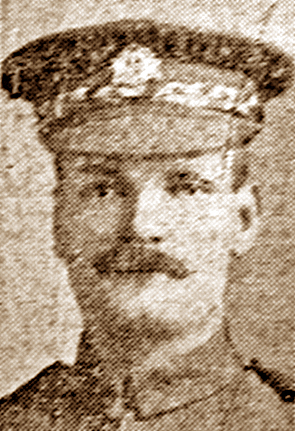
Year of Birth:
Year of Death:
Month of Death:
Day of Death:
Most Relevant Date:
Source:
Source Date:
Sergeant William Henry Bunyan
Title (Mr/ Mrs/ Capt/ Rev etc):
First name(s):
Surname only:
Sgt William Henry Bunyan, 19010, 6th Battalion Bedfordshire Regiment, was killed in action on the Somme on August 9th, 1916. He was a Lutonian who had previously served with the Bedfords and had been living at Ash Vale, Surrey, before rejoining his regiment at the outbreak of war.
Sgt Bunyan had lived at 39 Cobden Street for many years and had a sister-in-law living in Collingdon Street. He was born in Luton in 1873 to Mary Ann and the late William Bunyan (died 1876).
It was probably while he was at Whittington Barracks, near Lichfield, that he met and married Whittington Village girl Gertrude Maria Nourse in 1900. They had four children, three of whom were surviving at the time of the 1911 Census, when the family, including sons Cyril William, Percy John and Ralph Richard were living in married quarters at Maida Barracks, Aldershot.
Sgt Bunyan had been serving in France for about a year before his death. His platoon commander wrote to Mrs Bunyan at Hanmer Villa, College Road, Ash Vale, to say her husband gave his life leading on his men, and the work performed by them had since led to an appreciable gain against the enemy.
Despite being born in Luton, Sgt Bunyan is not included on the Luton Roll of Honour.
Service or Civilian?:
Service Number:
Regiment:
Place of Birth:
Place of Death:
War Memorial Location:
Grave Location:
World War I Address:
Individual Location:
Classifications:
Images:
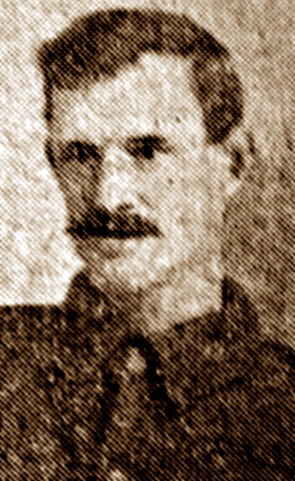
Year of Birth:
Year of Death:
Month of Death:
Day of Death:
Most Relevant Date:
Source:
Source Date:
Sergeant William Hyde
Title (Mr/ Mrs/ Capt/ Rev etc):
First name(s):
Surname only:
Sgt William Hyde, 13379, 7th Battalion Bedfordshire Regiment, died in the 21st Casualty Clearing Station in France on July 2nd, 1916, from wounds sustained the previous day at the start of the Battle of the Somme.
Born and living in Toddington, he was the son of George and Mary Ann Hyde. He left a widow, Alice, and one child, Alice Elizabeth, who were later living at 45 Collingdon Street, Luton. He is included on the Luton Roll of Honour.
Service or Civilian?:
Service Number:
Regiment:
Medals Awarded:
Place of Birth:
Place of Death:
War Memorial Location:
Grave Location:
World War I Address:
Individual Location:
Classifications:
Images:
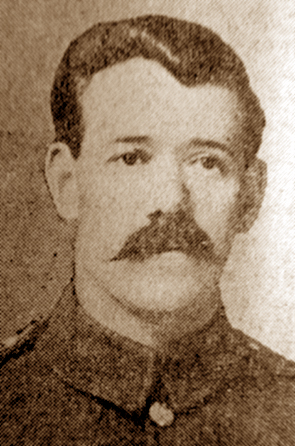
Connects to:
Year of Death:
Month of Death:
Day of Death:
Most Relevant Date:
Source:
Source Date:
Somme: Battle for Trones Wood
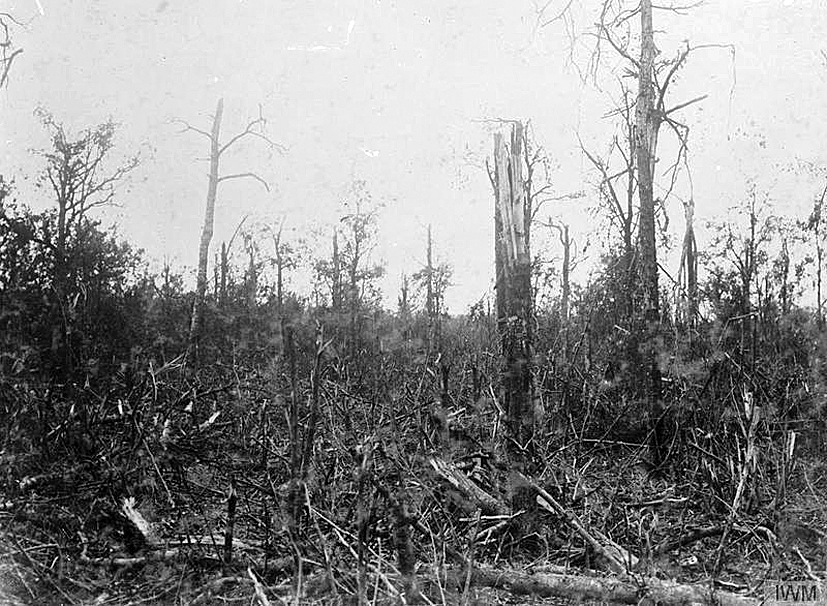
Trones Wood - © IWM (Q 861)
Only occasionally have we heard anything of the county regiment's share in the great advance. From letters that have appeared it seems that out gallant fighting men had a comparatively easy task in the first stages, and casualties were quite small.
This was only one of the fortunes of war. It could not continue, and now it is well that we should be prepared for a sacrifice which will probably equal that of any other regiment. A letter had been received by a prominent Luton resident in which the writer places the casualties in his section at 50 per cent.
It is to be hoped this is an exaggeration, and it is a certainty that many of those who fell will soon be in a position to fight again. Many, alas, were stricken to rise no more. But the fact remains that they made history, and the value of their achievement is far in excess of any sacrifice, as sacrifices go in this war.
The following letter has been received by the Adjutant at the Bedford Depot, and it gives a graphic account of the capture of Trones Wood by the undaunted heroes of the county regiment.
Just a line to tell you that the battalion is now resting after attacking Trones Wood on the 11th at 5 pm. On the 10th I received orders from the Brigade that the battalions were to attack and entrench the wood on the eastern side facing Guillemont at 1.30 am on the morning of the 11th July. The wood is about 1,200 yards long from north to south and 400 broad at the southern end.
Two battalions had each attacked it previously; both got badly handled and failed to establish a footing, being driven out each time. The wood itself was very strongly held, entrenches and full of dug-outs, and had also tunnels under it, into which Bosches got when of our troops were in there, so that they could heavily shell in from three sides. The undergrowth in the wood was so thick that it was impossible to see more than four yards in front of you, making it practically impossible for companies to keep in touch.
The battalion advanced at 3.10 am, after half-an-hour's intense bombardment. Some of the dug-outs were touched, and also it would have taken two battalions to take it, as prisoners stated it was held by one battalion of Bosches.
At 3.30 am our men started getting into the wood, and by 3.45 a whole battalion got in, but we had many casualties from machine gun and shell fire, when about 150 yards from the south-west edge of the wood.
The way the men advanced through it was a sight worth seeing. They were simply magnificent. Suffering so many casualties on entering rather disorganised the companies, with the result that some got isolated and were not able to reach their proper objective, owing to the presence of two strong points inside the wood which held us up.
Heavy hand-to-hand fighting took place inside the wood, in which our men encountered a great number of Bosches with bombs and bayonet. The result of this was that we established ourselves in the southern part of the wood, dug in and consolidated, and held that part until we were relieved in the early morning of the 13th at 1 am.
Half of the 'D' Company got to the northern part of this and dug in until they were surrounded and had to withdraw. I eventually got them back to join the remainder in the southern end of the wood. Capt Beal handled them magnificently.
During the whole of this time the southern part of the wood was being shelled unmercifully from three sides, but at 7 pm they were well dug in.
'A' and 'B' Companies were holding the south-east side, and had dug a trench about 180 yards long to fire inside the wood as well as towards Guillemont. 'C' and 'D' Companies. under Captains Wynne and Beal, held out against three counter-attacks until relieved in the early morning of the 13th. It was a magnificent performance and the men were wonderful.
I was told beforehand that until we could get Trones Wood the advance on the left could not proceed. We didn't take the wood, but got part of it, enabling the Royal West Kents to attack from here the next day, also another regiment as well after our advice that it was more than one battalion could do.
I am glad to say the higher powers realised the magnitude of the task, and I was congratulated by all the Generals on our magnificent defence.
General Shea, commanding our Division, said, in addressing the Brigade, that the attack and defence of Trones Wood by the Bedfordshire Regiment would be written up in the historic events of the war. It certainly was a wonderful performance.
Wynne and Beal were simply splendid, and also Walker, who was left in command of 'A' and 'B' Companies on the south-eastern edge of the wood and got them safely out when surrounded at close quarters on three sides. In all, the officers did magnificently.
All the men who have been through the whole war said it was the hottest 48 hours they have experienced. We only took 32 prisoners, and in those 32 seven different regiments were represented.
Before starting off we were told that the South Africans had a post at the northern end of the wood, blocking a trench running down from Longueval, but they hadn't. Also it was not believed the wood was strongly held.
We captured one machine gun and found several big guns disabled in the wood. The artillery had done their work so thoroughly that the Brigade did not suffer heavily. Everyone is going strong, and the battalion are great, a real pleasure to be with such a happy lot."
We understand that the machine gun which was captured is being sent to the Depot, and it is hoped it will soon be on view in the county town.
Lieut-Col Geoffrey Glyn, who has been at the front since the early days of the war and who has been through some of the heaviest fighting, says in a letter to a friend: "I was talking to the General with whom the Bedfords serve, and I am sure it would please everyone to know how well the battalion has done. In this battle, at the first attack they were given an objective and, in spite of somewhat heavy casualties, they gained their objective, which speaks very highly for the NCOs and men, and is a credit to the battalion and Bedfordshire. Much is going on, and going well.
[Beds & Herts Saturday Telegraph: July 22nd, 1916.]
- Deejaya's blog
- Log in or register to post comments
Somme: The taking of Montauban
In the course of a graphic description of incidents of the great battle going on in France, Mr Phillip Gibbs, writing on Sunday, referred to the capture of Montauban.
The attack on Montauban was one of our best successes yesterday, he wrote. The men were mainly Lancashire troops, supported by men of the Home Counties, including those of Surrey, Kent, Essex, Bedford and Norfolk. They advanced in splendid order, straight for their objective, swept over the German trenches, and captured large numbers of prisoners without great loss to themselves.
Their commanding officers were anxious about a German strong point called the Briqueterie, or brickfield, which had been full of machine guns and minenwerfers [mortars]. The original intention was to pass this without a direct attempt to take it, but the position was found to be utterly destroyed by our bombardment. A party of men were detached to seize it, which they did with comparative ease.
The remainder of the men in those battalions went on to the ruined village of Montauban and, in spite of spasmodic machine gun fire from some of the broken houses, carried it in one great flood of invasion. Large numbers of Germans were taking cover in dug-outs and cellars, but as soon as our men entered they came up into the open and surrendered. Many of them were so cowed by the great bombardment they had suffered, and by the waves of men that swept into their stronghold, that they fell up[on their knees and begged most piteously for mercy, which was granted to them.
The loss of Montauban was serious to the enemy, and they prepared a counter-attack which was launched this morning at three o'clock, at a strength of two regiments. Our men were expecting this and had organised their defence. The Germans came on in close order, very bravely, rank after rank advancing over the dead and wounded bodied of their comrades who were caught by our machine gun fire and rifle fire and mown down.
Only a few men were able to enter our trenches, and these died. Montauban remains in our hands, and so far the enemy has not attempted another attack.
[The Luton News: Thursday, July 6th, 1916]
- Deejaya's blog
- Log in or register to post comments
The Battle of the Somme
Event Start and End Date:
The Battle of the Somme (French: Bataille de la Somme, German: Schlacht an der Somme), also known as the Somme Offensive, was a battle of the First World War fought by the armies of the British and French empires against the German Empire. It took place between 1 July and 18 November 1916 on either side of the River Somme in France. The battle was one of the largest of World War I, in which more than 1,000,000 men were wounded or killed, making it one of humanity's bloodiest battles. A Franco-British commitment to an offensive on the Somme had been made during Allied discussions at Chantilly, Oise in December 1915. The Allies agreed upon a strategy of combined offensives against the Central Powers in 1916, by the French, Russian, British and Italian armies, with the Somme offensive as the Franco-British contribution. The main part of the offensive was to be made by the French Army, supported on the northern flank by the Fourth Army of the British Expeditionary Force (BEF).
Event Place:
Classifications:
Connects to:
The Bedfords at Trones Wood
The following graphic account is from a letter by a young subaltern of the 2nd Battalion Bedfordshire Regiment. It brings very closely home the realisation of what that fight meant to the heroes of the county regiment. In this battalion are officers and men from Luton and district.
Doubtless you have read of the stand we took there, and did not know it was us, and how we practically took the wood after three other battalions had failed.
We were misinformed from the first about it, and did not expect any opposition. They told us firstly that we held a trench at the north peak of the wood, across an open space to Burnafay Wood, that there was no one in the wood except perhaps a few snipers.
We got to the wood soon after 3 am [July11th, 1916], the zero attacking hour. I and my platoon were opposed immediately by two machine guns, and heaps of Huns well entrenched and supplied with bombs and good rifle fire; some men also up trees and hiding behind them.
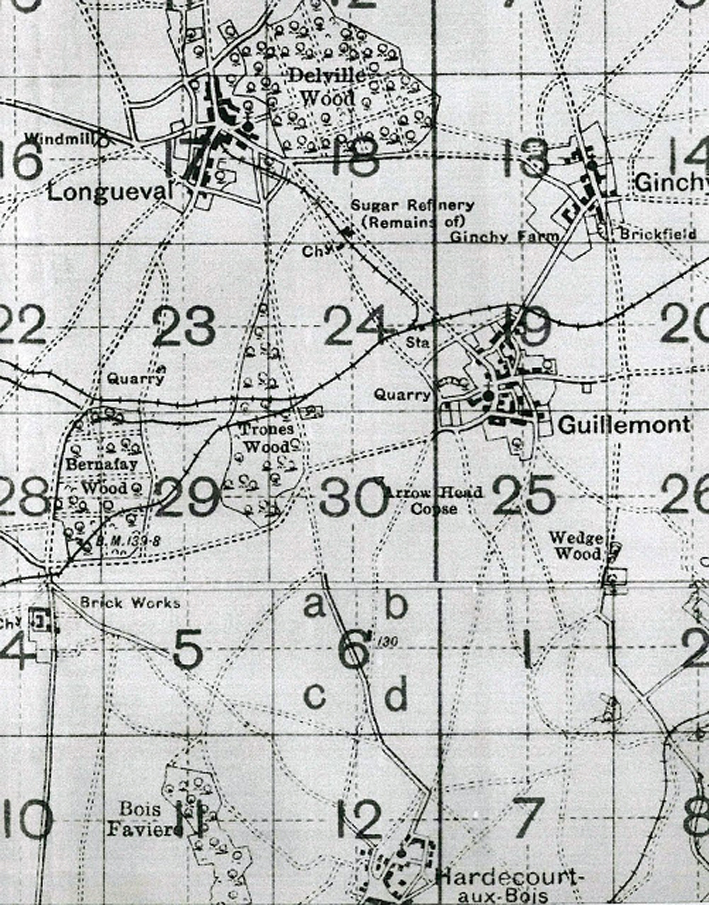 I made the men lie down a little way from the wood, and then ensued a battle of bombs between our men and theirs, and finally we knocked out the machine guns and some Huns and got a footing in the corner of the wood. We then bombed the dug-outs and took 12 prisoners.
I made the men lie down a little way from the wood, and then ensued a battle of bombs between our men and theirs, and finally we knocked out the machine guns and some Huns and got a footing in the corner of the wood. We then bombed the dug-outs and took 12 prisoners.
I am sorry to say G----, one of the bravest and most gallant subalterns was shot on my left, and all his platoon, except two sergeants and two men, at point blank range as they tried to enter the wood. Several of my platoon and I were binding up some of their men, but were sniped at all the time, and it became so hit, also losing two men in doing that that I made them give it up.
We then bombed along the German trench up to the wood and came on a very strong point, a battery of big guns, and things were so hot I retired the men again. I had some marvellous escapes, several bullets going right through a tree I was leaning against. I lost five men in this attempt.
We retired to south-west corner, where we had entered, and met Capt W---- and his company. We decided to join my men to his and thoroughly consolidate the corner of the wood, as we had two of our companies in the north-east corner and south-east corner of the wood digging themselves in.
The north-east corner was supposed to be my objective. My company commander, with 20 men, and P----, with ten men, were the only ones of the company to get there. B---- was cut off in the north-east corner for four hours, with Huns behind and in front of him, or in other words, surrounded. He made a marvellously cool and gradual retreat, and brought most of his and P----'s men back to where I was, losing his sergeant-major and orderly. By the way, B---- is to receive the D.S.O., I understand, for this.
I made up another bombing party to try and reinforce B---- and get to my objective, and lost five more men near the Huns' strong point, and so gave up the attempt, reasoning that 30 lilve men holding south-east corner of the wood would be better than arriving at B----'s with two or three, and the chances were that none of us would arrive. It was a wonderful presentiment, for while I was making this second endeavour B---- was retiring. I sent up orderlies to him giving details of my moves and plans, but they did not return.
'A' Company had got to their objective and started digging in. Capt T---- and a patrol went out to find the German strong point near them, also F----, one of our officers from the 4th Battalion. T---- was immediately wounded and several of his platoon hit, so he and F---- are both missing. We hope they are prisoners - not killed, as the woods are now in the hands of the British and nothing has been seen of their bodies.
I never in my life spent such a long, tedious and anxious day. The next day we dug a trench across the wood, having gained some of the wood, and consolidated our position as firm as we could. We did not lose many men after this.
In the evening we received heavy artillery bombardment from the Huns, but with few casualties, and at nightfall they made another counter-attack, which we again repulsed. At about midnight we were relieved by the West Kents. We were dead beat.
The regiment finally got out, having to go through a severe artillery barrage of the Huns, which most fortunately stopped for half an hour as we were about to leave the wood. This was a godsend - to get the battalion out without further loss.
We finally got out with five officer casualties out of 16 in action, and 230 other ranks. We are back some miles now for a week.
The Divisional Major-General inspected the brigade yesterday, and thanked us and congratulated us on our stand. We have received congratulations from all, including Sir Douglas Haig and the King.
[The Beds & Herts Saturday Telegraph: July 29th, 1916]
Bedfordshire and Luton Archives and Records Service is carrying daily Somme reports from Bedfordshire Regiment diaries on http://bedsatwar.blogspot.co.uk/ . The map above is included in the blogs.
- Deejaya's blog
- Log in or register to post comments
The Hundred Days Offensive
Event Start and End Date:
The Hundred Days Offensive was the final period of the First World War, during which the Allies launched a series of offensives against the Central Powers on the Western Front from 8 August to 11 November 1918, beginning with the Battle of Amiens. The offensive essentially pushed the Germans out of France, forcing them to retreat beyond the Hindenburg Line, and was followed by an armistice. The term "Hundred Days Offensive" does not refer to a specific battle or unified strategy, but rather the rapid series of Allied victories starting with the Battle of Amiens.
|
|||||||
| Belligerents | |||||||
|---|---|---|---|---|---|---|---|
 France France
|
 German Empire German Empire
|
||||||
| Commanders and leaders | |||||||
 Ferdinand Foch Ferdinand Foch Philippe Pétain Philippe Pétain Douglas Haig Douglas Haig Henry Rawlinson Henry Rawlinson Julian Byng Julian Byng Arthur Currie Arthur Currie John Monash John Monash John J. Pershing John J. Pershing King Albert I King Albert I
|
 Erich Ludendorff Erich Ludendorff Georg von der Marwitz Georg von der Marwitz |
||||||
| Casualties and losses | |||||||
| Killed, wounded and prisoners: 531,000 French 411,636 British Empire 127,000 American Total: 1,070,000 |
Killed and wounded: 785,733 Total prisoners: 386,342 Total: 1,172,075 British forces took 188,700 prisoners and captured 2,840 guns |
||||||
Background
The German Spring Offensives on the Western Front, which began on 21 March 1918 with Operation Michael, had petered out by July. The Germans had advanced to the Marne River but failed to achieve a decisive breakthrough. When Operation Marne-Rheims ended in July, the Allied supreme commander, the French Ferdinand Foch, ordered a counter-offensive which became the Second Battle of the Marne. The Germans, recognising their untenable position, withdrew from the Marne towards the north. For this victory, Foch was granted the title Marshal of France.
Foch considered the time had arrived for the Allies to return to the offensive. The American Expeditionary Force was now present in France in large numbers, and their presence invigorated the Allied armies.Their commander, General John J. Pershing, was keen to use his army in an independent role. The British Army had also been reinforced by large numbers of troops returned from campaigns in Palestine and Italy, and large numbers of replacements previously held back in Britain by Prime Minister David Lloyd George.
A number of proposals were considered, and finally Foch agreed on a proposal by Field Marshal Douglas Haig, the commander of the British Expeditionary Force (BEF), to strike on the Somme, east of Amiens and southwest of the 1916 battlefield of the Battle of the Somme, with the intention of forcing the Germans away from the vital Amiens-Paris railway.The Somme was chosen as a suitable site for the offensive for several reasons. As in 1916, it marked the boundary between the BEF and the French armies, in this case defined by the Amiens-Roye road, allowing the two armies to cooperate. Also the Picardy countryside provided a good surface for tanks, which was not the case in Flanders. Finally, the German defenses, manned by the German Second Army of General Georg von der Marwitz, were relatively weak, having been subjected to continual raiding by the Australians in a process termed peaceful penetration.
Initial battles
Amiens
Through careful preparations, the Allies achieved complete surprise. The attack, spearheaded by the British Fourth Army, broke through the German lines, and tanks attacked German rear positions, sowing panic and confusion. By the end of the day, a gap 15 mi (24 km) long had been created in the German line south of the Somme. The Allies had taken 17,000 prisoners and captured 330 guns. Total German losses were estimated to be 30,000 on 8 August, while the Allies had suffered about 6,500 killed, wounded and missing. The collapse in German morale led Erich Ludendorff to dub it "the Black Day of the German Army".
The advance continued for three more days but without the spectacular results of 8 August, since the rapid advance outran the supporting artillery and ran short of supplies. During those three days, the Allies had managed to gain 12 mi (19 km), but most of that had occurred on the first day, as a result of the Germans adding reinforcements. On 10 August, the Germans began to pull out of the salient that they had managed to occupy during Operation Michael in March, back towards the Hindenburg Line.
Somme
On 15 August 1918, Foch demanded that Haig continue the Amiens offensive, even though the attack was faltering as the troops outran their supplies and artillery, and German reserves were being moved to the sector. Haig refused, and instead prepared to launch a fresh offensive by the British Third Army at Albert (the Battle of Albert), which opened on 21 August.
The offensive was a success, pushing the German Second Army back over a 34 mi (55 km) front. Albert was captured on 22 August. The attack was widened on the south, by the French 10th Army starting the Second Battle of Noyon on 17 August, capturing the town of Noyon on 29 August. On 26 August, to the north of the initial attack, the British First Army widened the attack by another 7 mi (11 km) with the Second Battle of Arras of 1918. Bapaume fell on 29 August (during the Second battle of Bapaume).
Advance to the Hindenburg Line
With the front line broken, a number of battles took place as the Allies forced the Germans back to the Hindenburg Line.
East of Amiens (after the Battle of Amiens), with artillery brought forward and munitions replenished, the British Fourth Army also resumed its advance, with the Australian Corps crossed the Somme River on the night of 31 August, breaking the German lines during the Battle of Mont St. Quentin. On 26 August, to the north of the Somme, the British First Army widened the attack by another 7 mi (11 km) with the Second Battle of Arras of 1918, which includes the Battle of the Scarpe (1918) (26 August) and the Battle of Drocourt-Queant (2 September).
South of the British Expeditionary Forces, the French First Army approached the Hindenburg Line on the outskirts of Saint Quentin during the Battle of Savy-Dallon (10 September), and the French Tenth Army approached the Hindenburg Line near Laon during the Battle of Vauxaillon (14 September). The British 4th Army approached the Hindenburg Line along the St Quentin Canal during the Battle of Épehy (18 September).
By 2 September, the Germans had been forced back close to the Hindenburg Line, from which they had launched their offensive in the spring.
Battles of the Hindenburg Line
Foch now planned a series of great concentric attacks on the German lines in France (sometimes referred to as the "Grand Offensive"), with the various axes of advance designed to cut the Germans' lateral means of communications, intending that the success of a single attack would enable the entire front line to be advanced.
The main German defences were anchored on the Hindenburg Line, a series of defensive fortifications stretching from Cerny on the Aisne River to Arras. Before Foch's main offensive was launched, the remaining German salients west and east of the line were crushed at Havrincourt and St Mihiel on 12 September; and at Epehy and Canal du Nord on 27 September.
The first attack of Foch's "Grand Offensive" was launched on 26 September by French and American Expeditionary Forces in the Meuse-Argonne Offensive — this offensive also includes the Battle of Somme-Py (26 September), the Battle of Saint-Thierry (30 September), the Battle of Montfaucon (14-17 October) and the Battle of Chesne (1 November). The offensive involved attacking over difficult terrain, resulting in the Hindenburg Line not being broken until 17 October.
Two days later, the Army Group under Albert I of Belgium (the Belgian Army, the British Second Army under General Herbert Plumer and the French 6th Army under General Degoutte) launched an attack near Ypres in Flanders (the Fifth Battle of Ypres). Both attacks made good progress initially but were then slowed by logistical problems.
On 29 September, the central attack on the Hindenburg Line commenced, with the British 4th Army led by the Australian Corps attacking the St. Quentin Canal (the Battle of St. Quentin Canal) and the French First Army attacking fortifications outside St Quentin (the Battle of St. Quentin Canal. By 5 October, the Allies had broken through the entire depth of the Hindenburg defences over a 19 mi (31 km) front. Rawlinson wrote, "Had the Boche [Germans] not shown marked signs of deterioration during the past month, I should never have contemplated attacking the Hindenburg line. Had it been defended by the Germans of two years ago, it would certainly have been impregnable…"
This collapse forced the German High Command to accept that the war had to be ended. The evidence of failing German morale also convinced many Allied commanders and political leaders that the war could be ended in 1918; previously, all efforts had been concentrated on building up forces to mount a decisive attack in 1919.
Beyond the Hindenburg Line
Through October, the German armies retreated through the territory gained in 1914. The Allies pressed the Germans back toward the lateral railway line from Metz to Bruges (shown in the map at the head of this article), which had supplied their entire front in Northern France and Belgium for much of the war. As the Allied armies reached this line, the Germans were forced to abandon increasingly large amounts of heavy equipment and supplies, further reducing their morale and capacity to resist.Casualties remained heavy in all of the Allied fighting forces, as well as in the retreating German Army. Rearguard actions were fought during the Pursuit to the Selle (9 October), Battle of Courtrai (14 October), Battle of Mont-D’Origny (15 October), Battle of the Selle (17 October), Battle of Lys and Escaut (20 October) (including the subsidiary Battle of the Lys and Battle of the Escaut), Battle of the Serre (20 October), Battle of Valenciennes (1 November) and the Battle of the Sambre (including the Second Battle of Guise (4 November) and the Battle of Thiérache (4 November), with fighting continuing until the last minutes before the Armistice took effect at 11:00 on 11 November 1918. One of the last soldiers to die was Canadian Private George Lawrence Price, two minutes before the armistice took effect.





